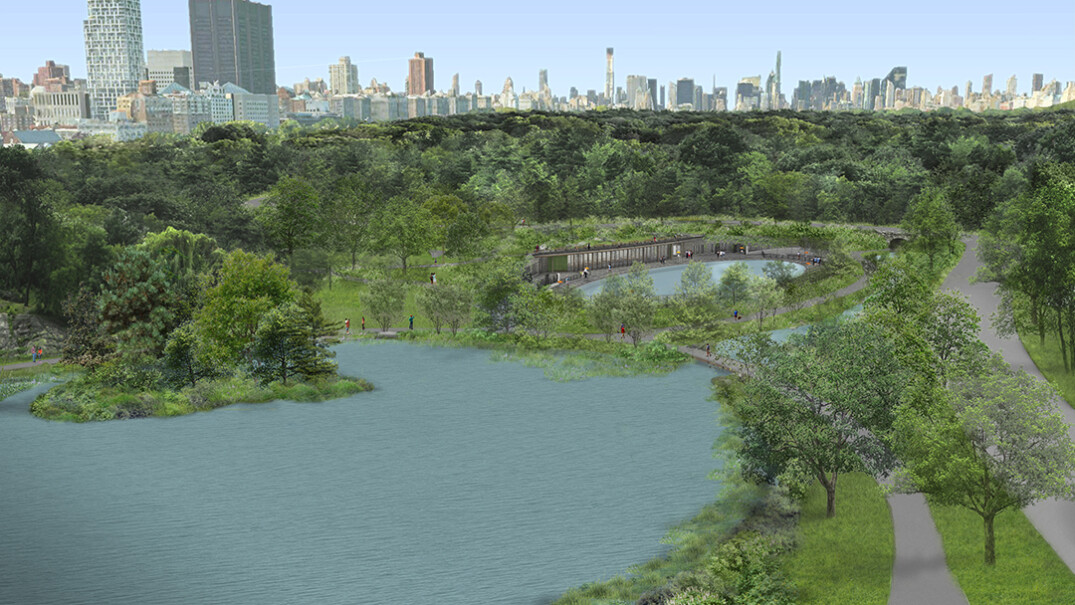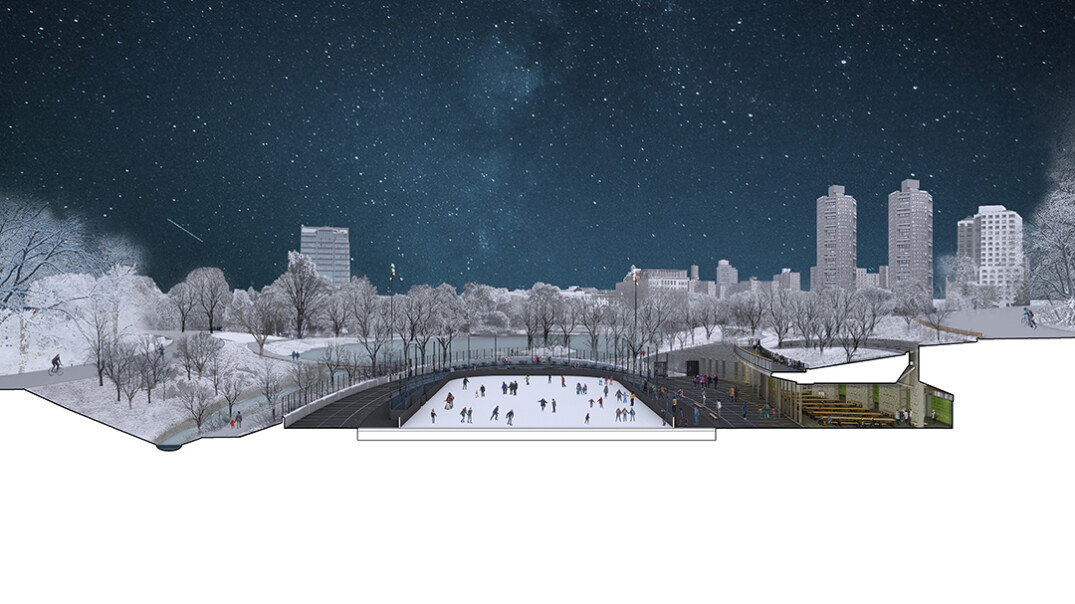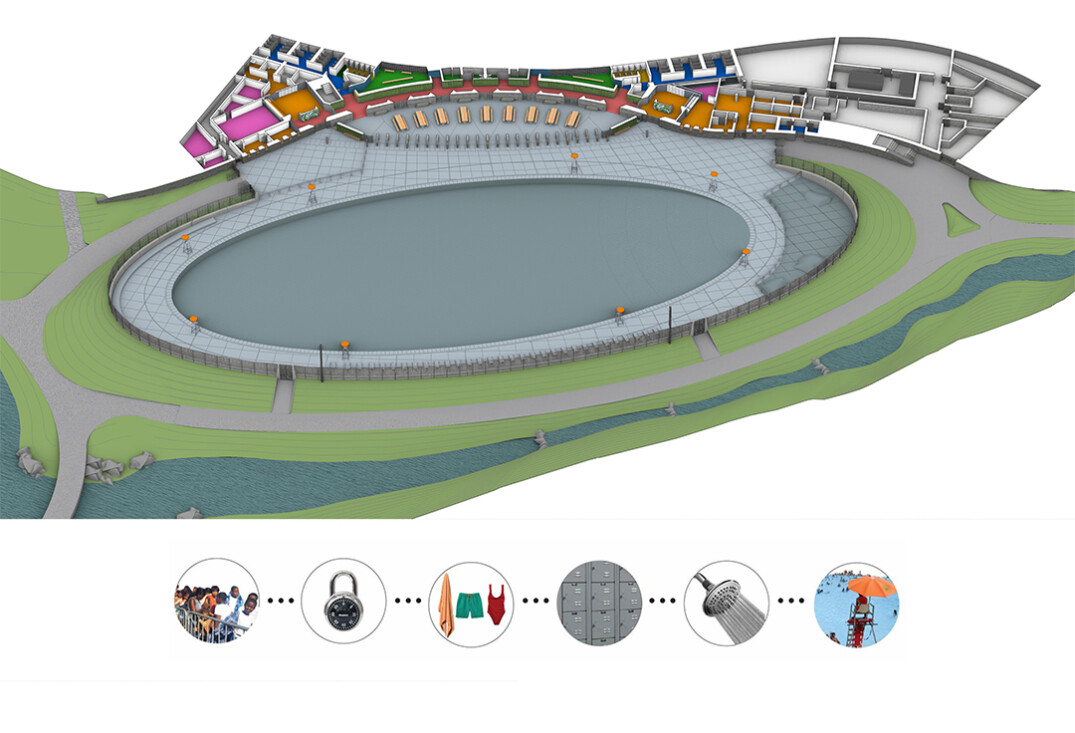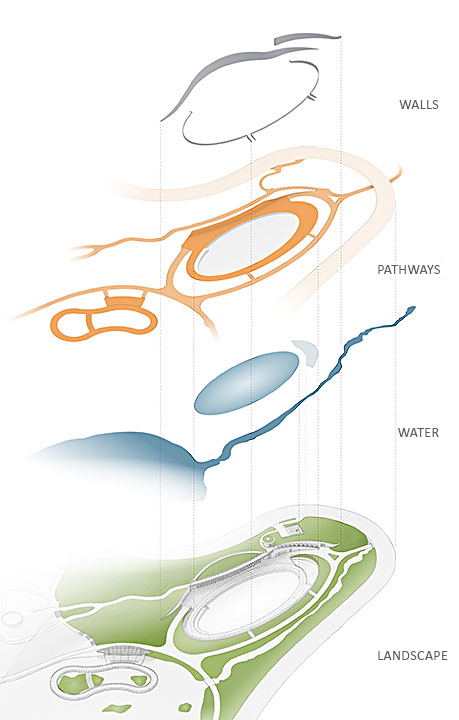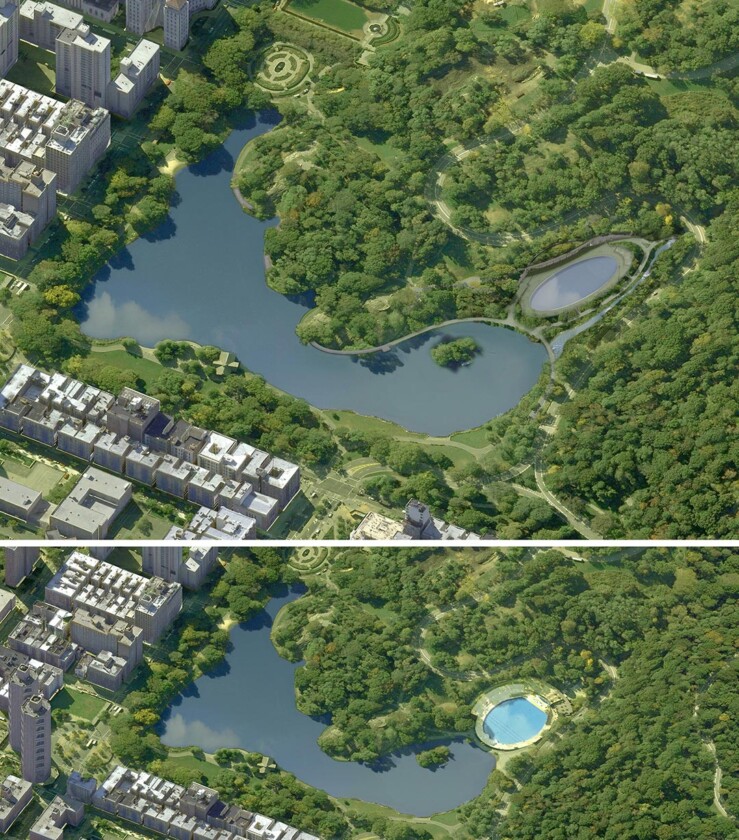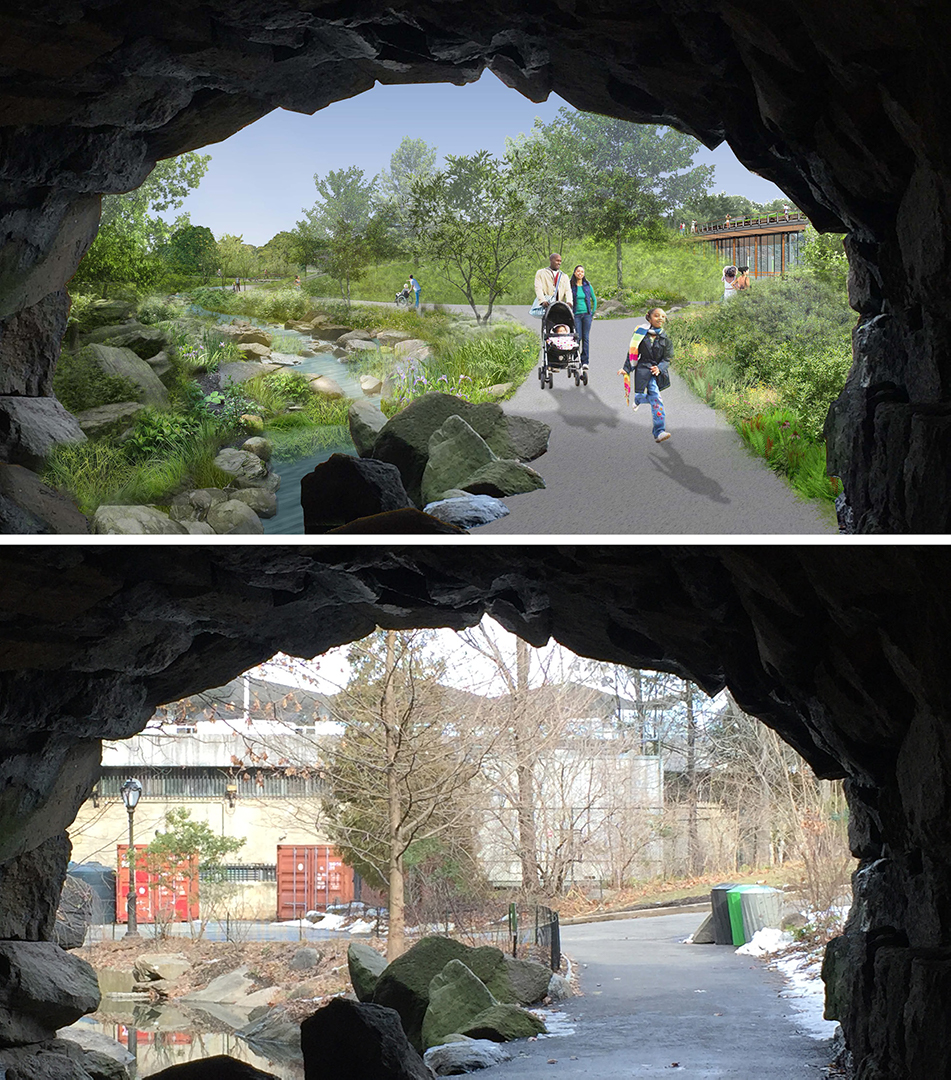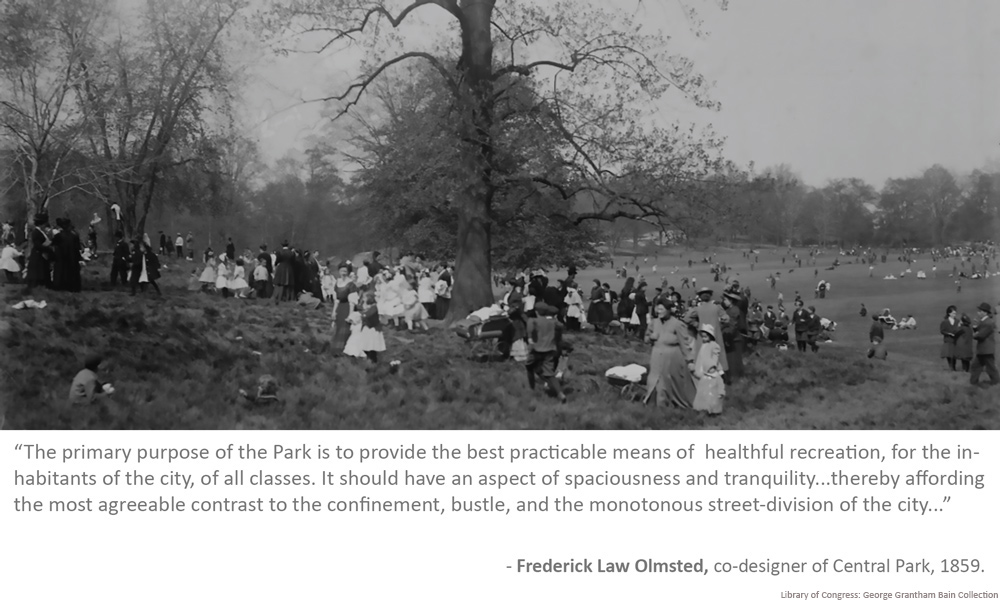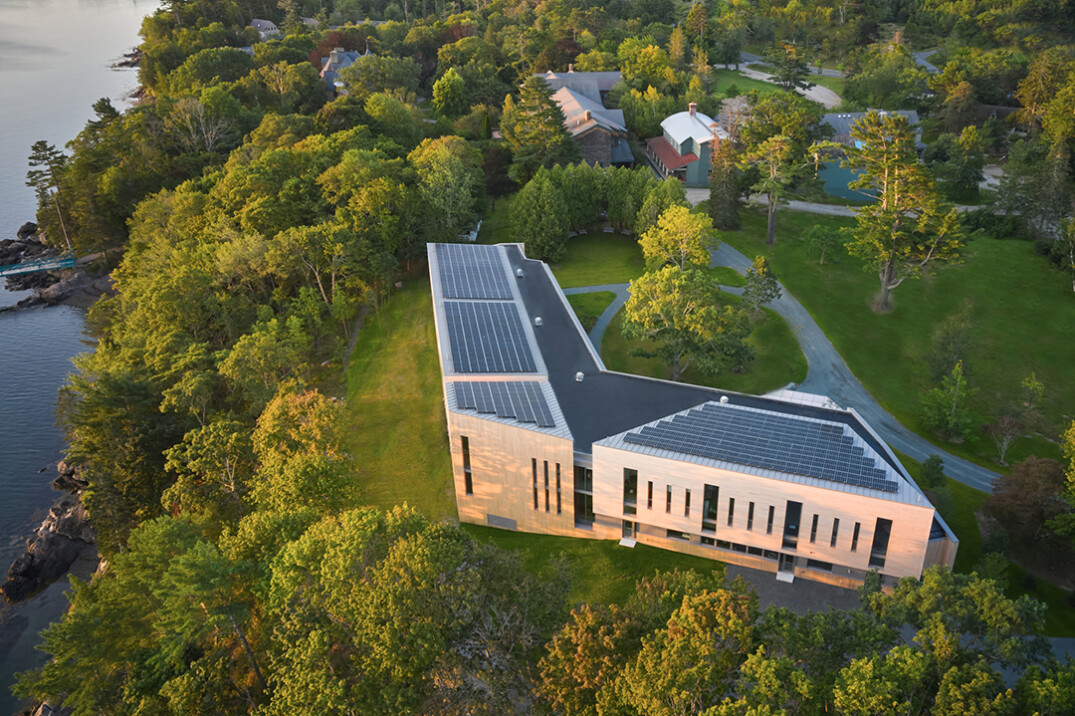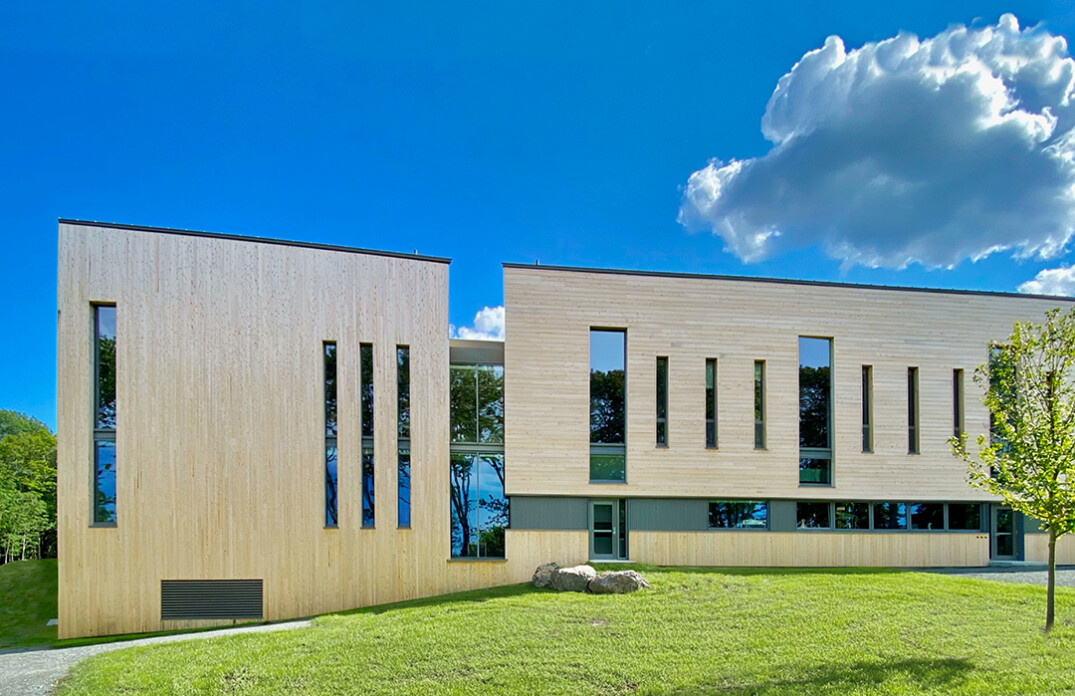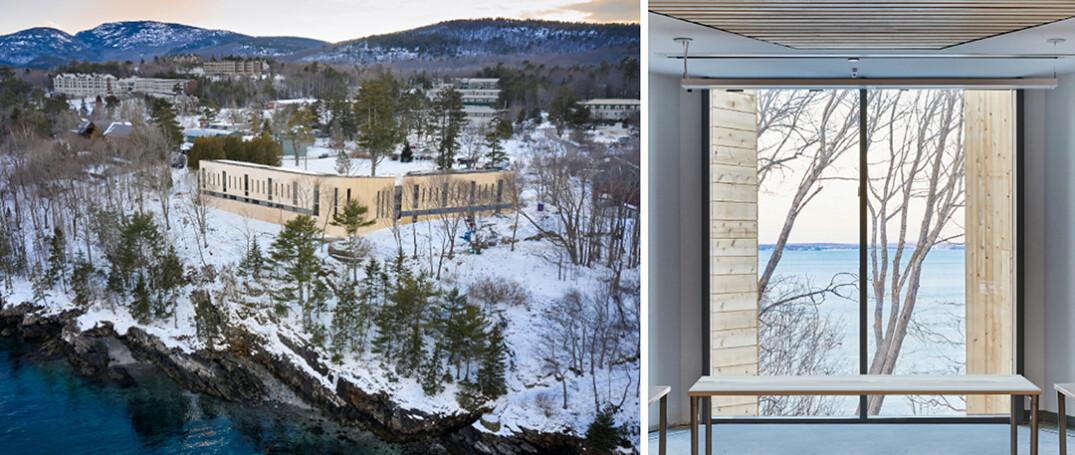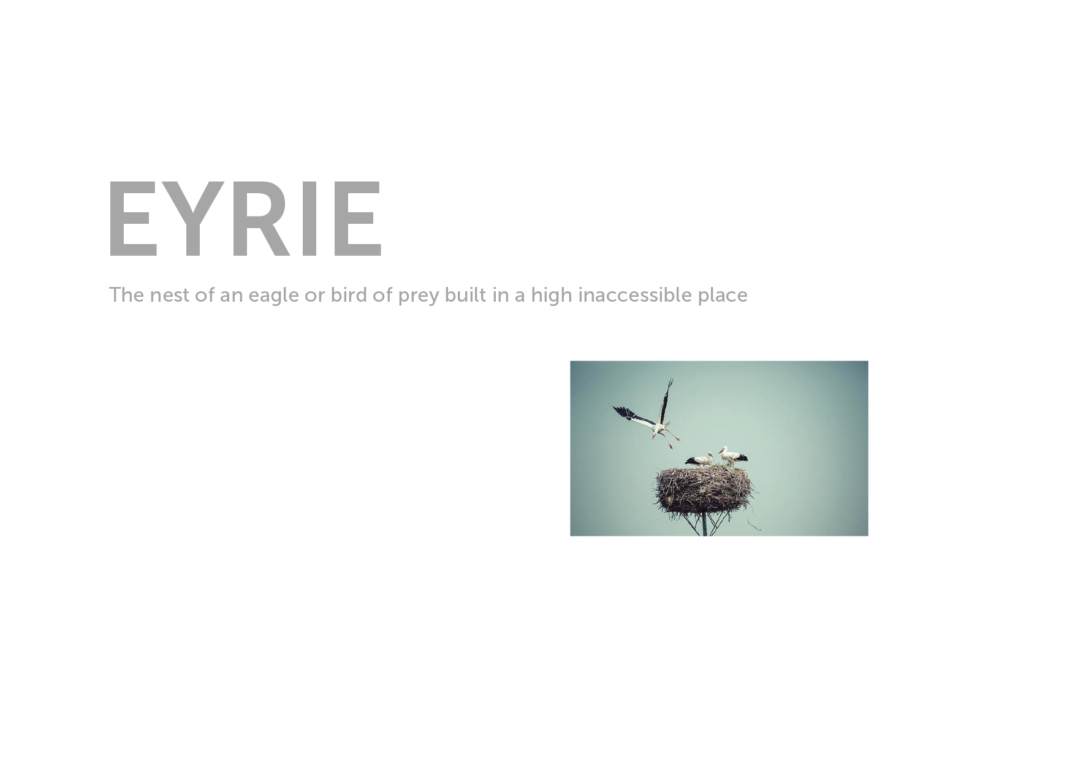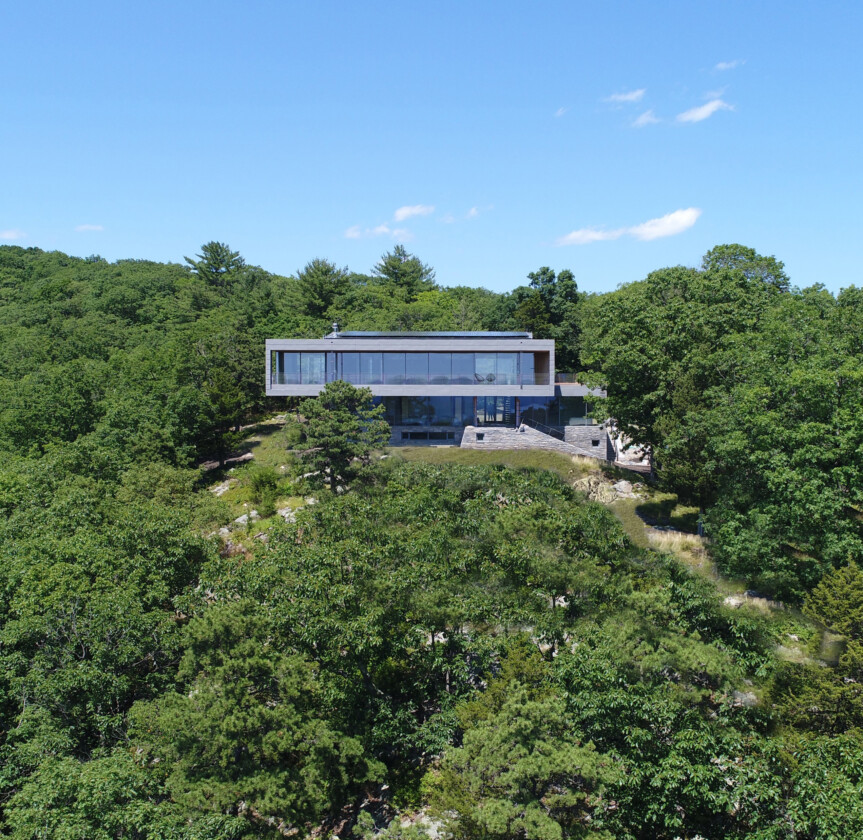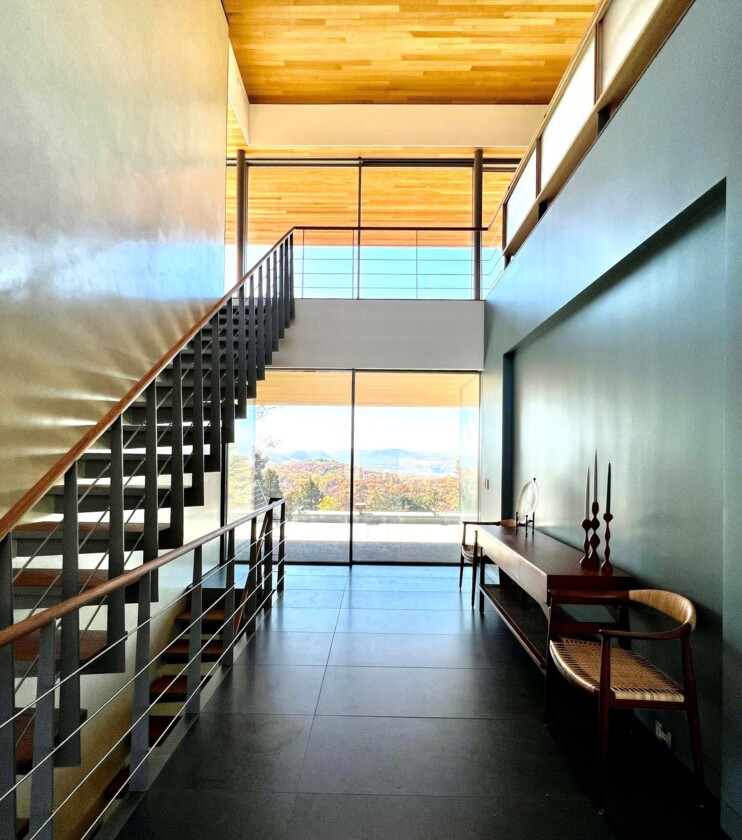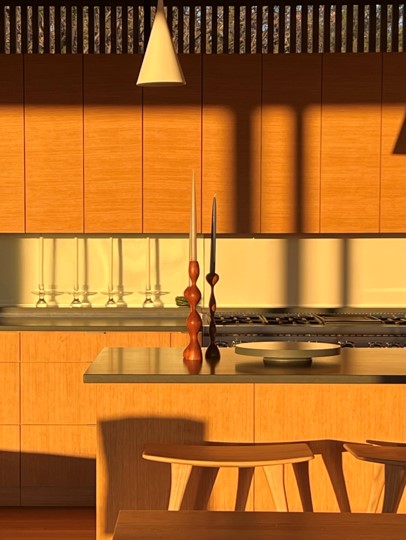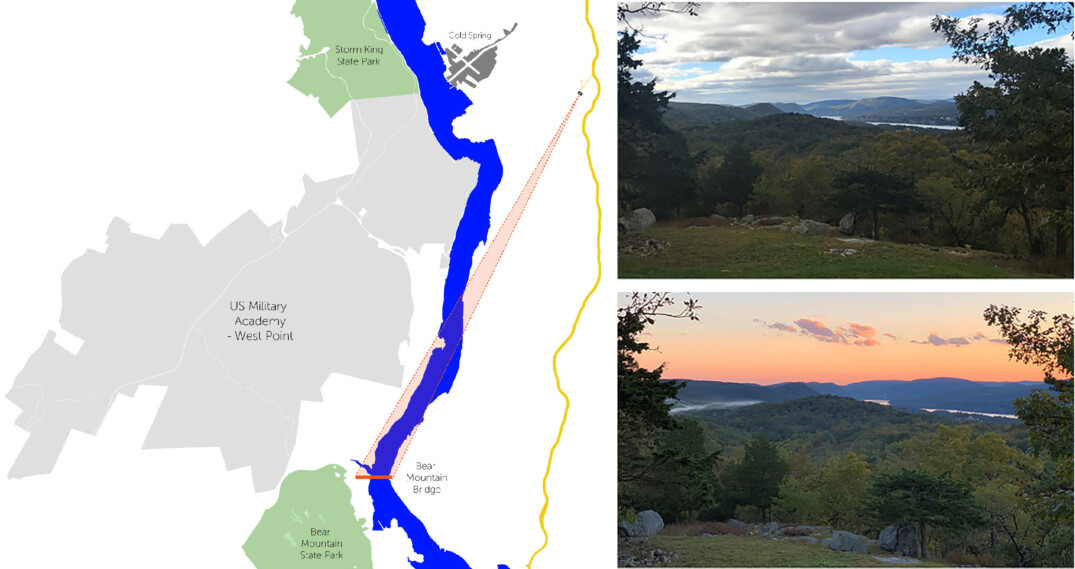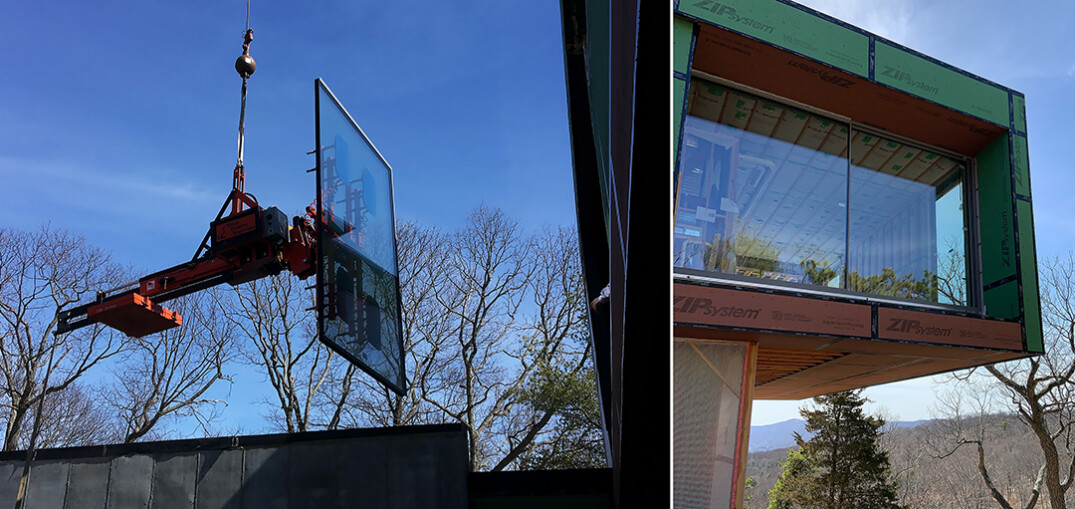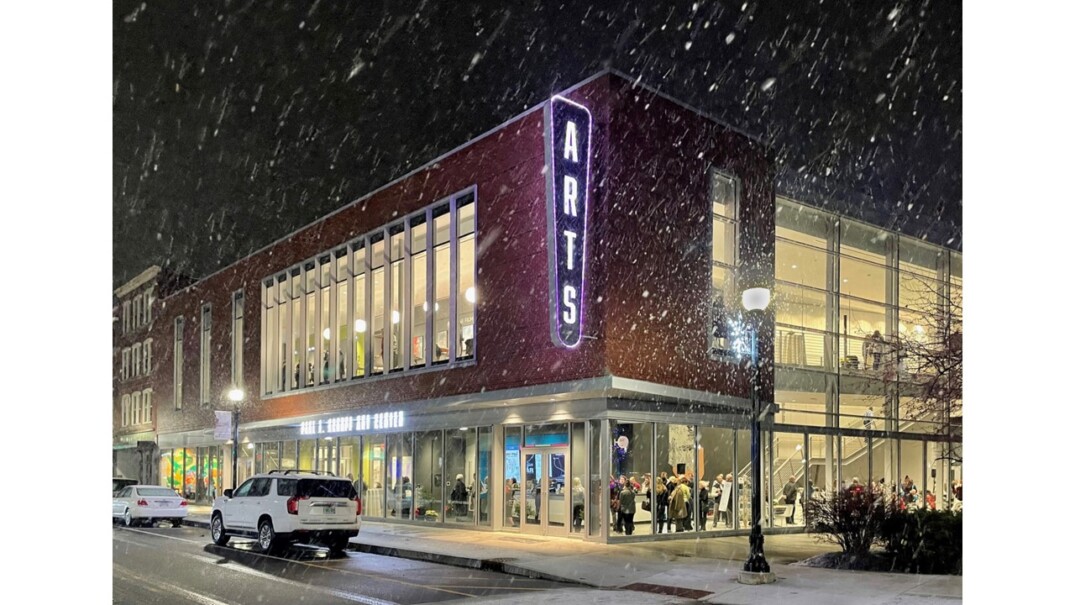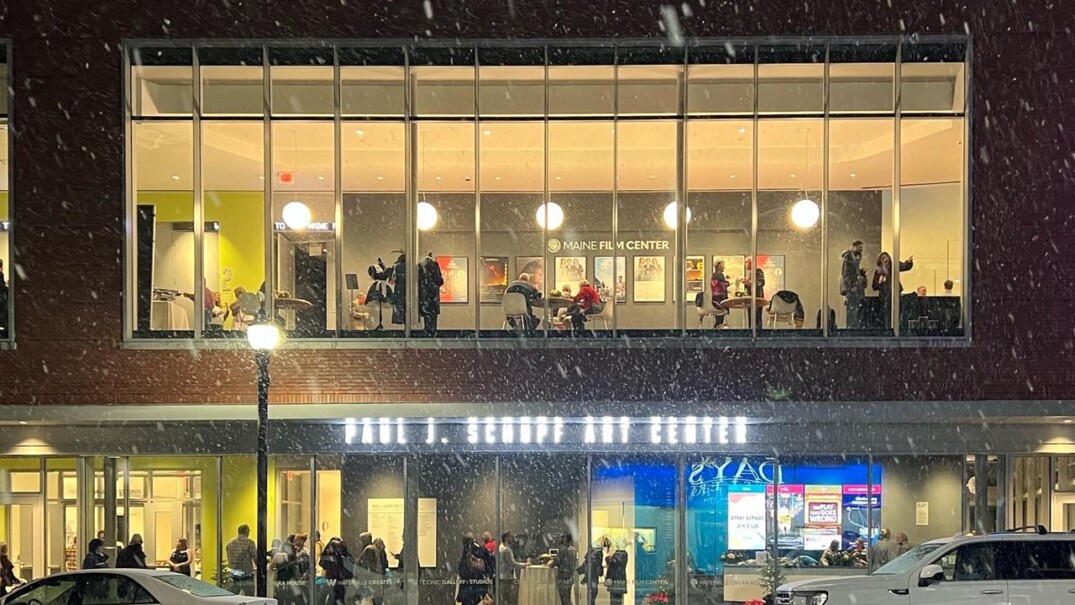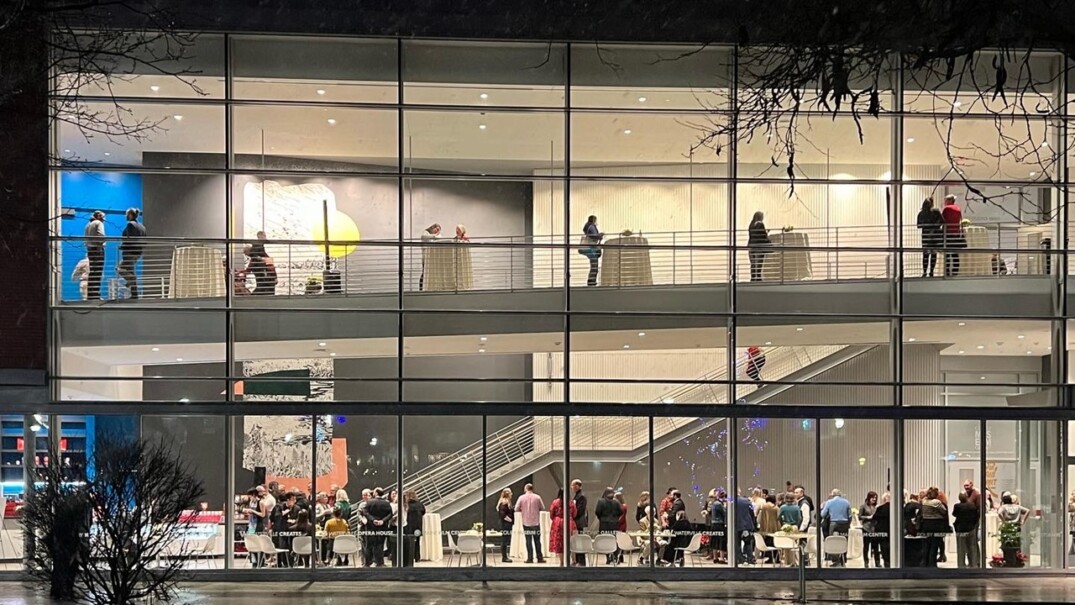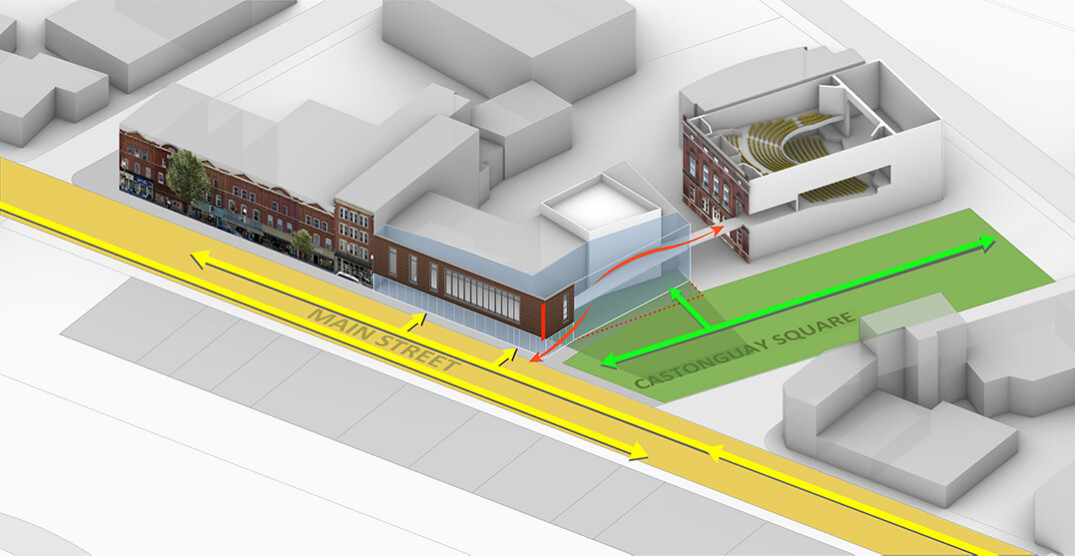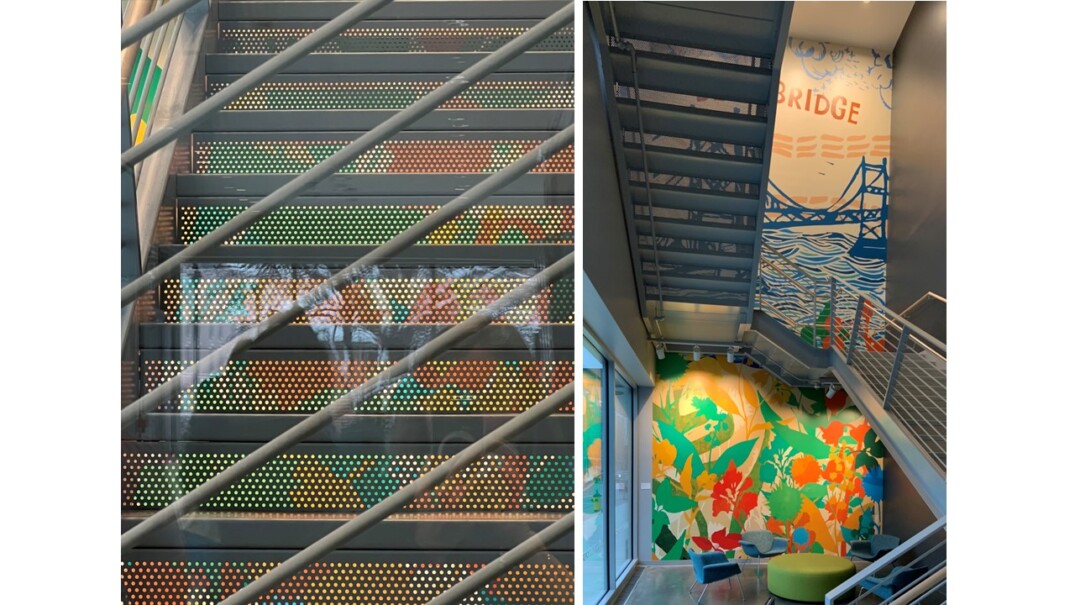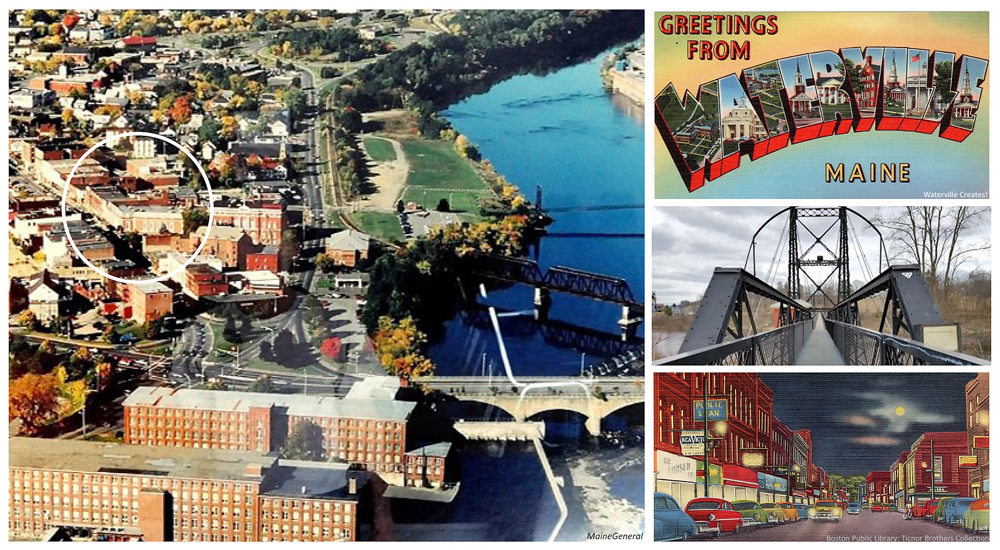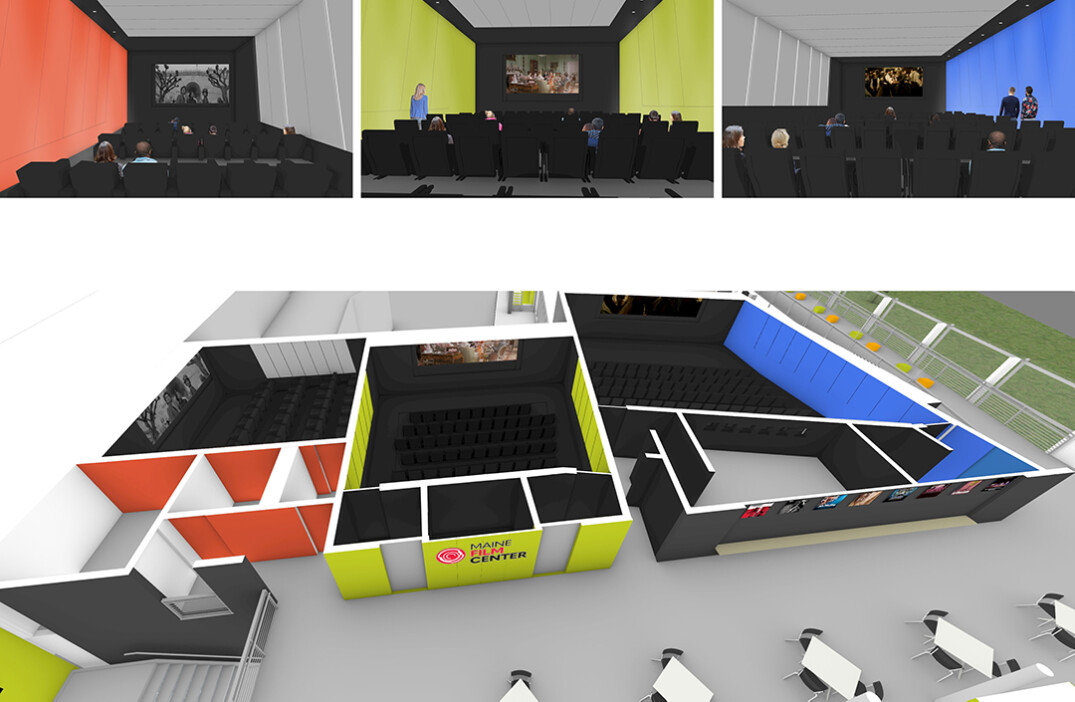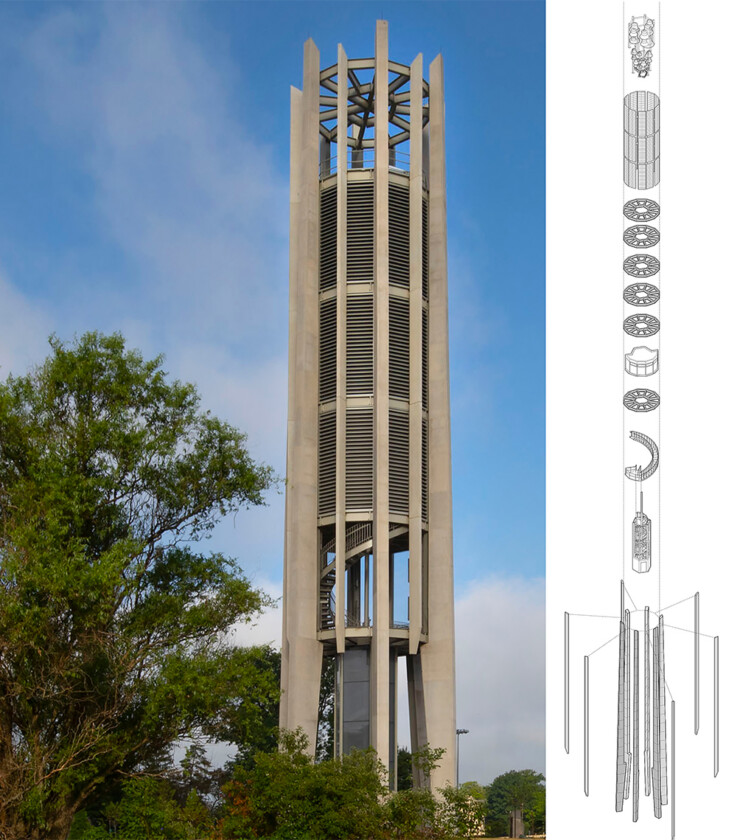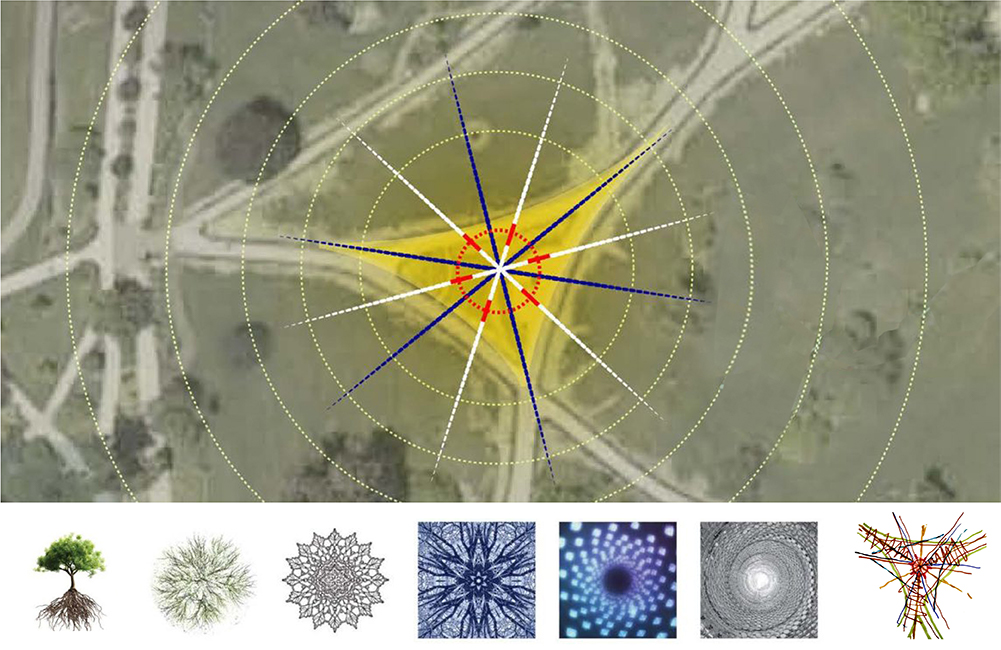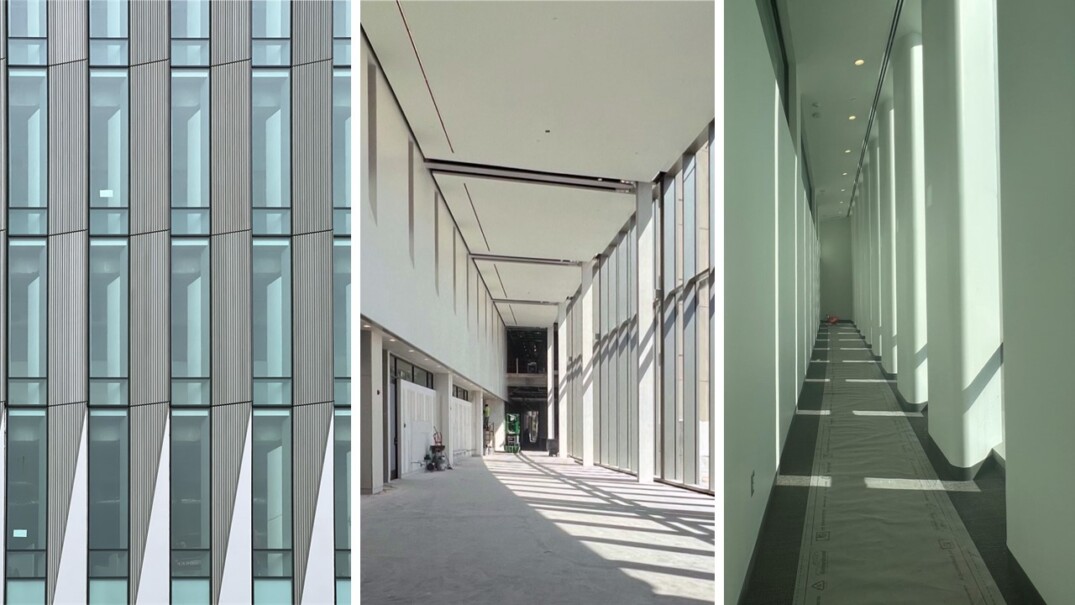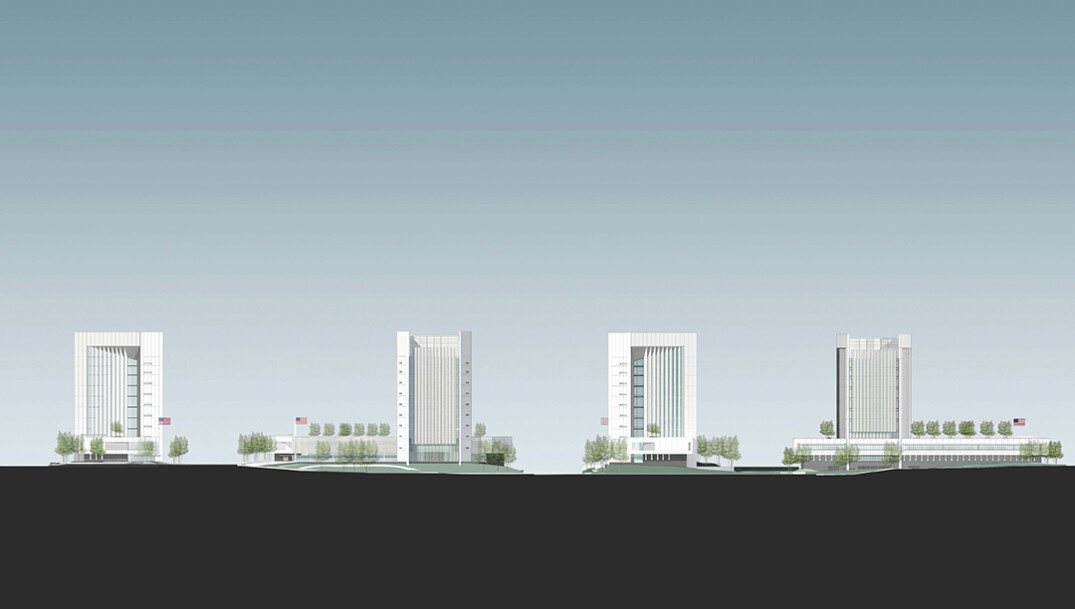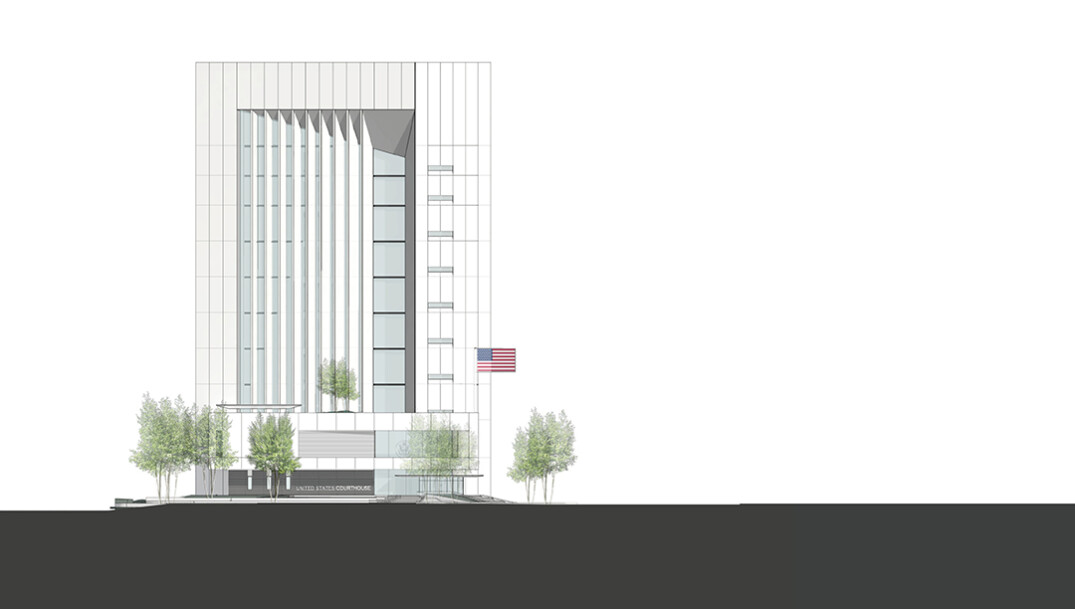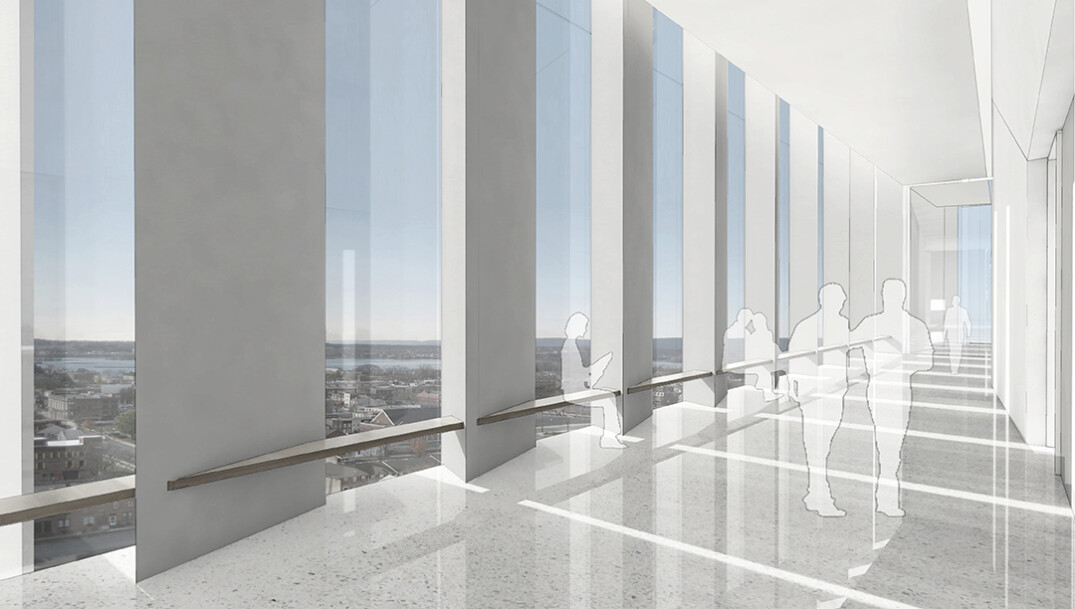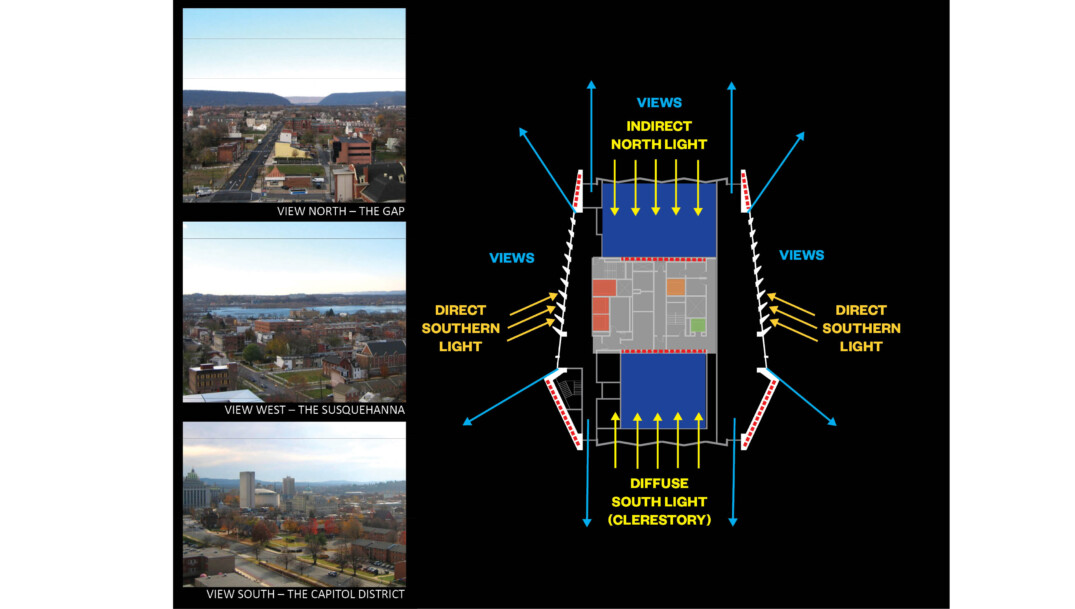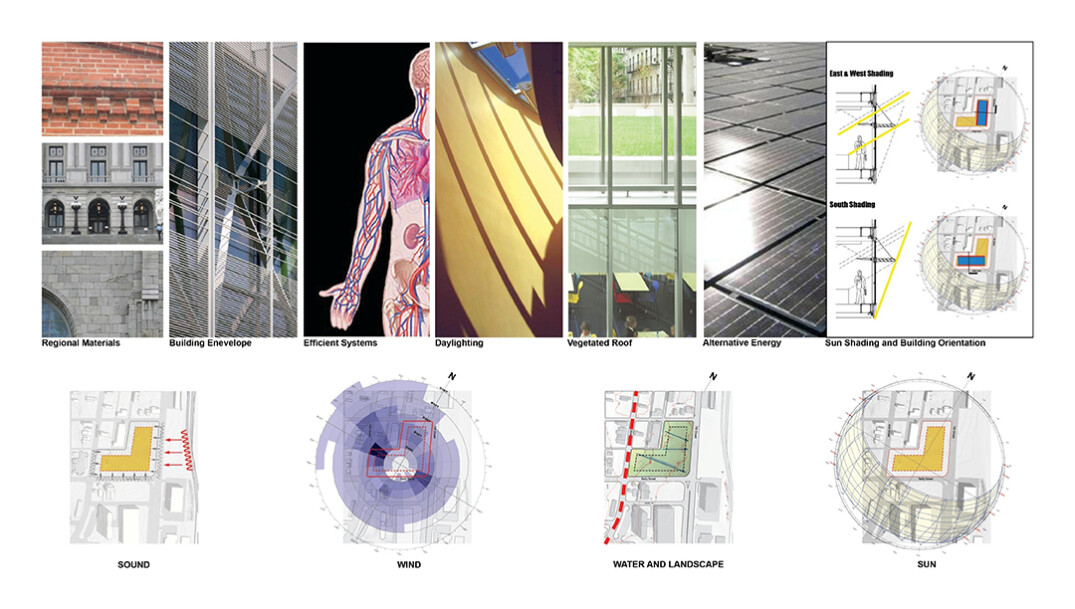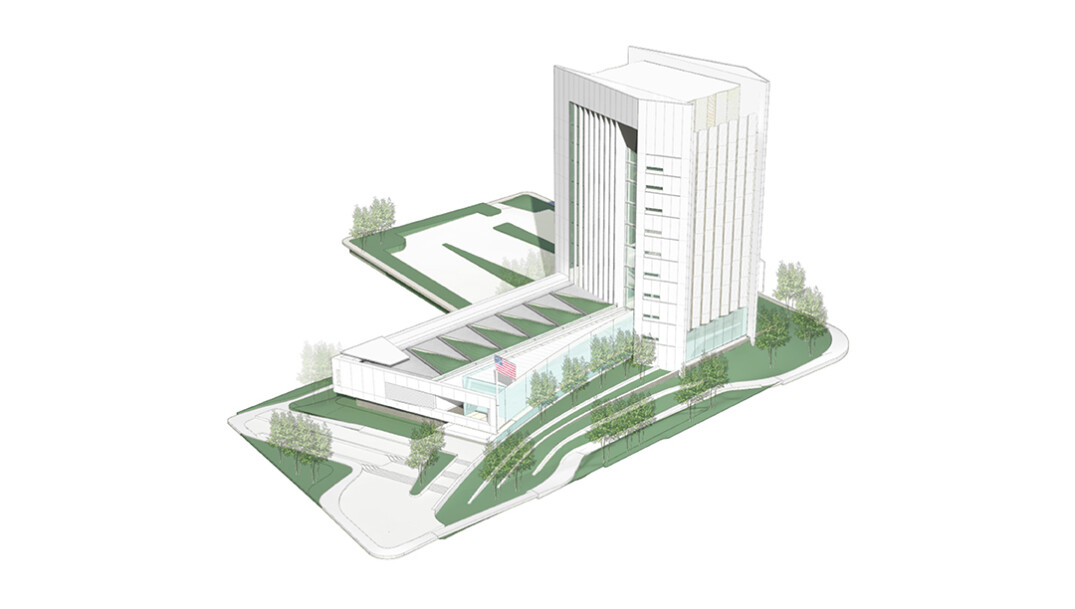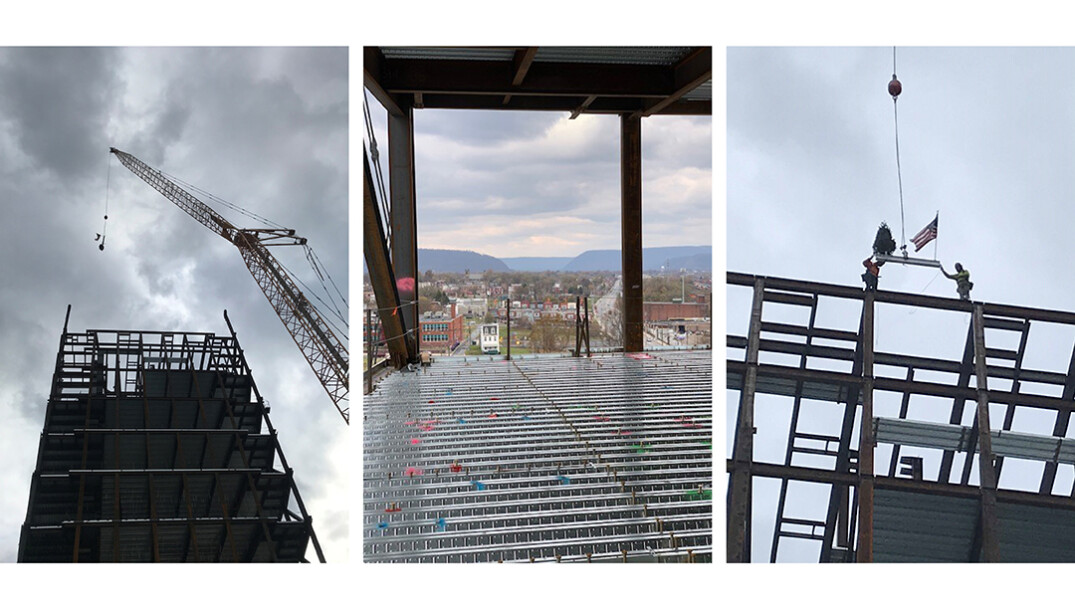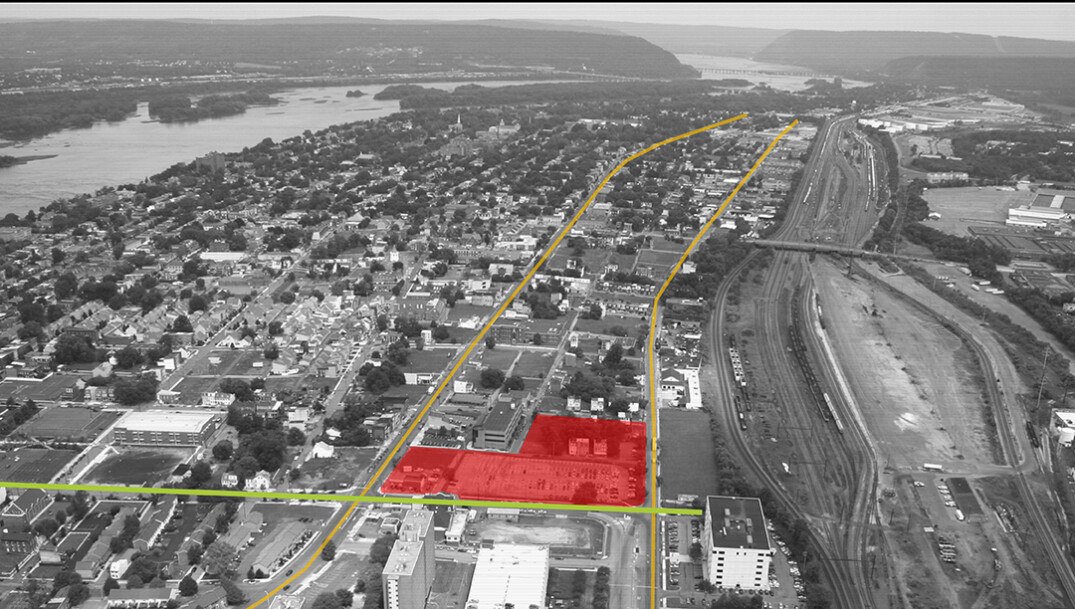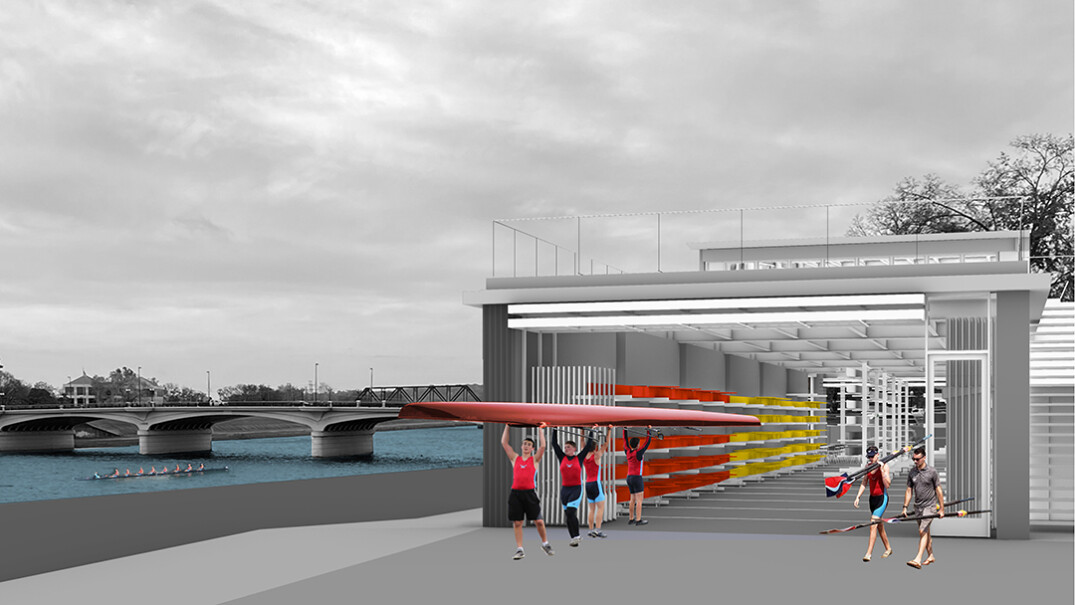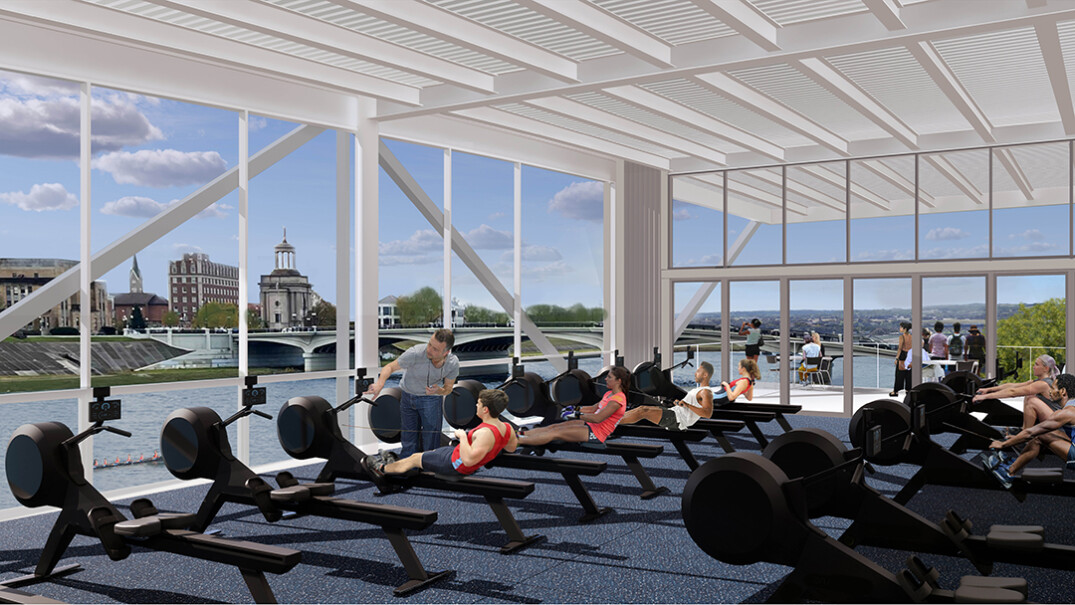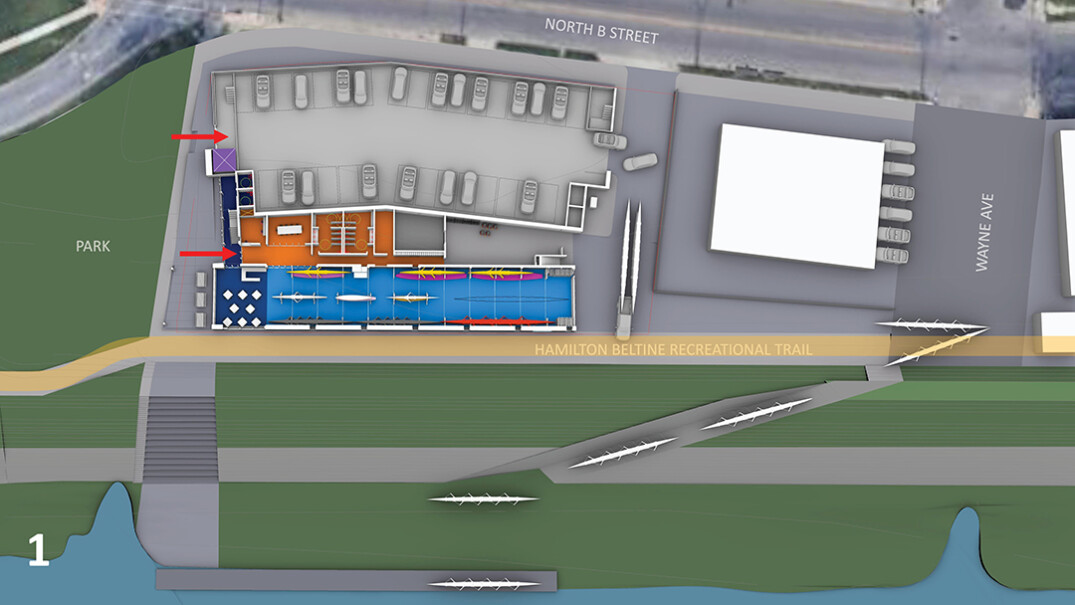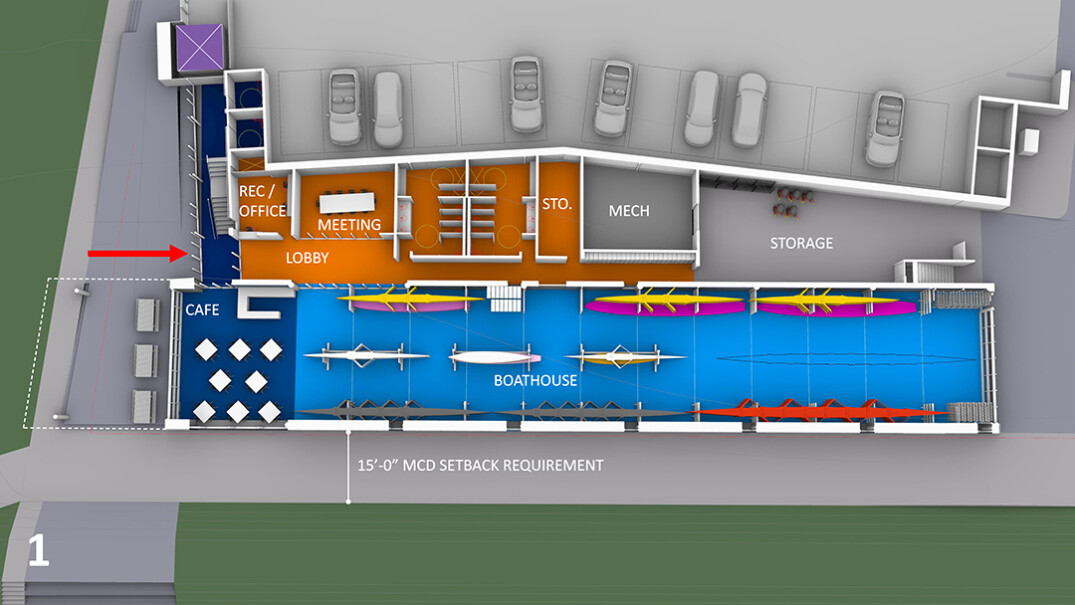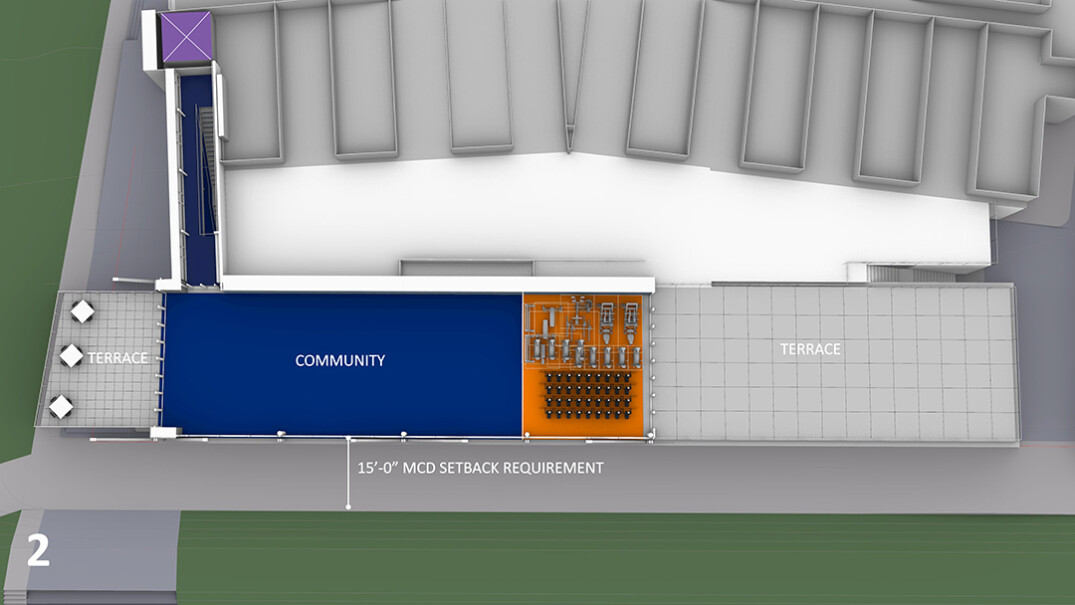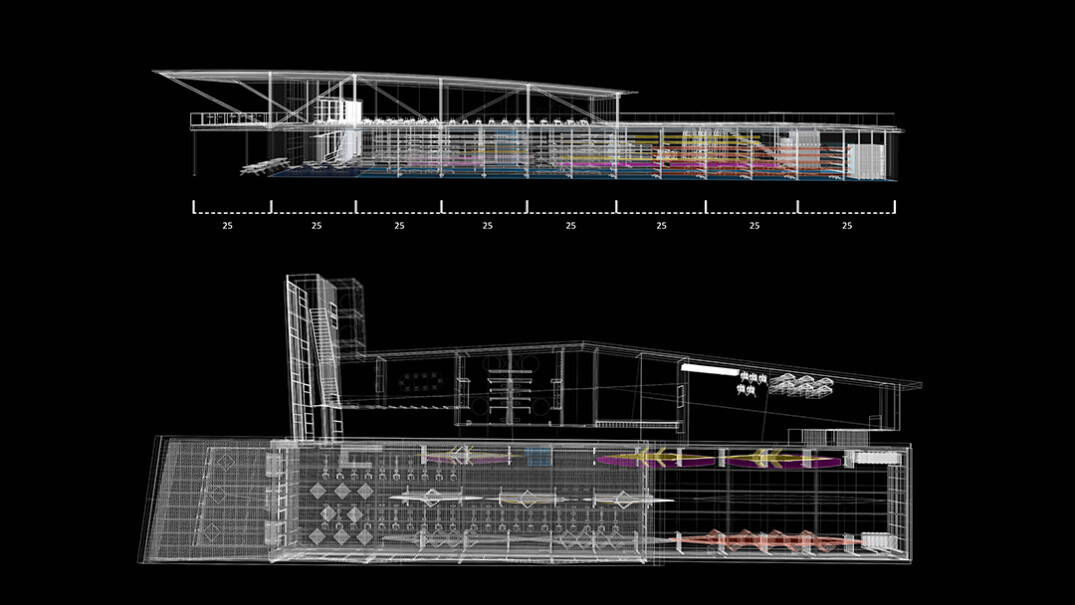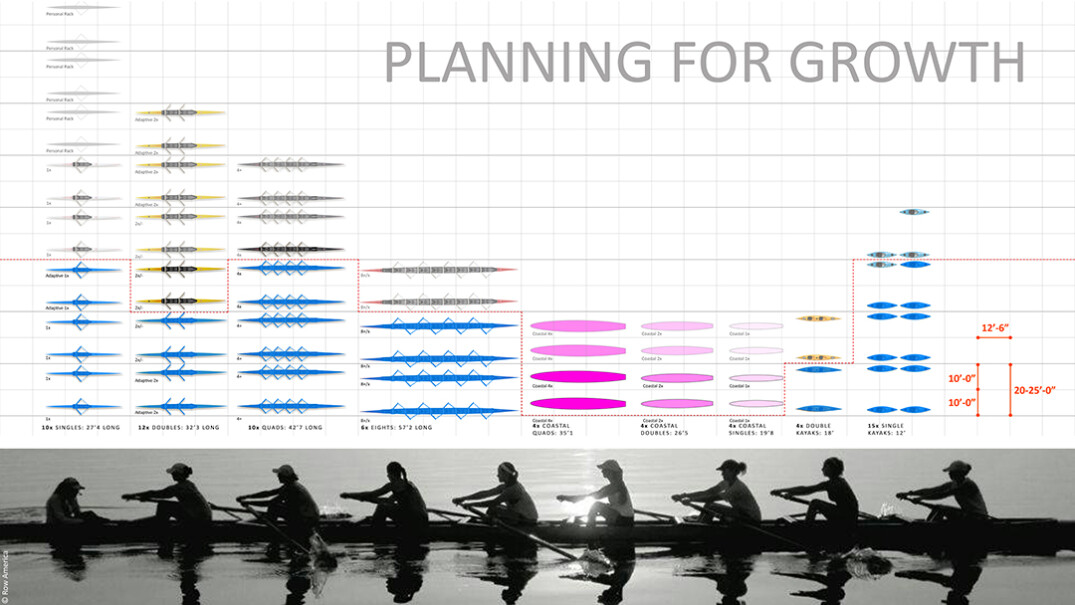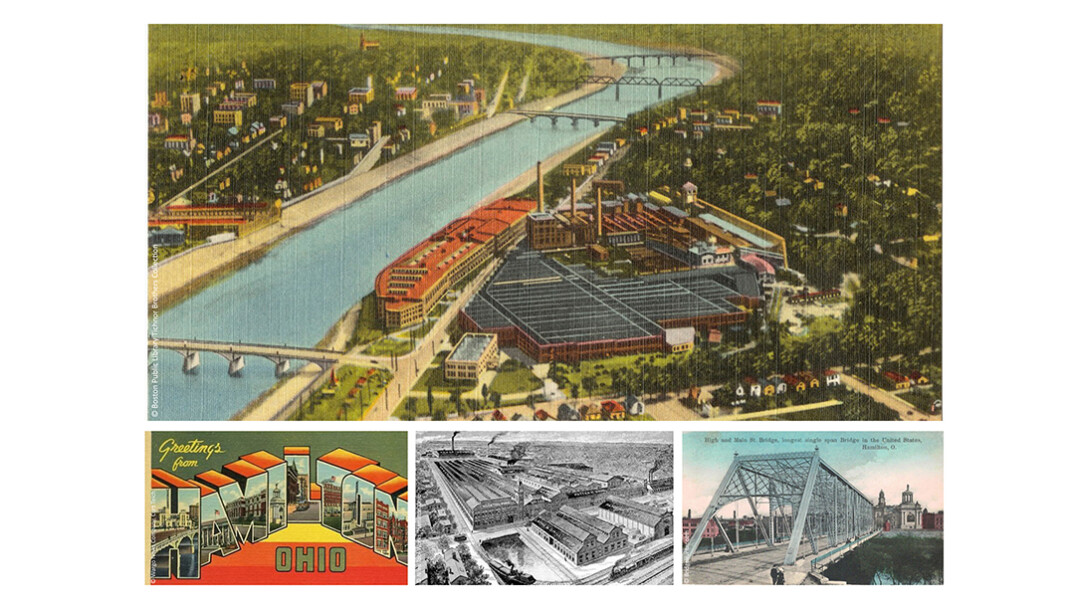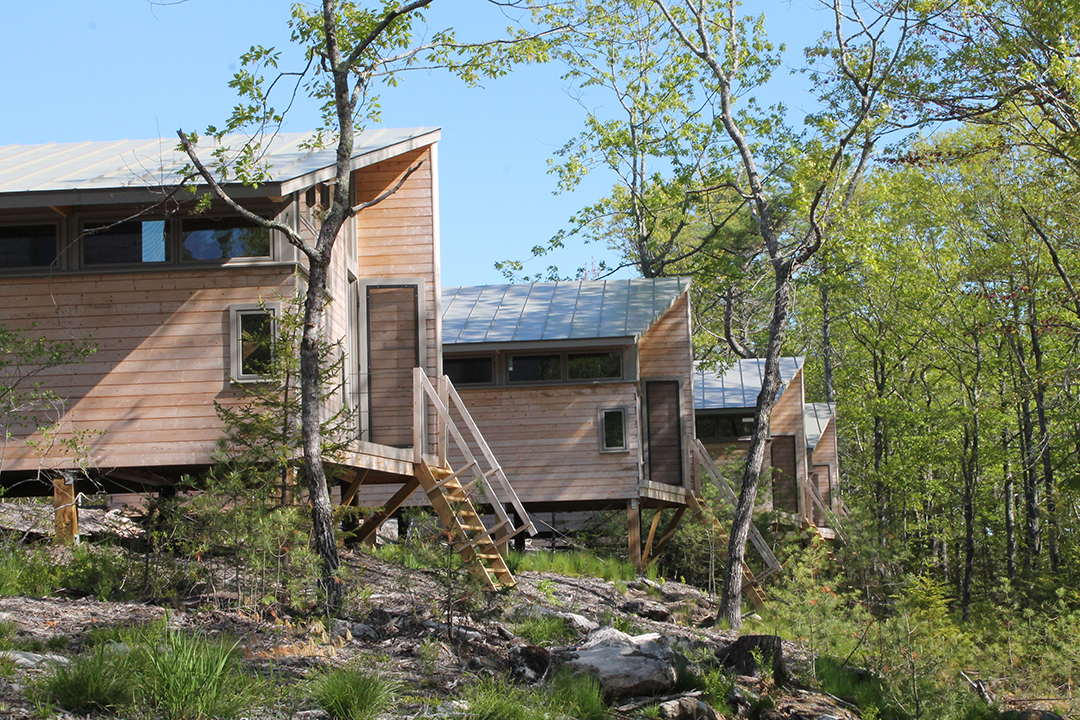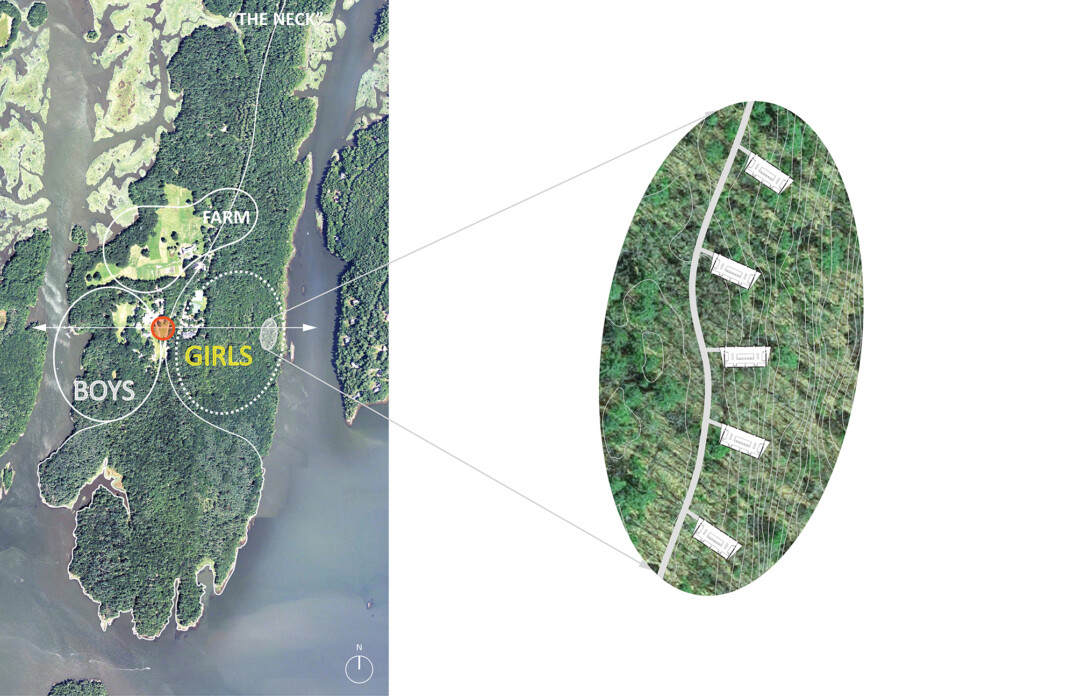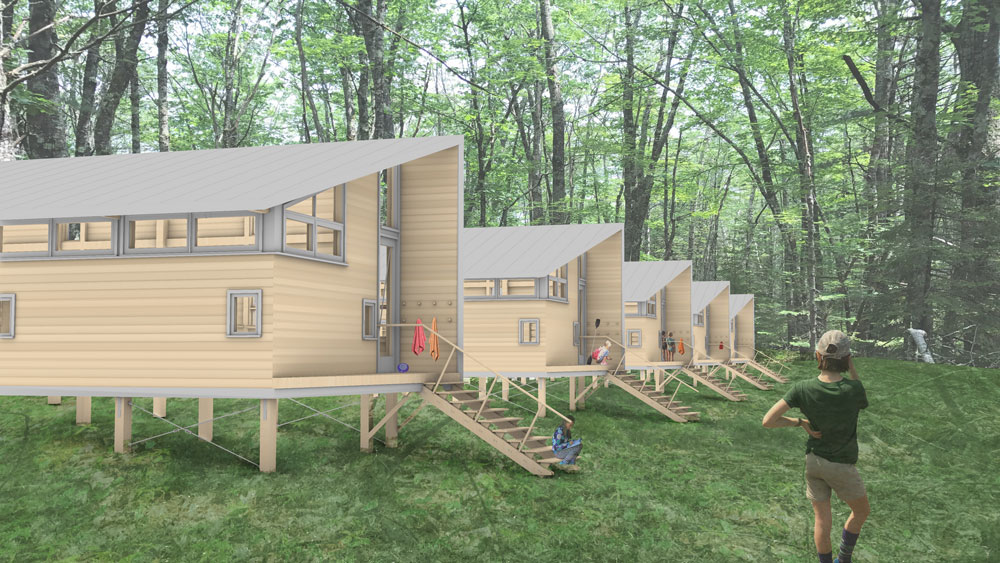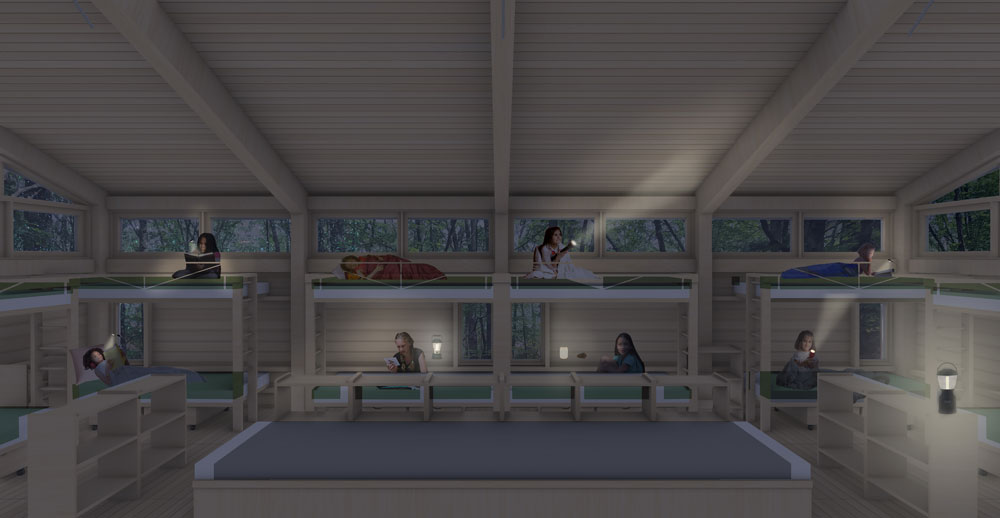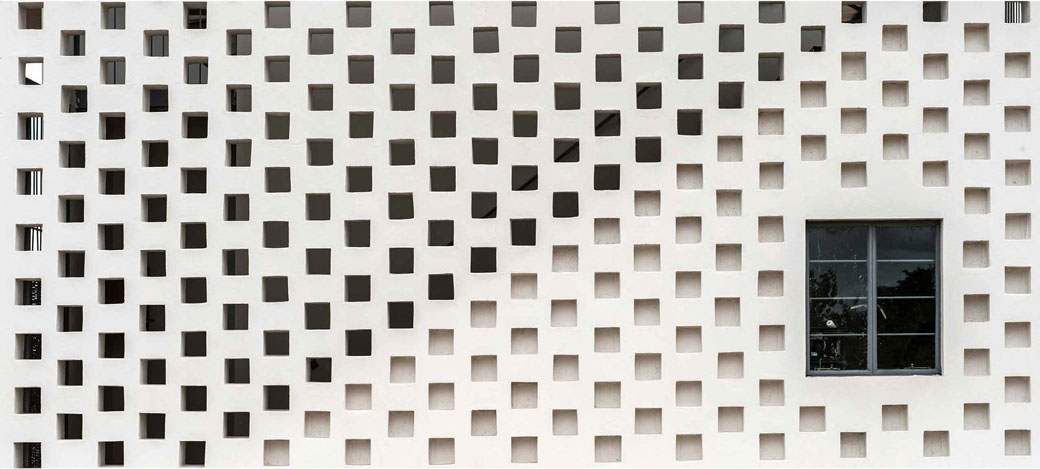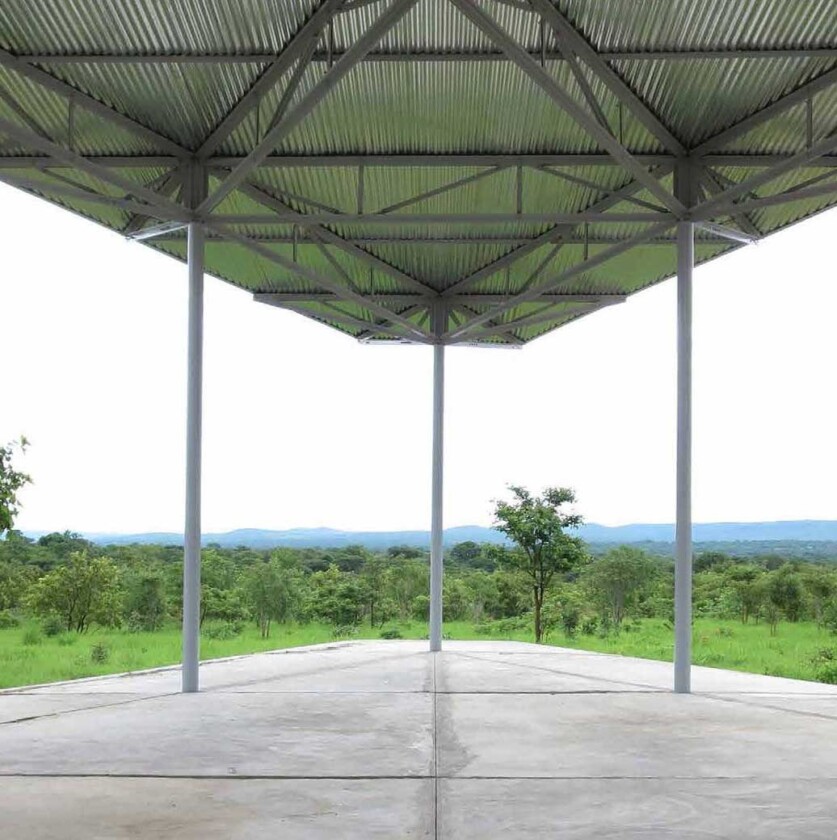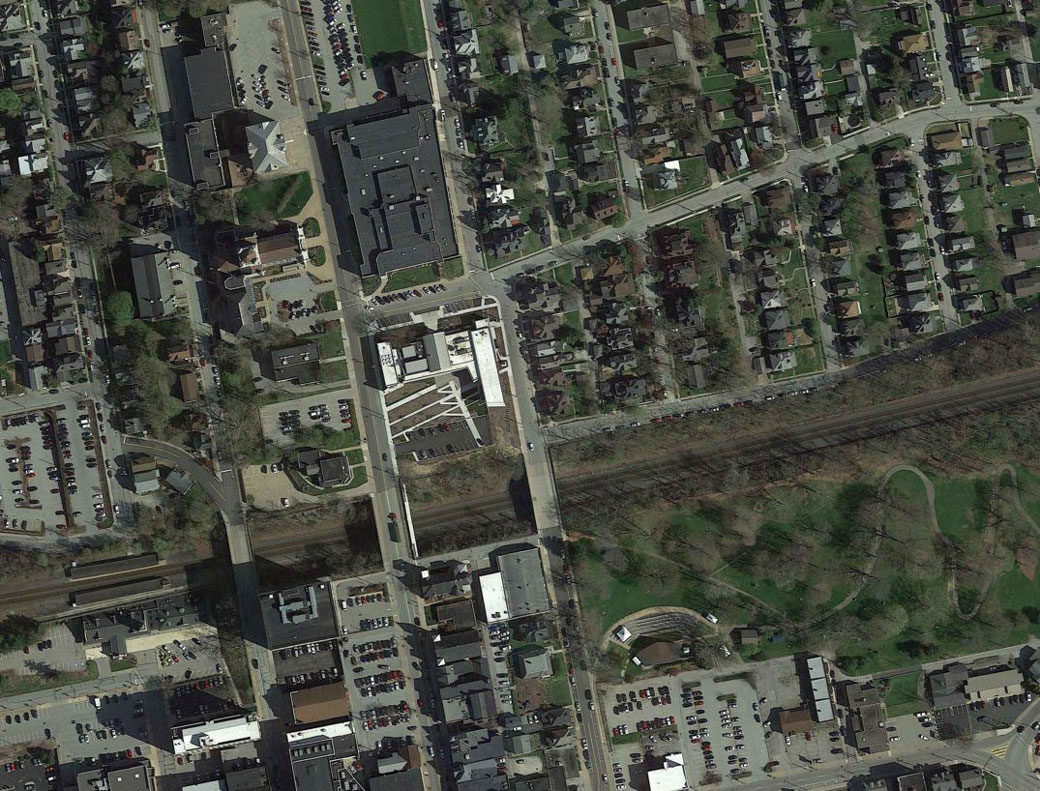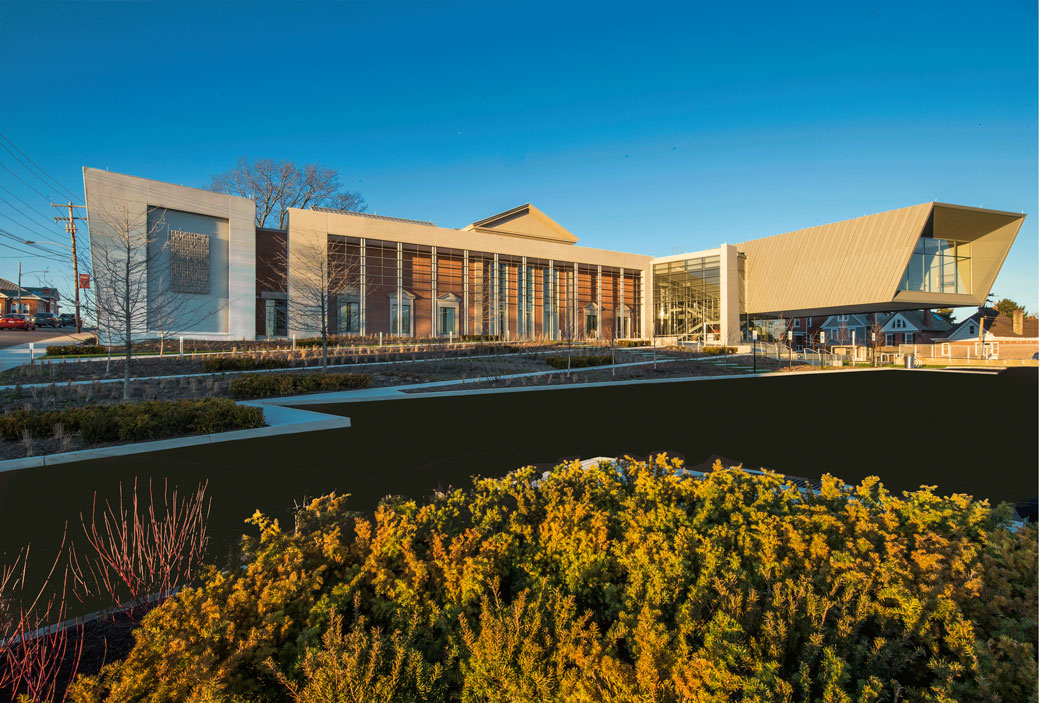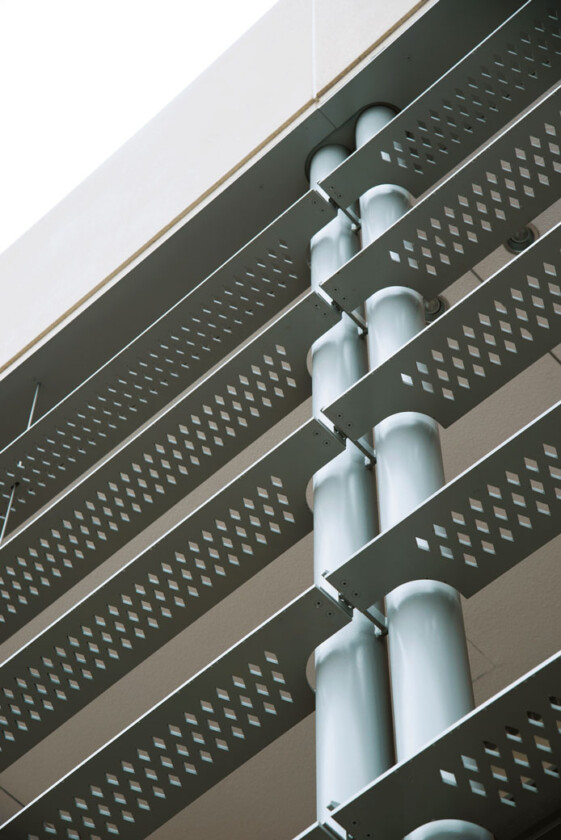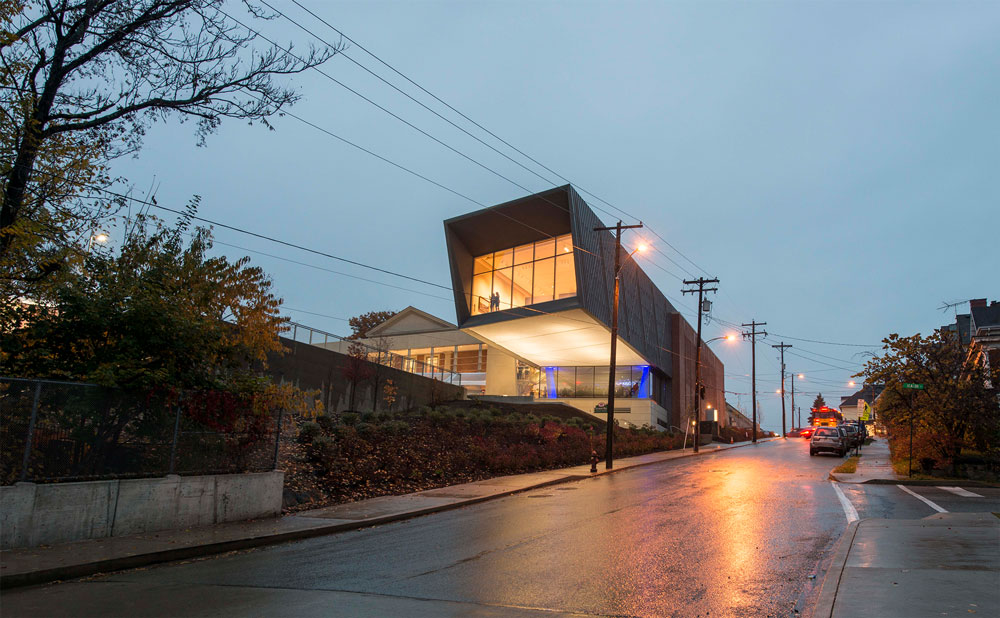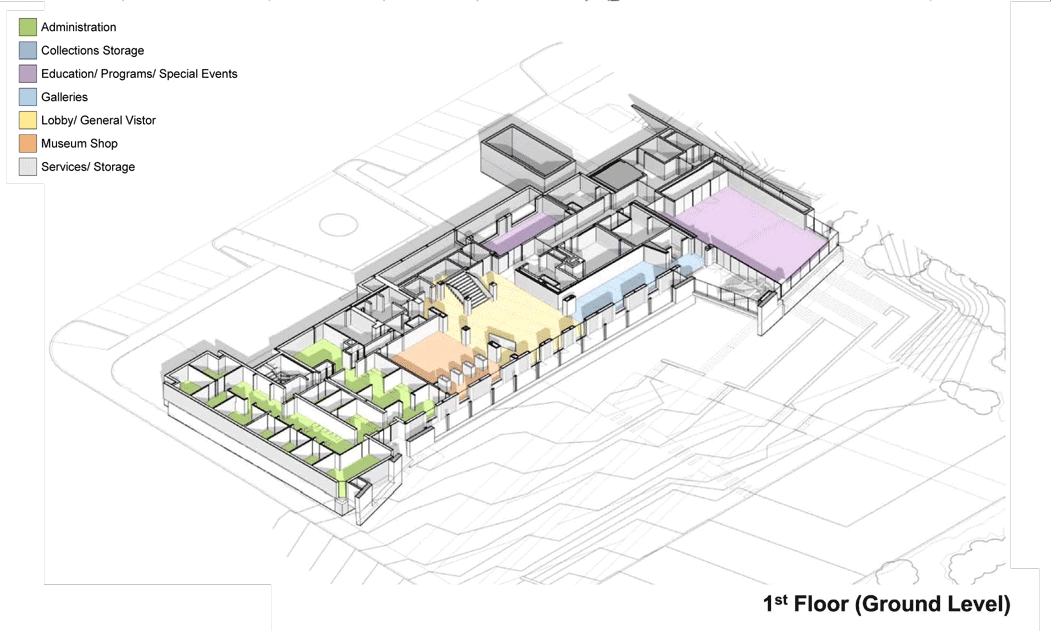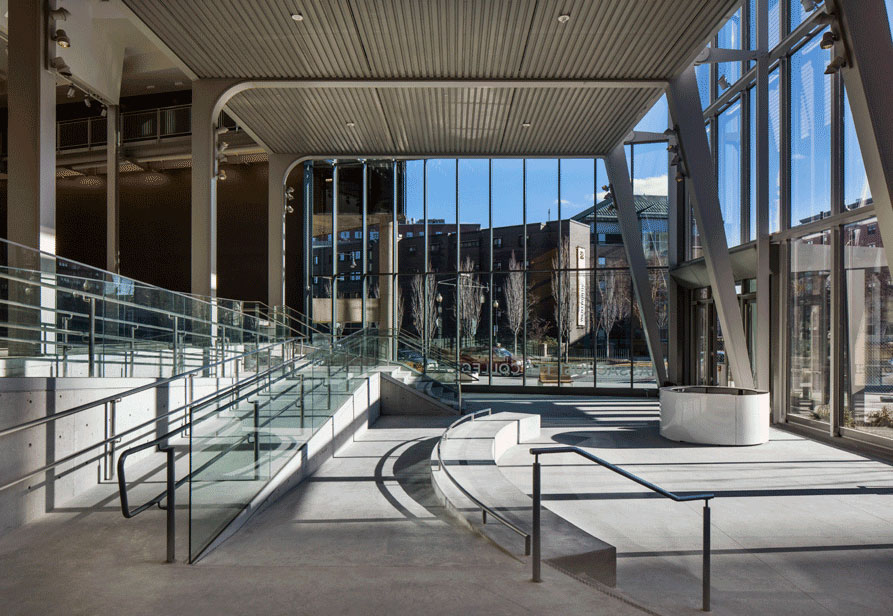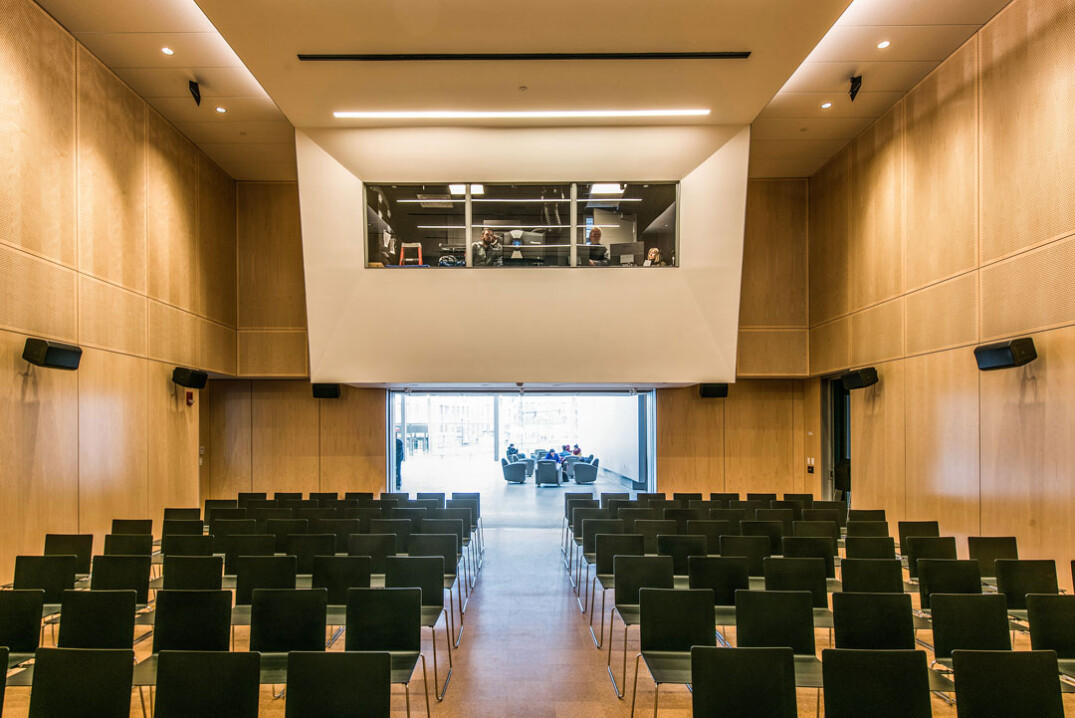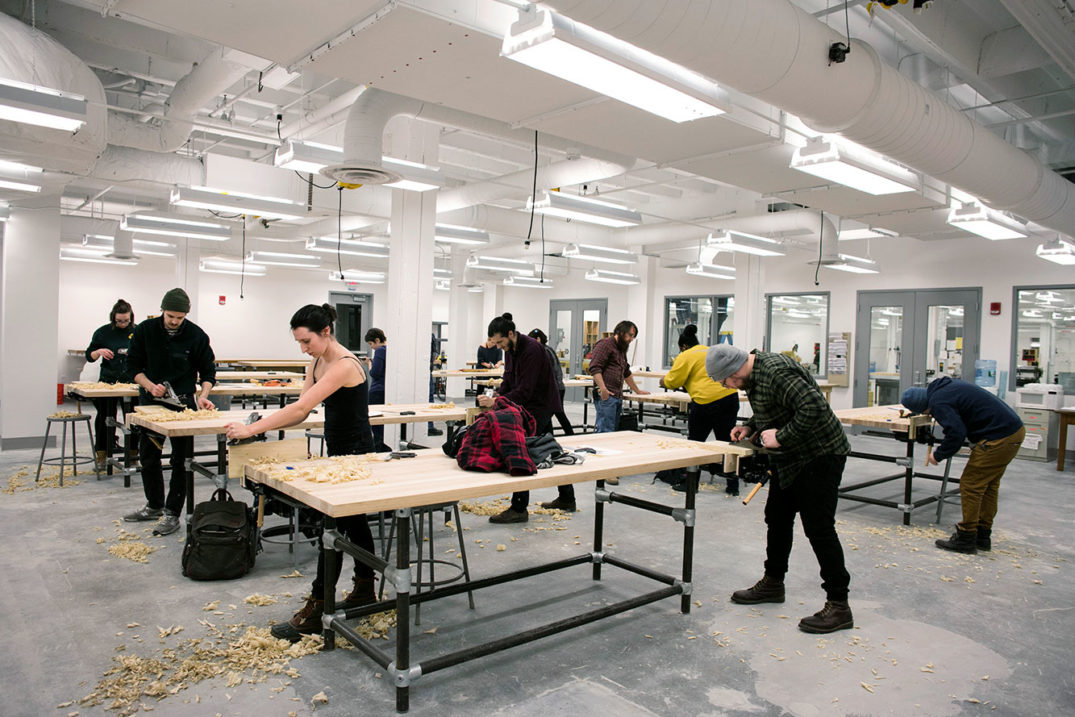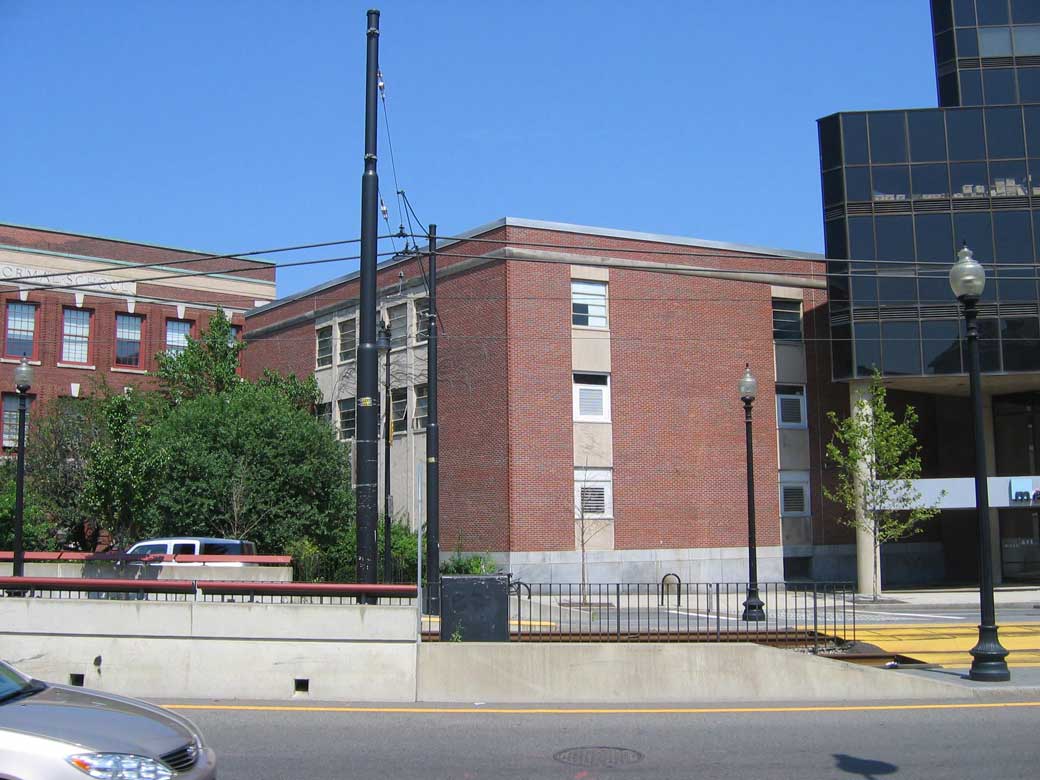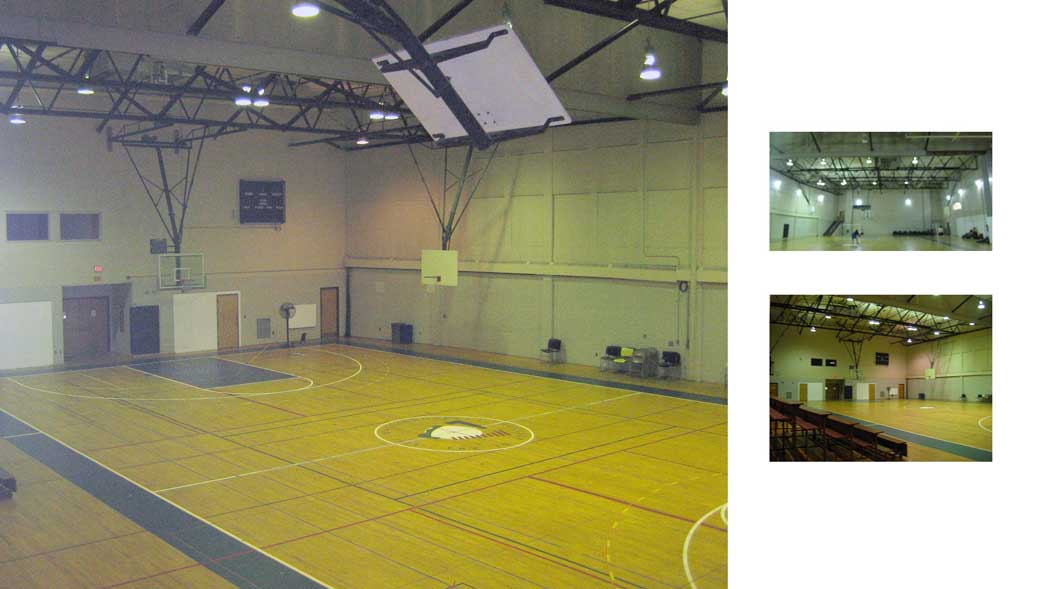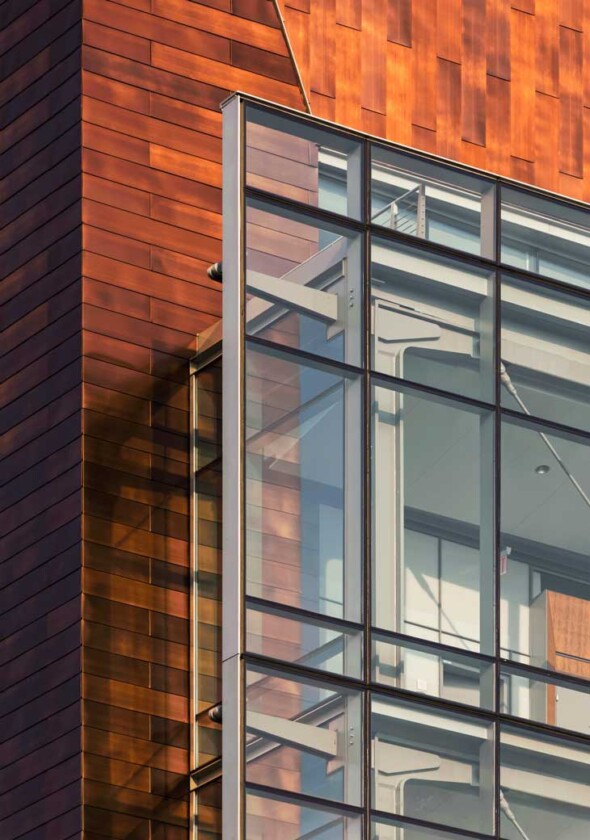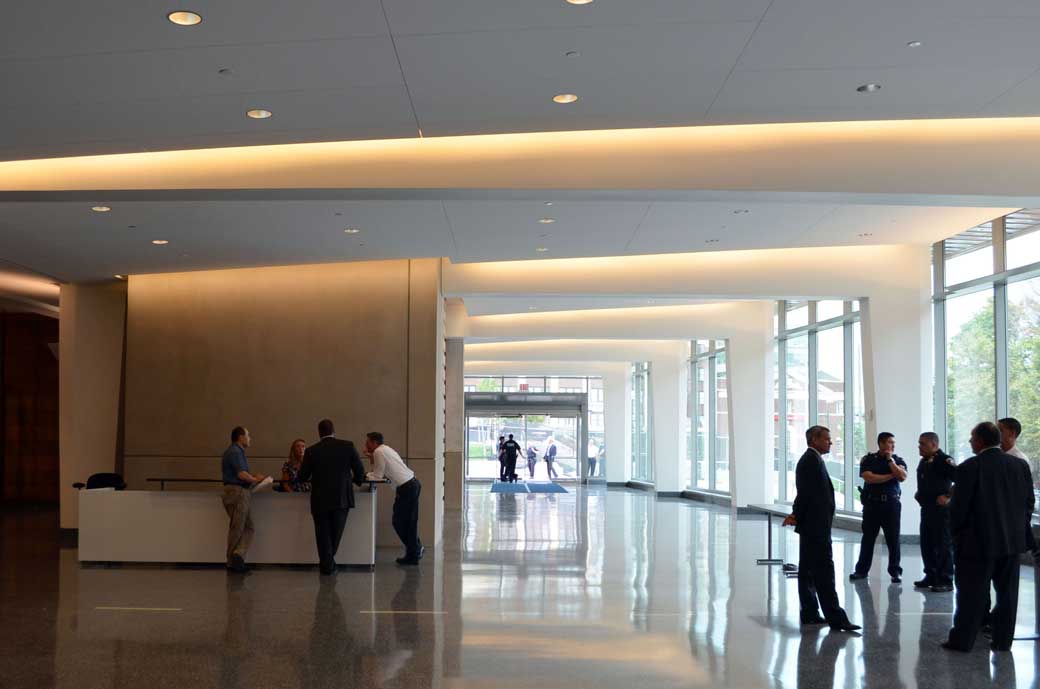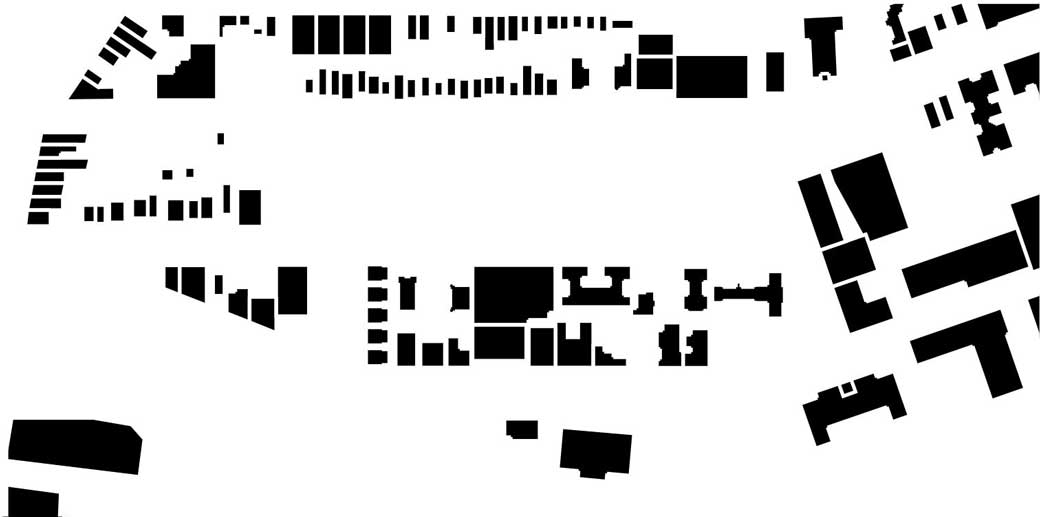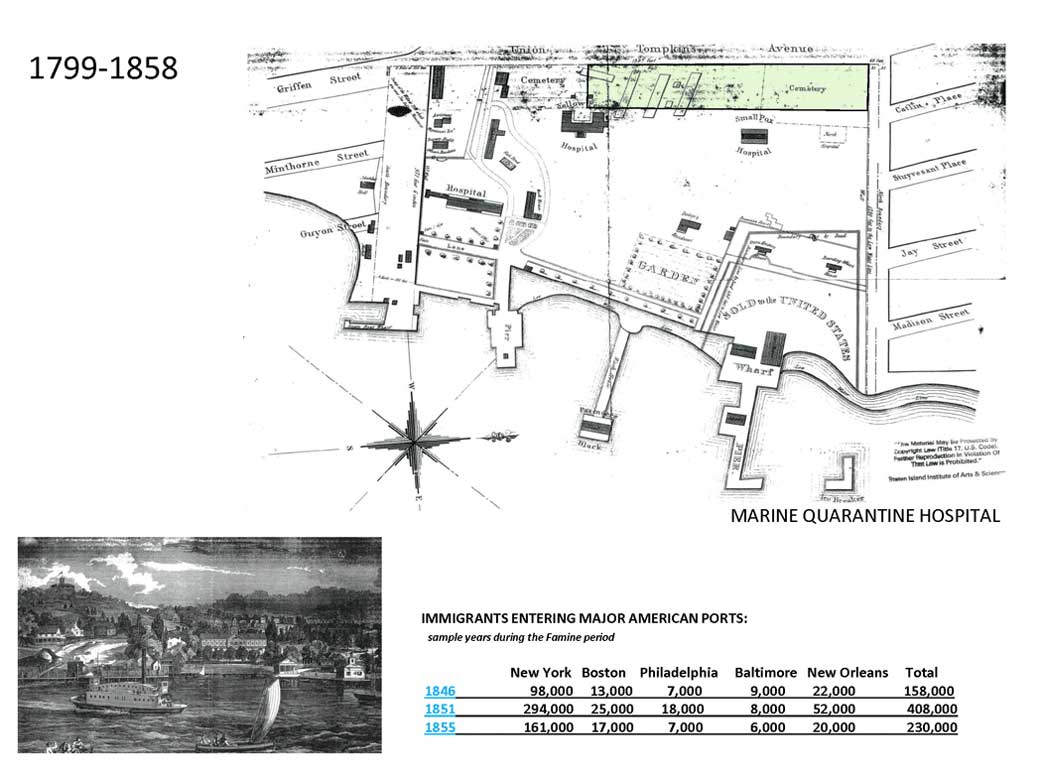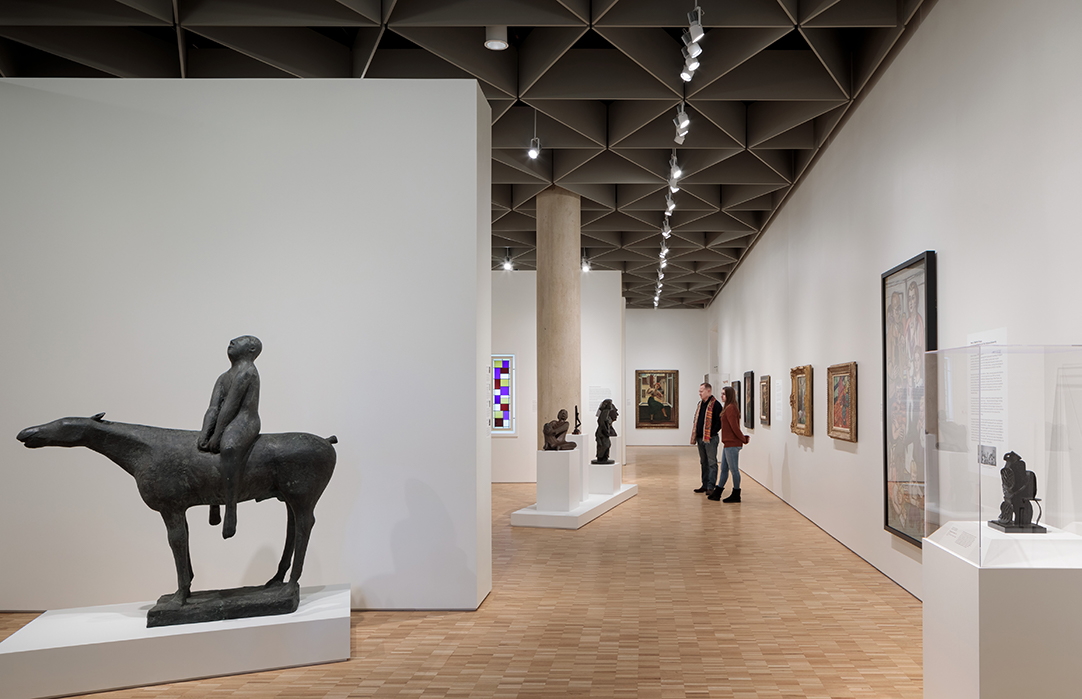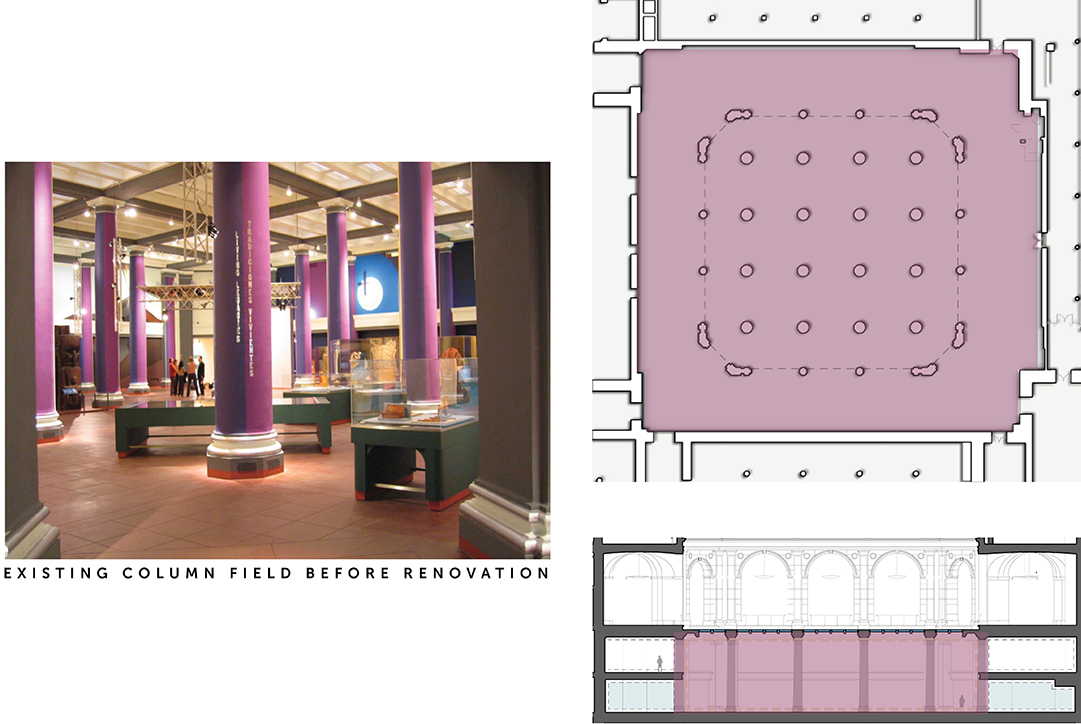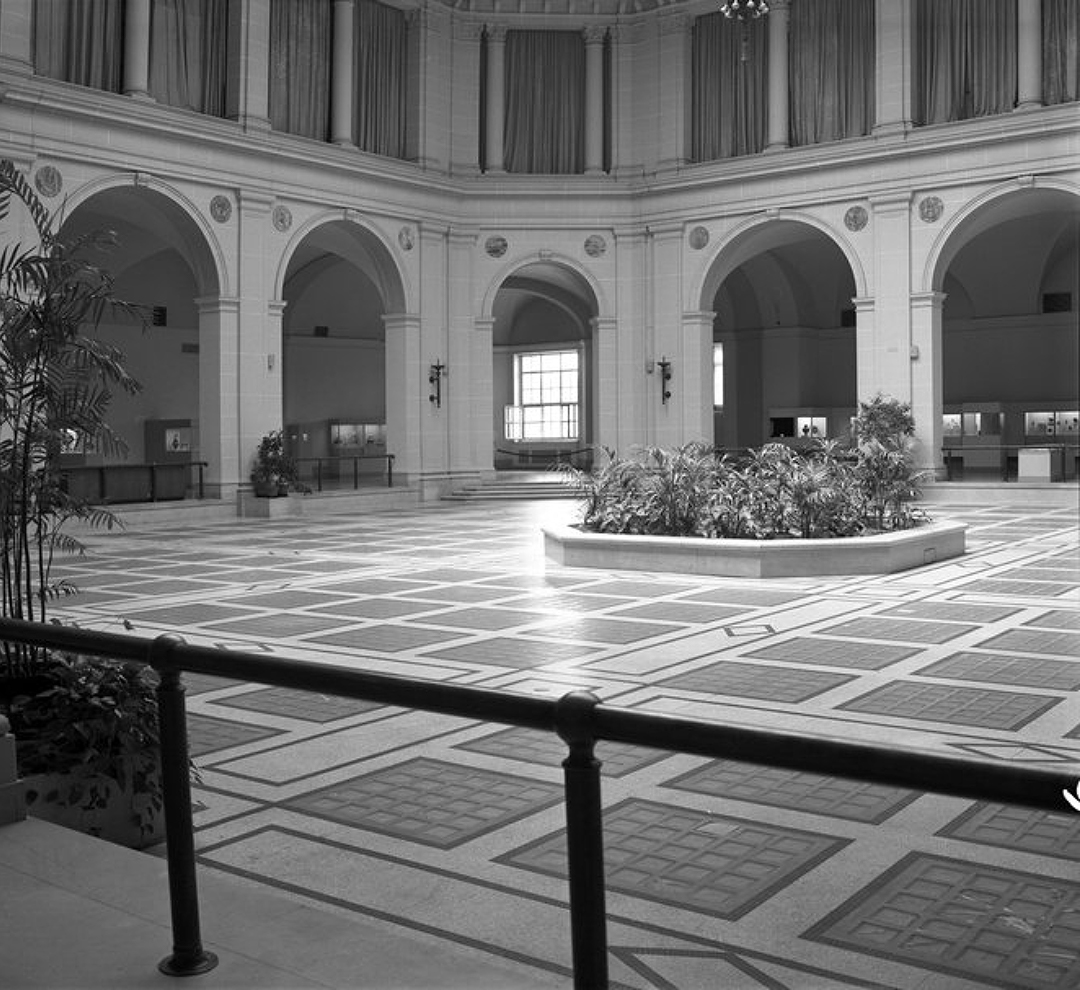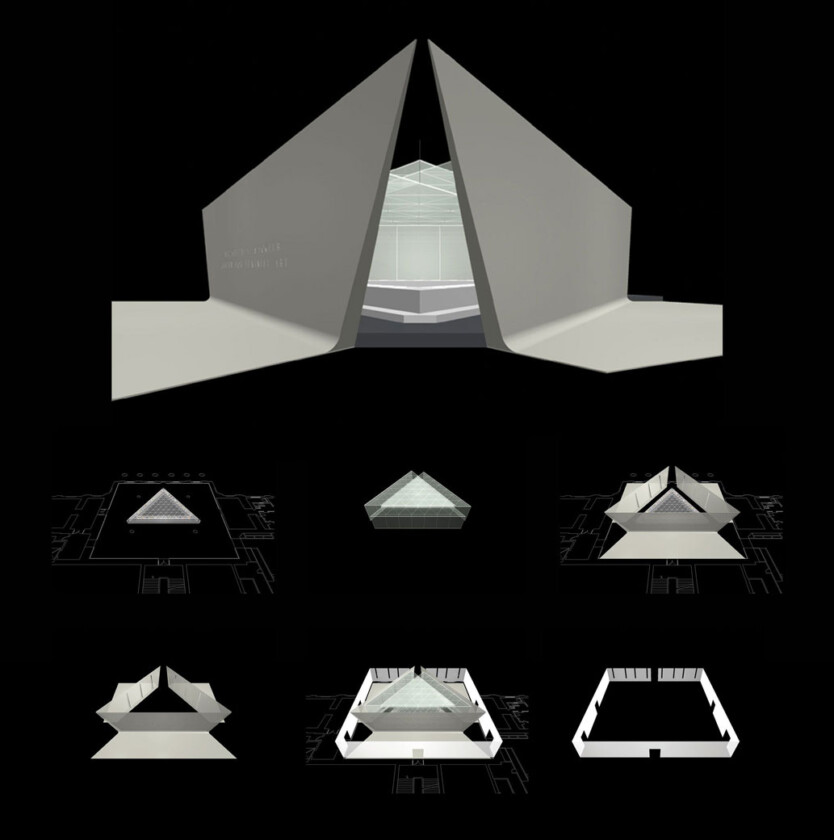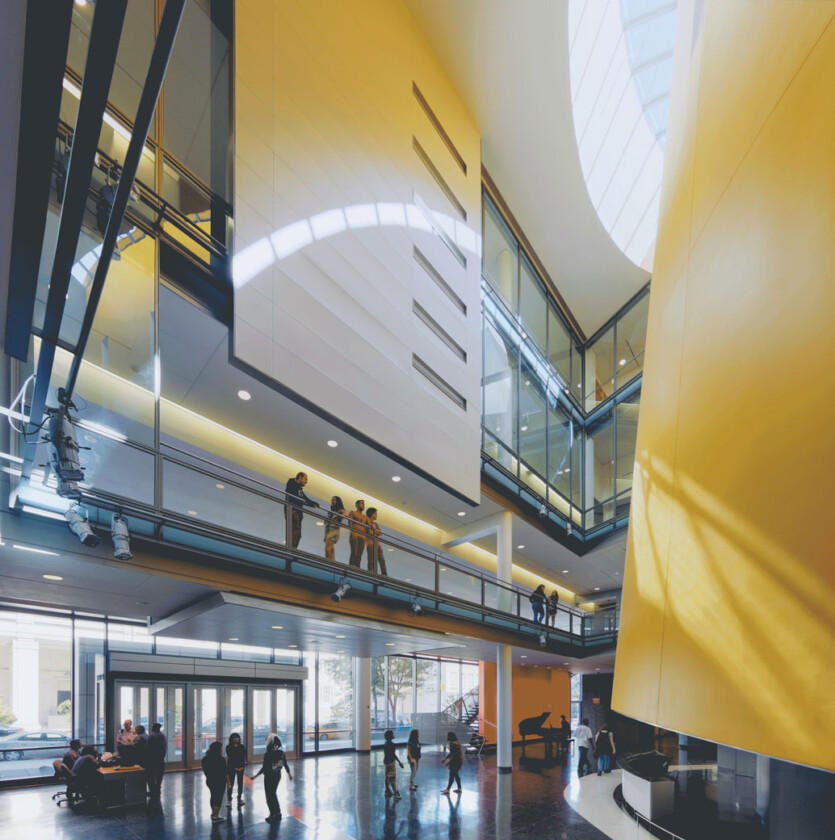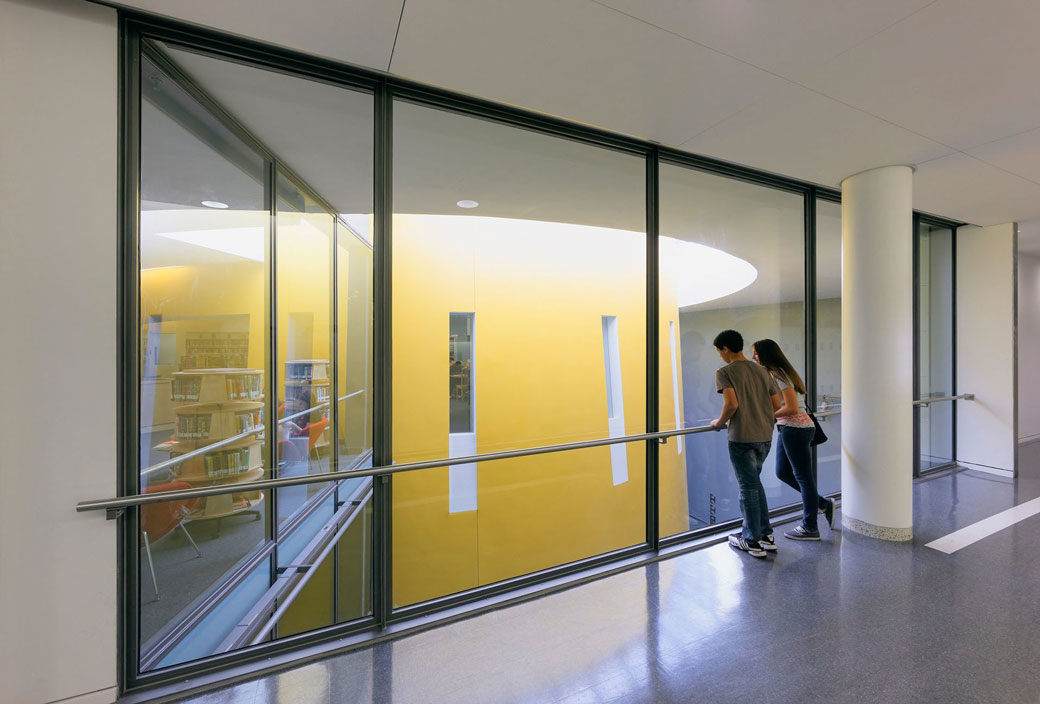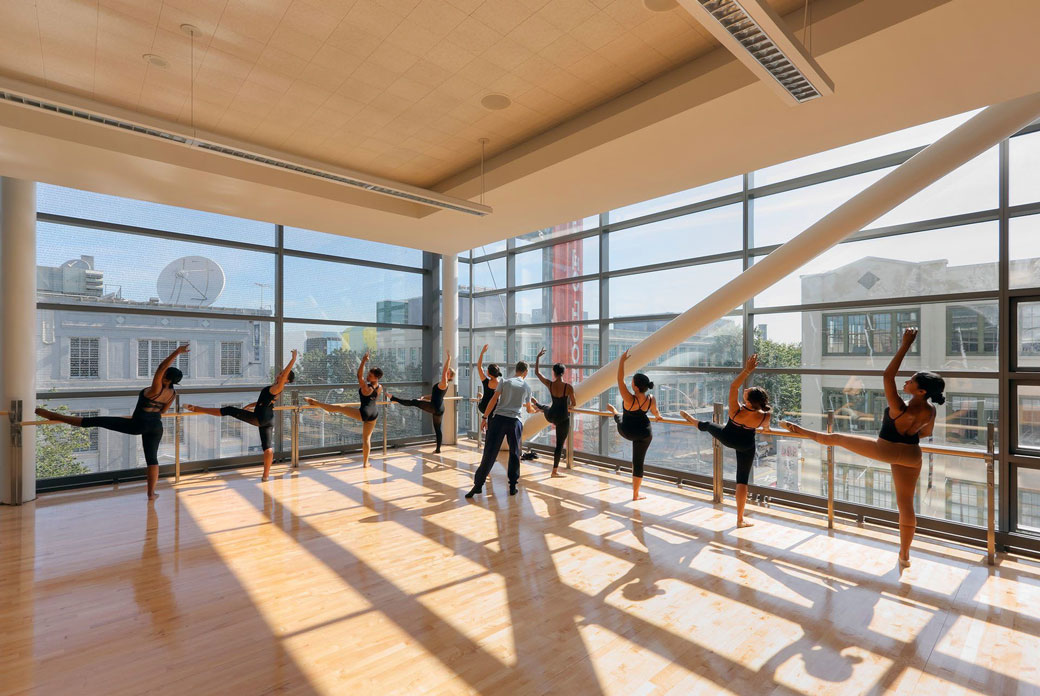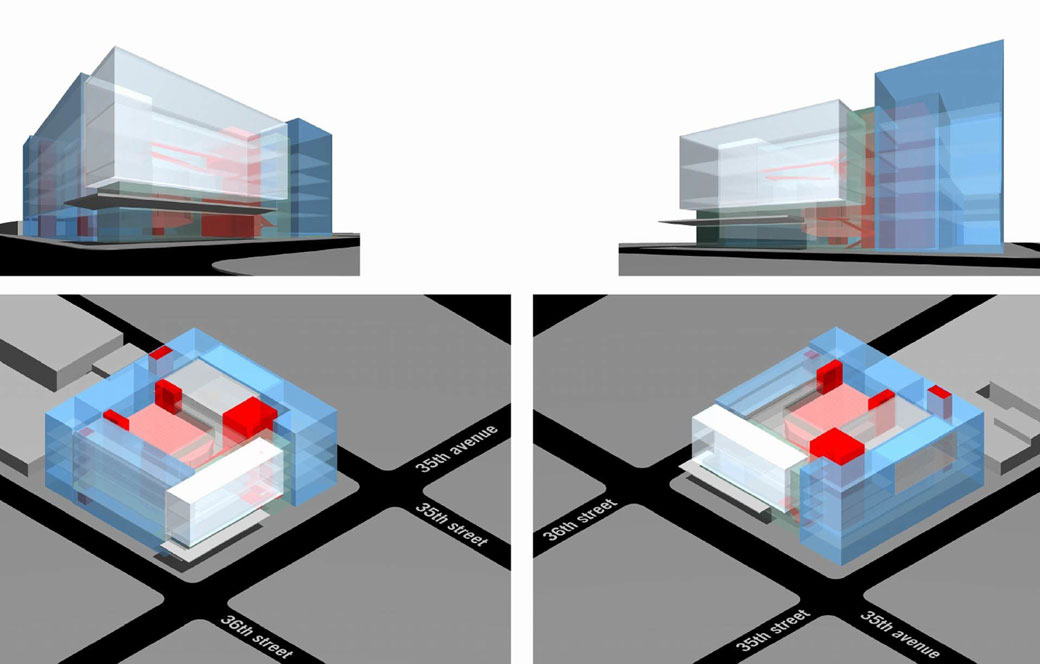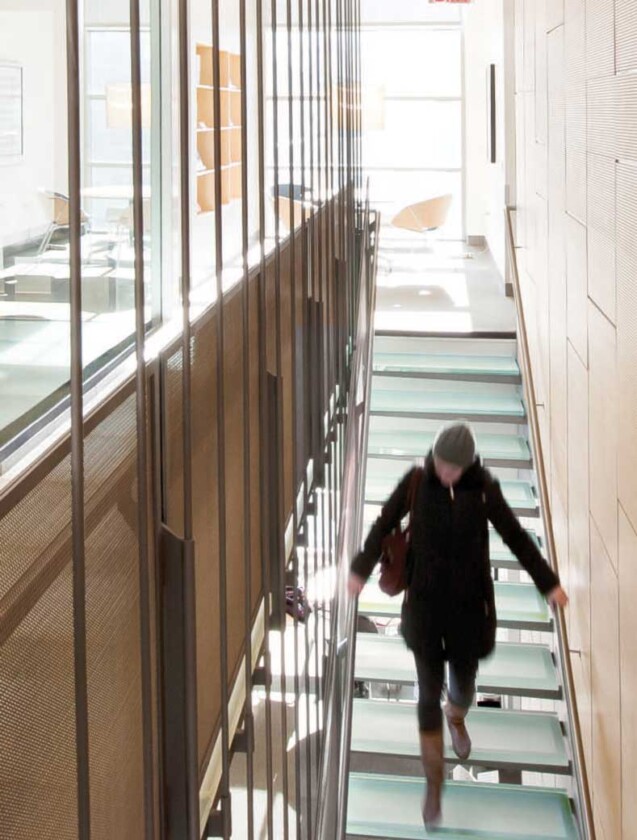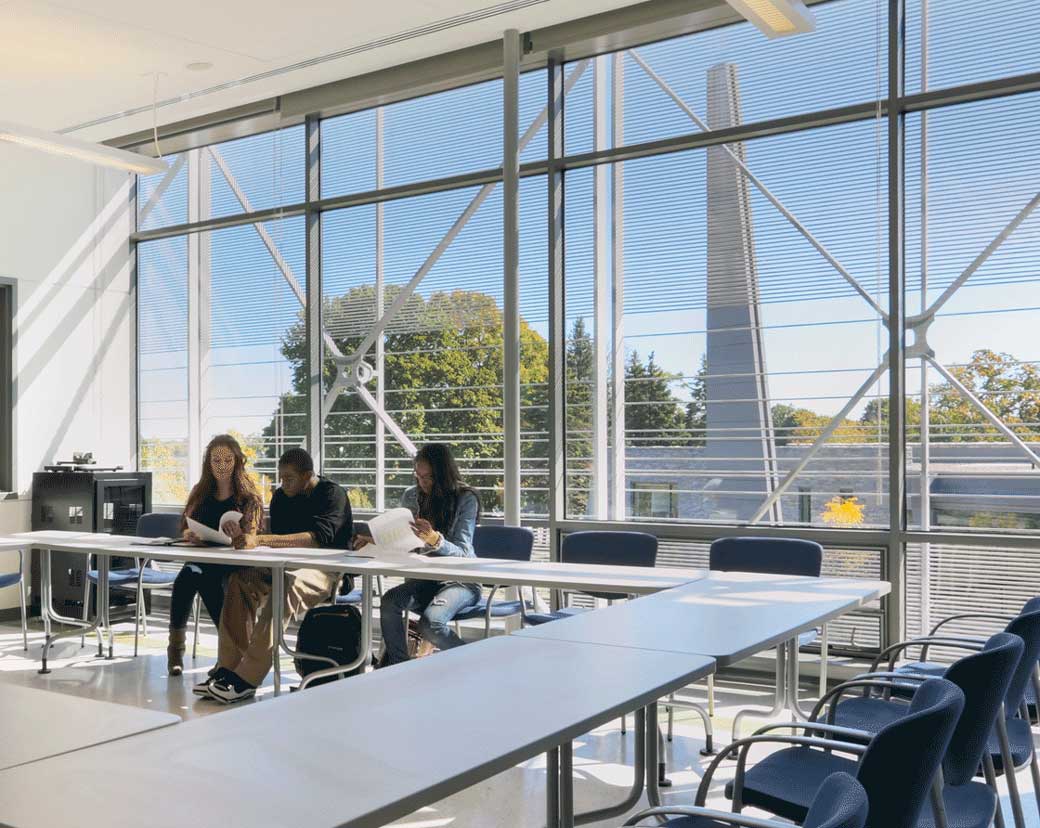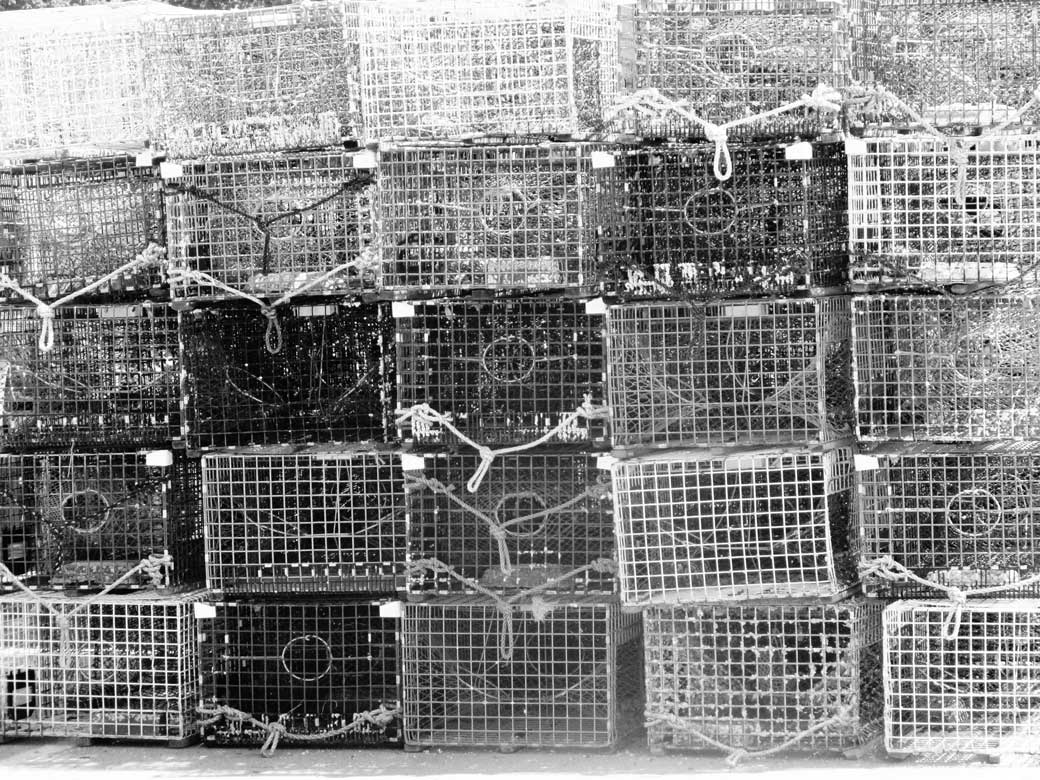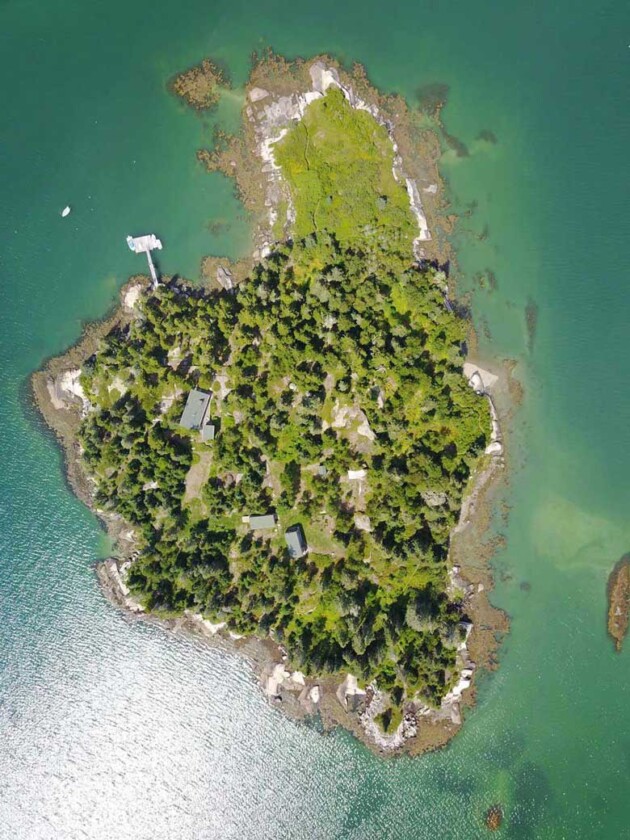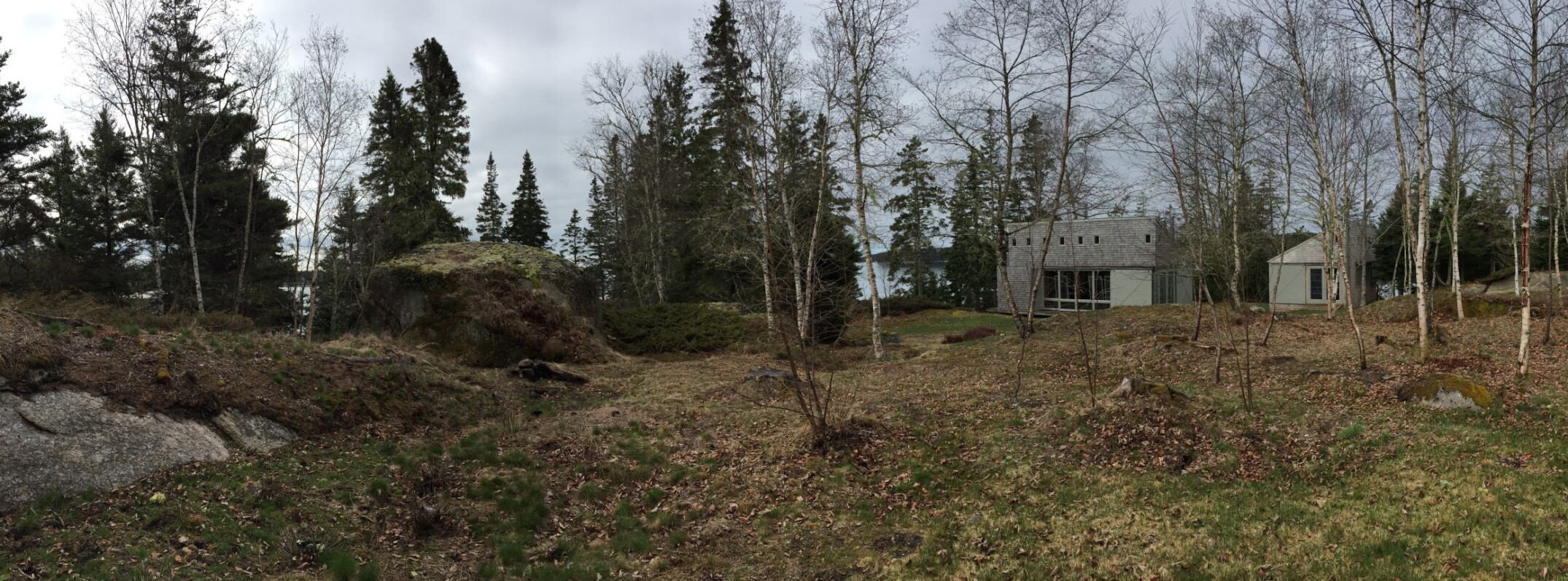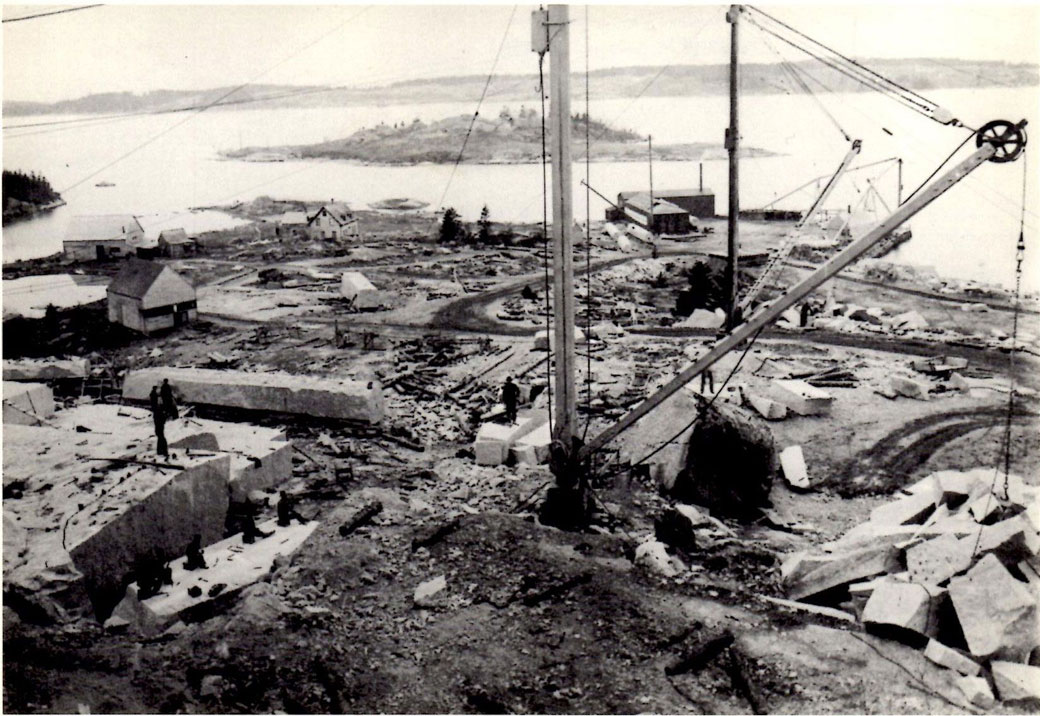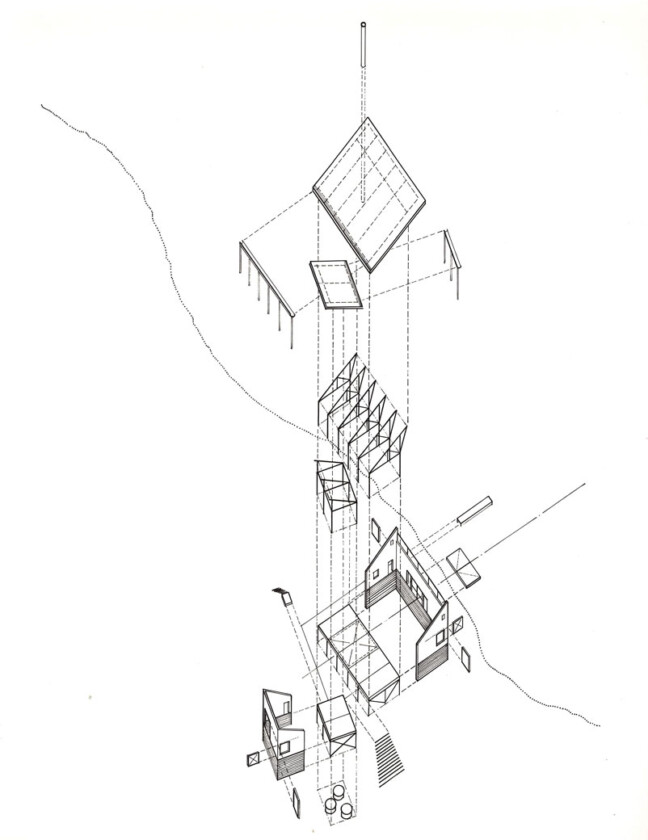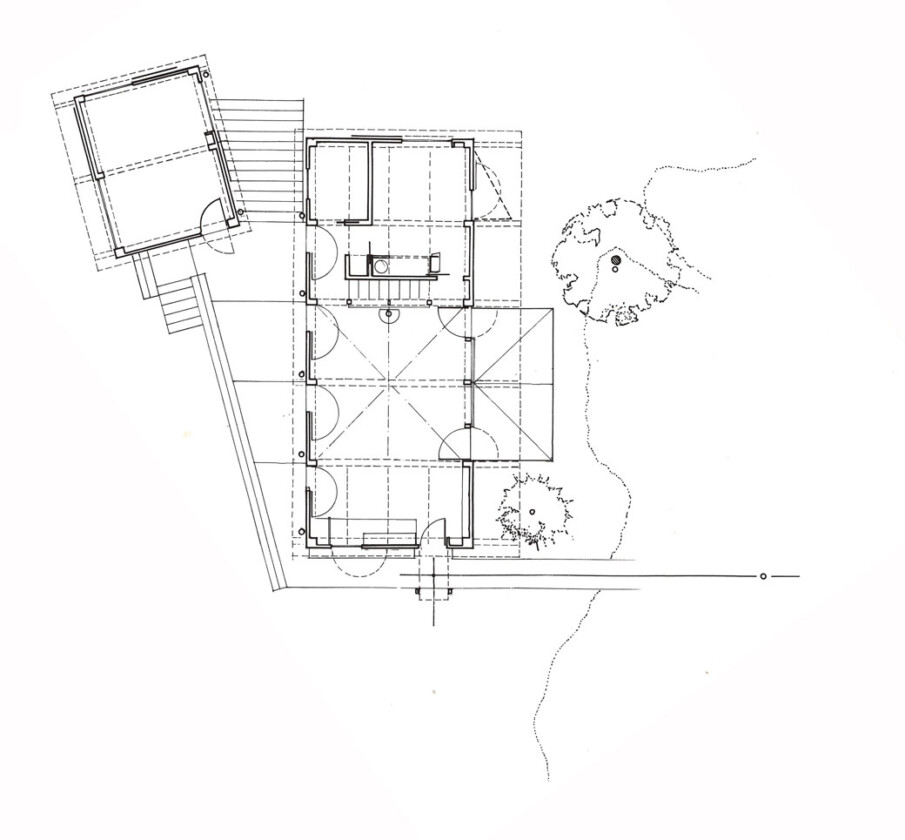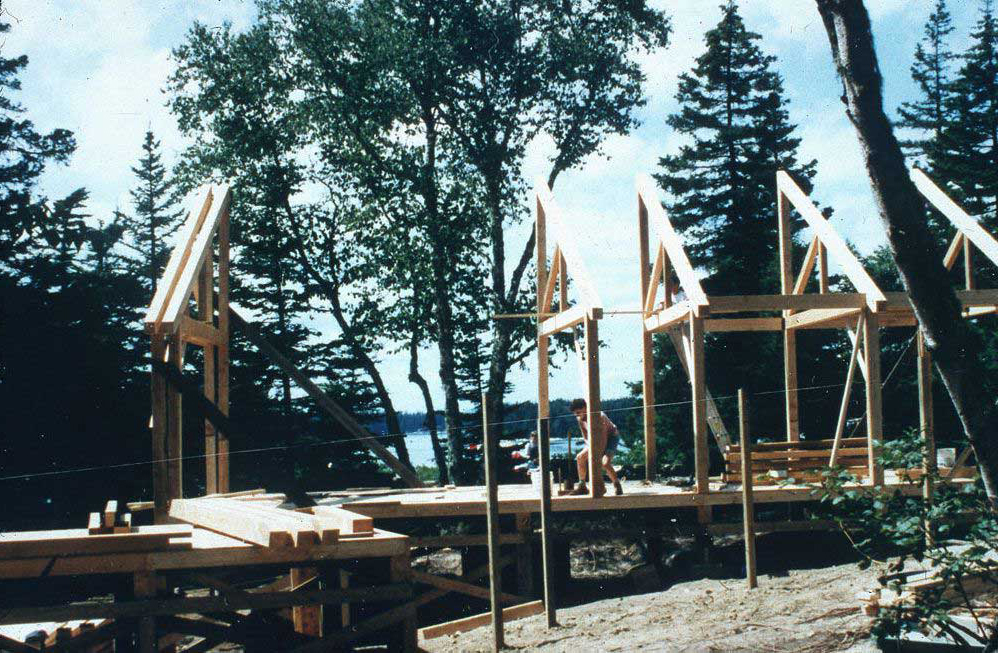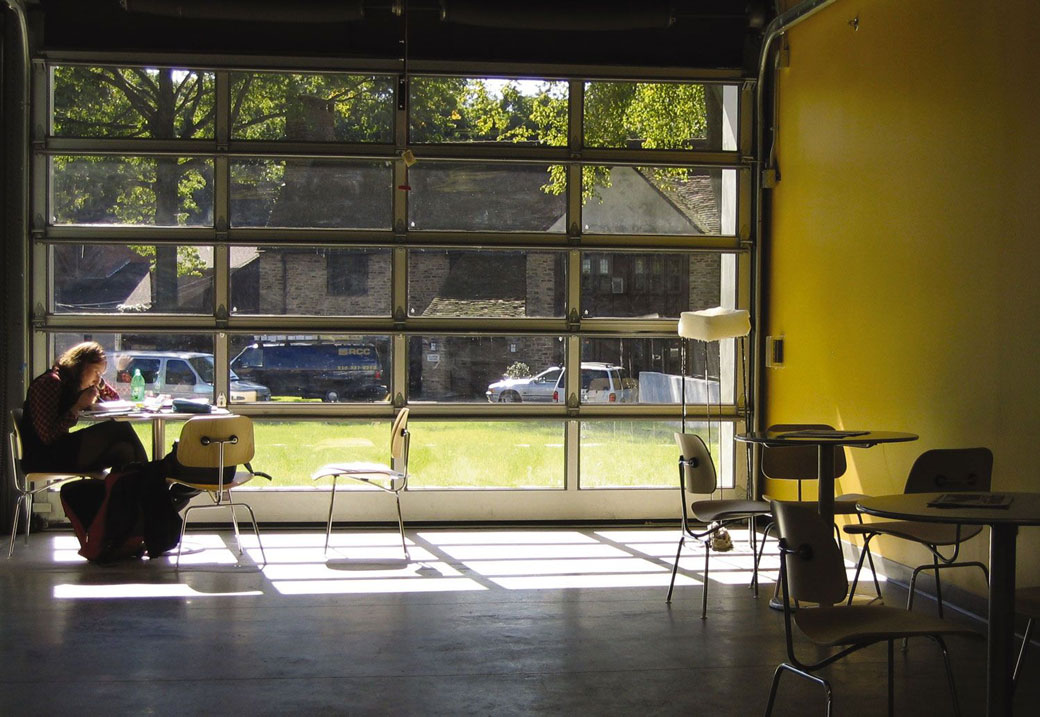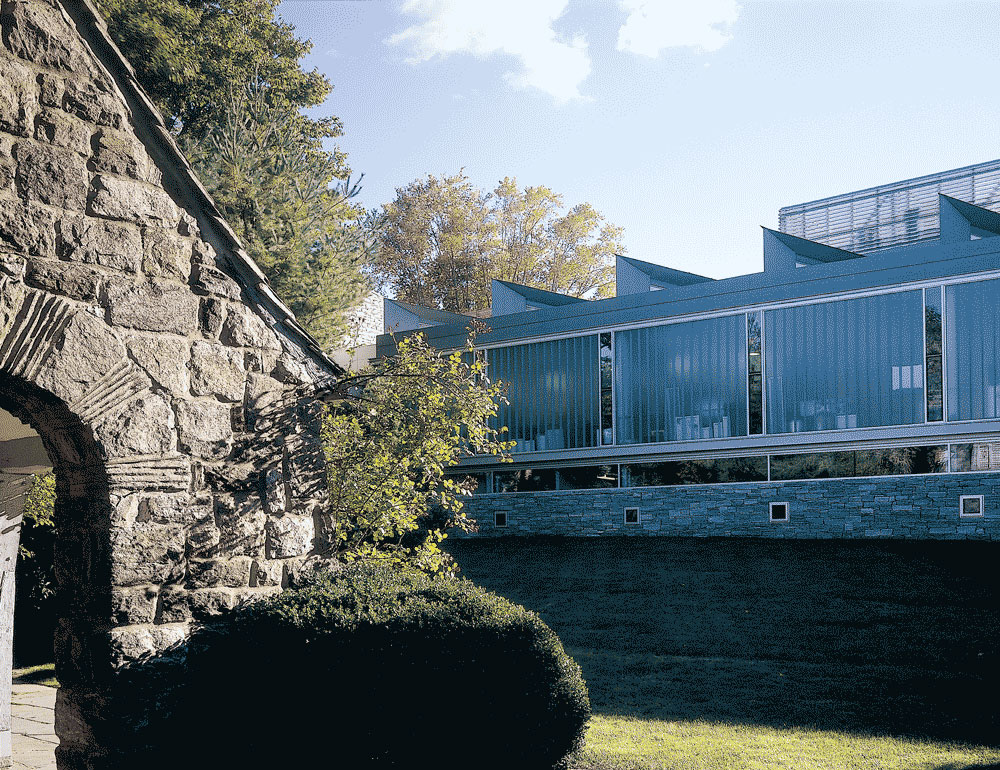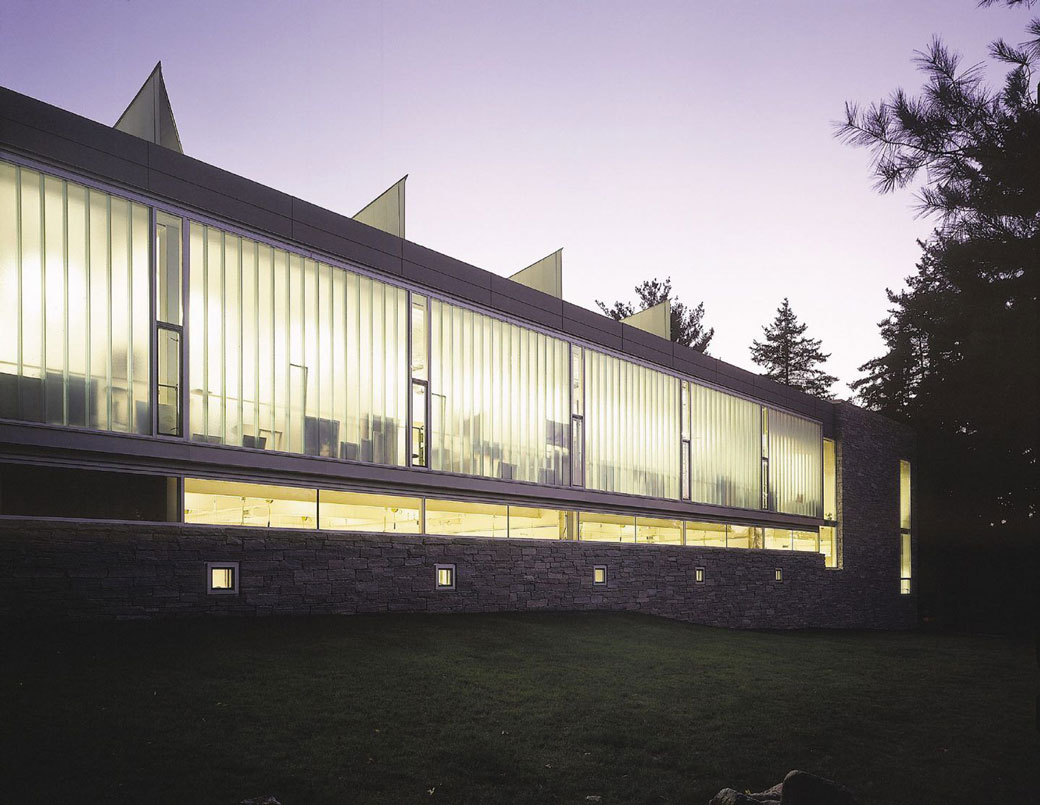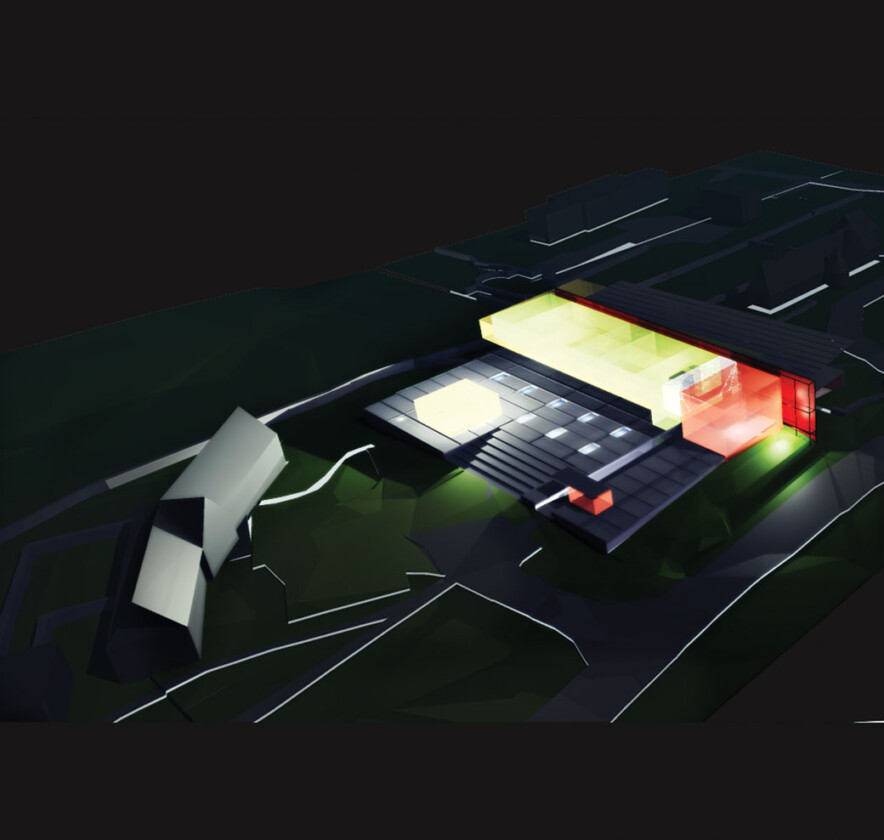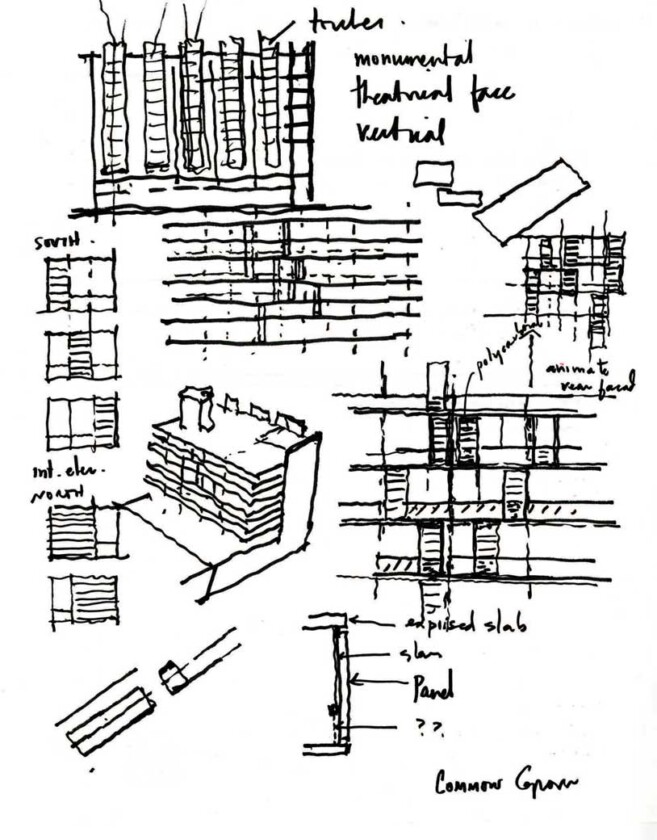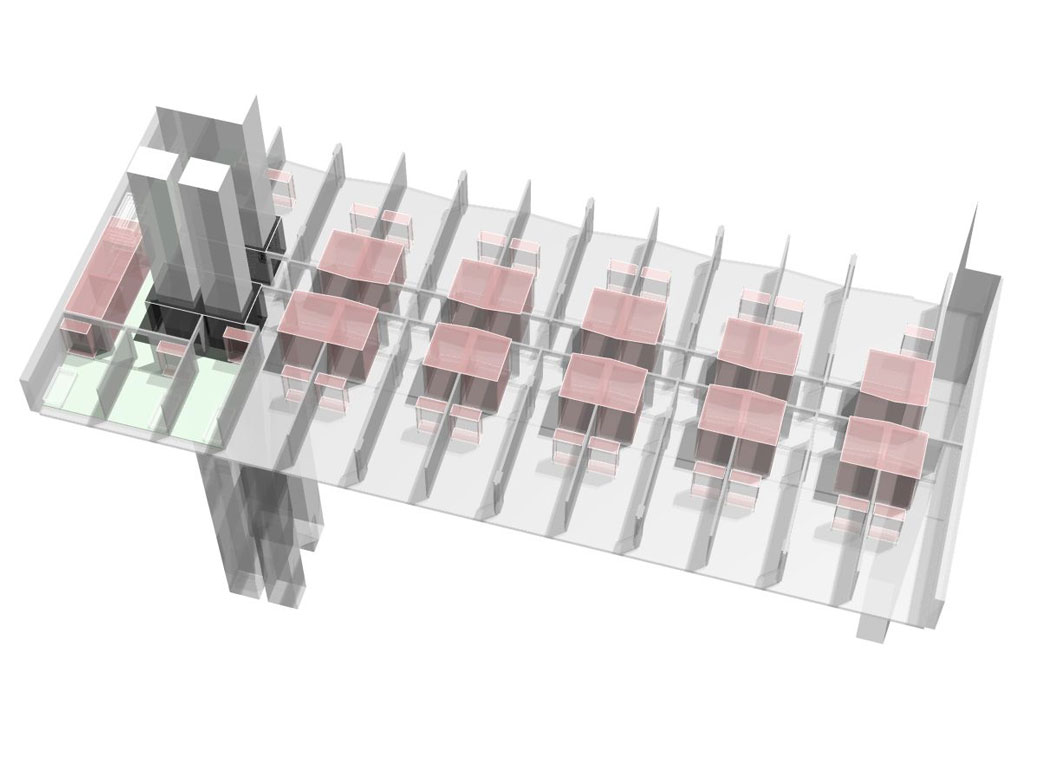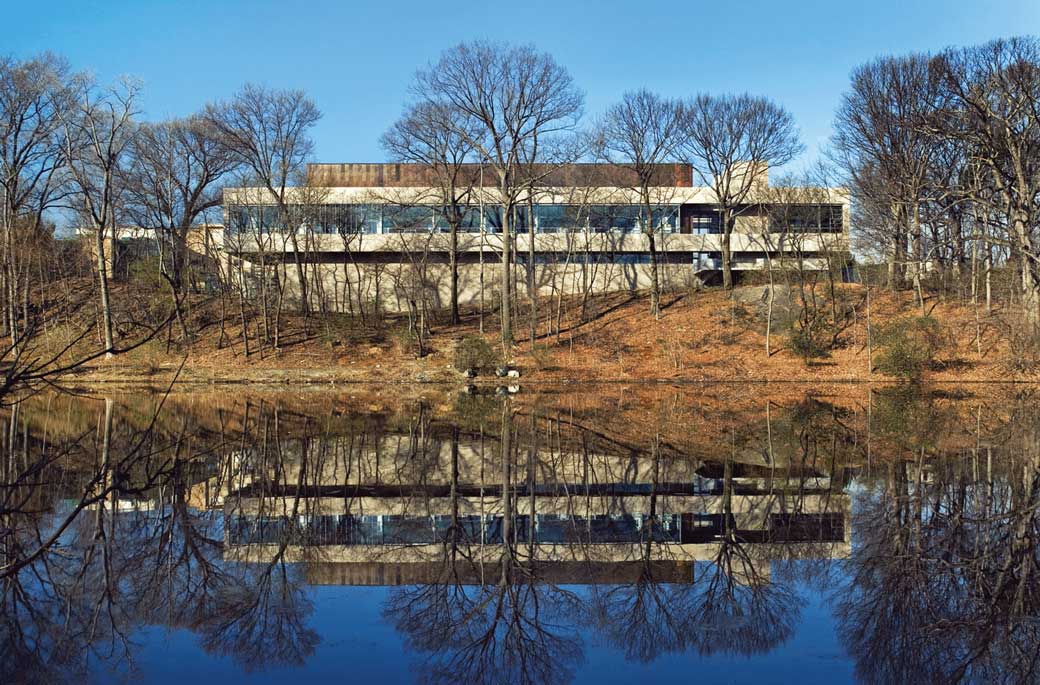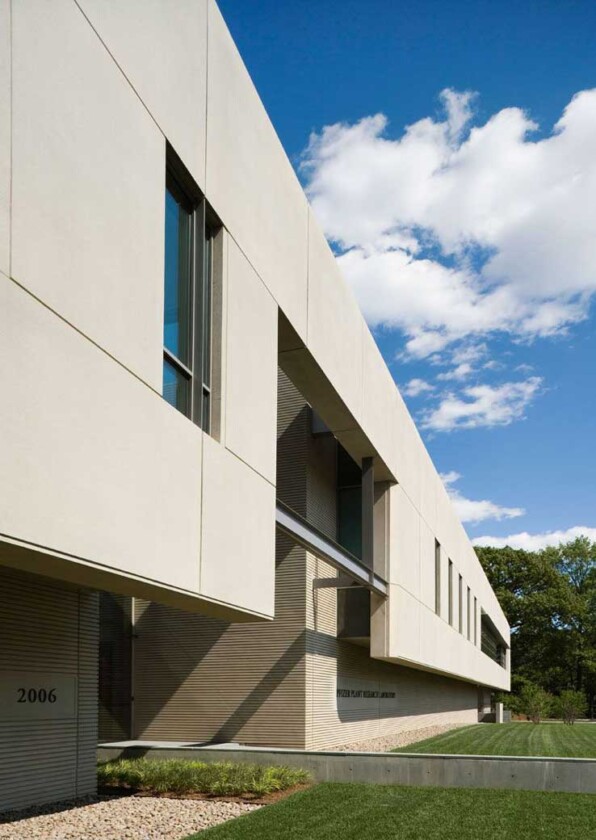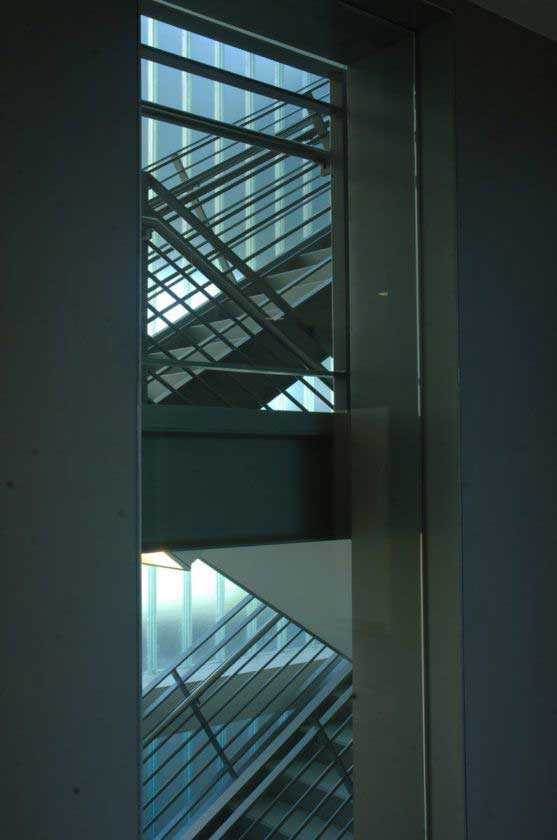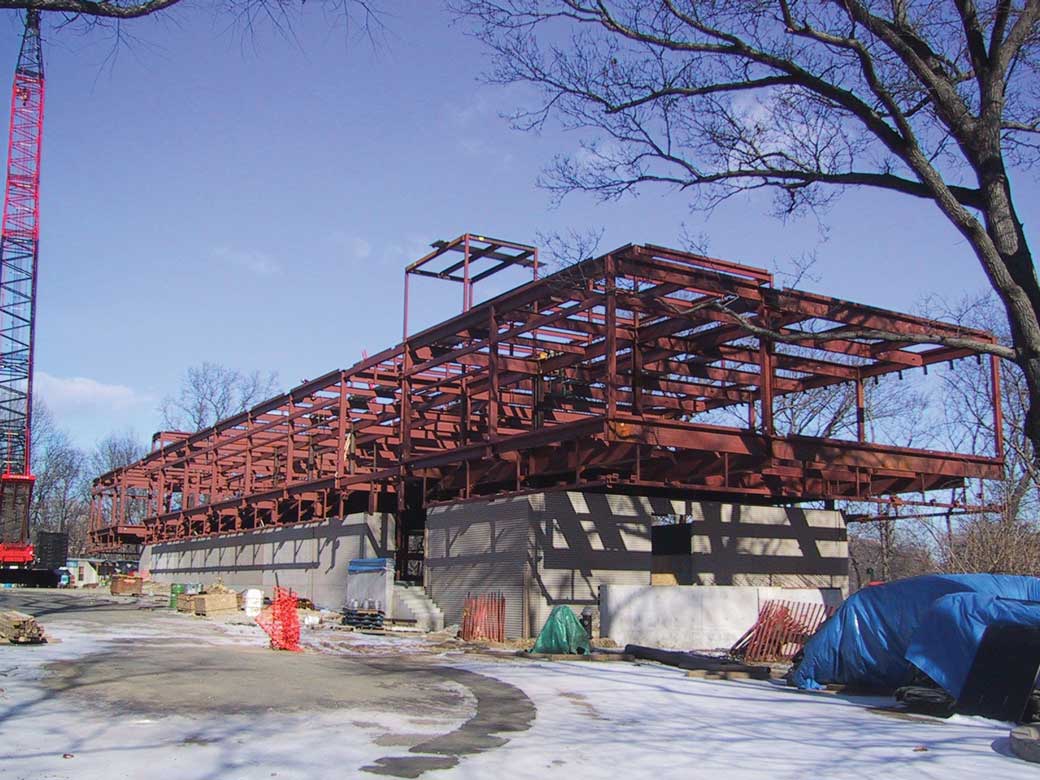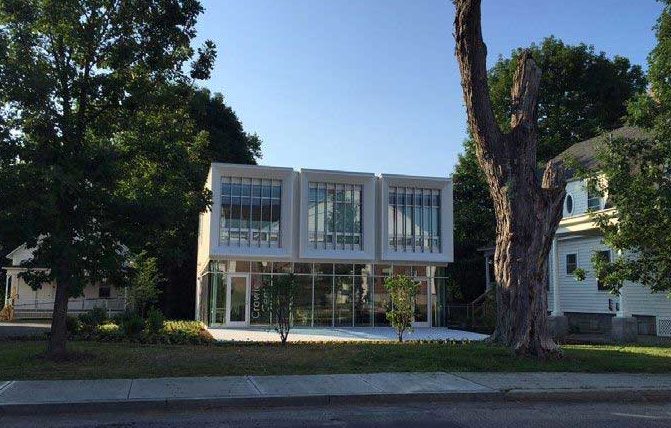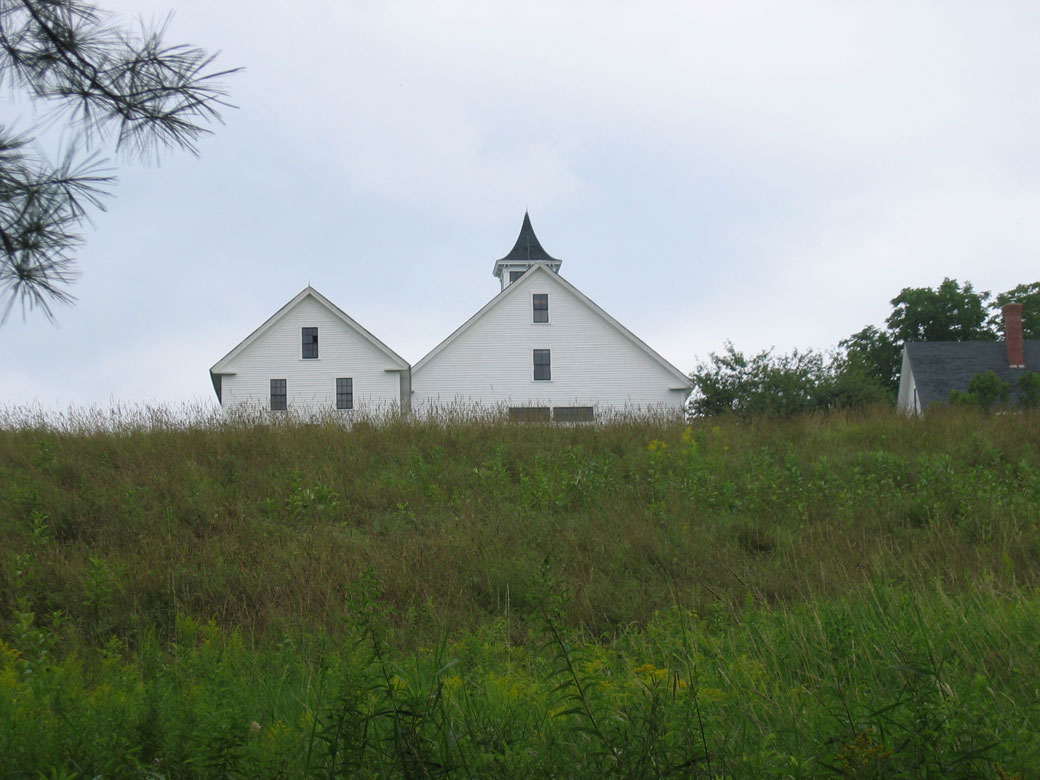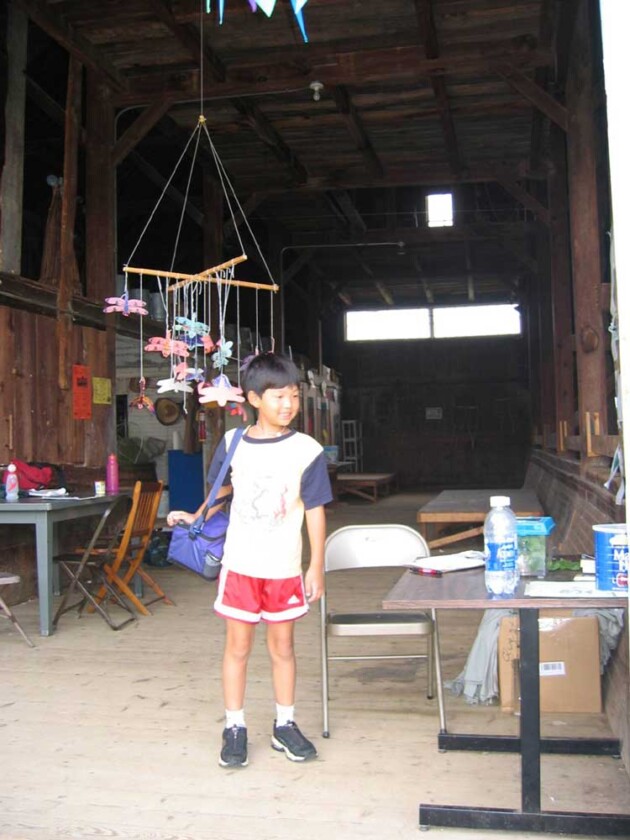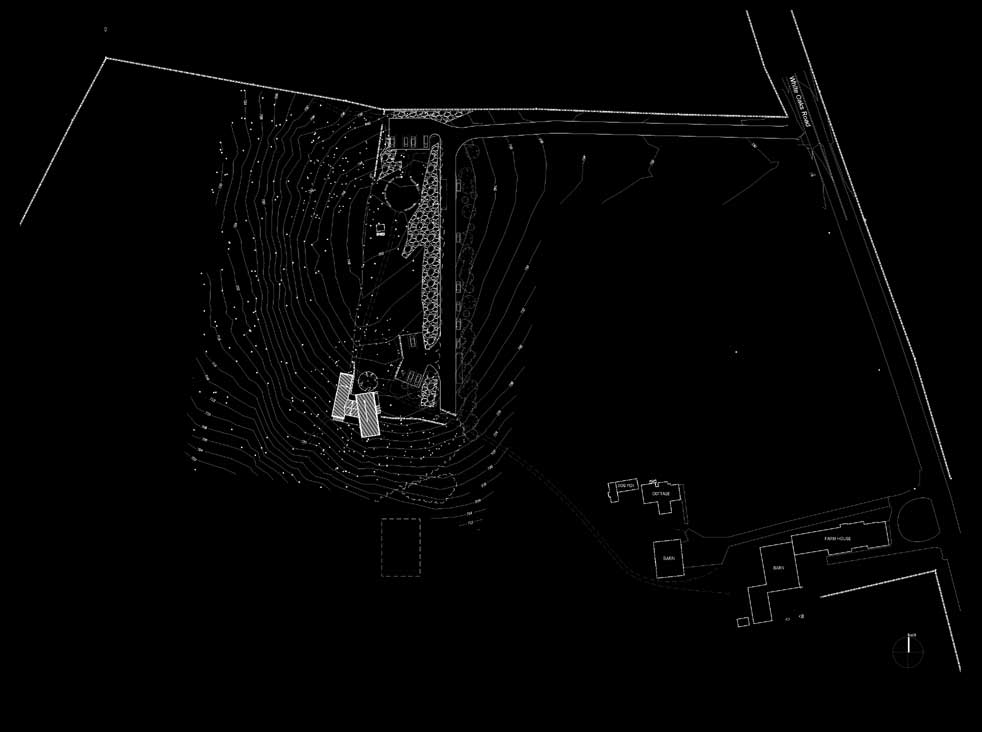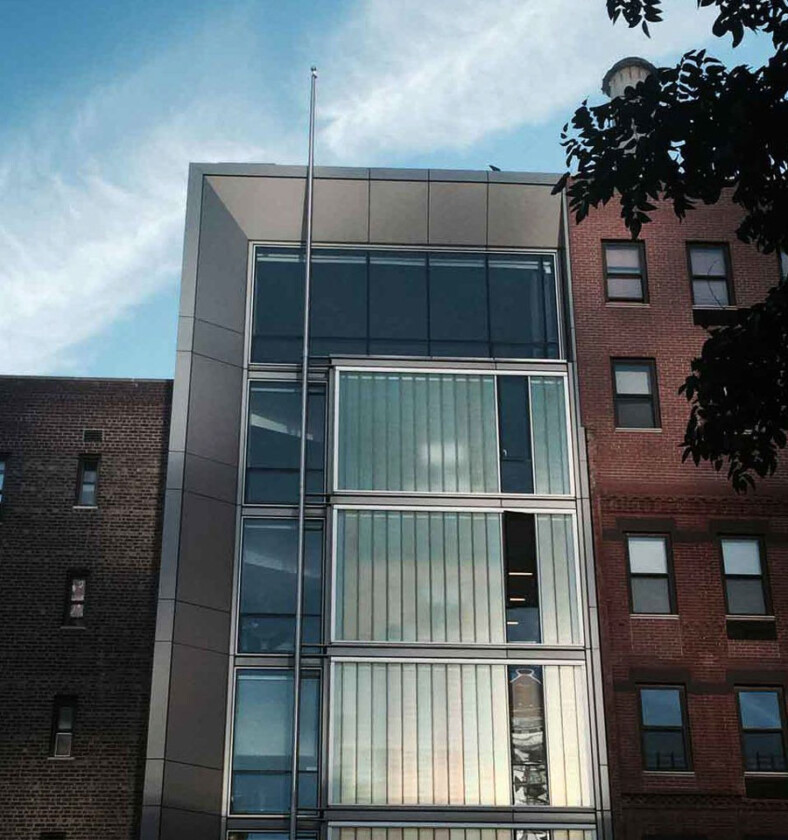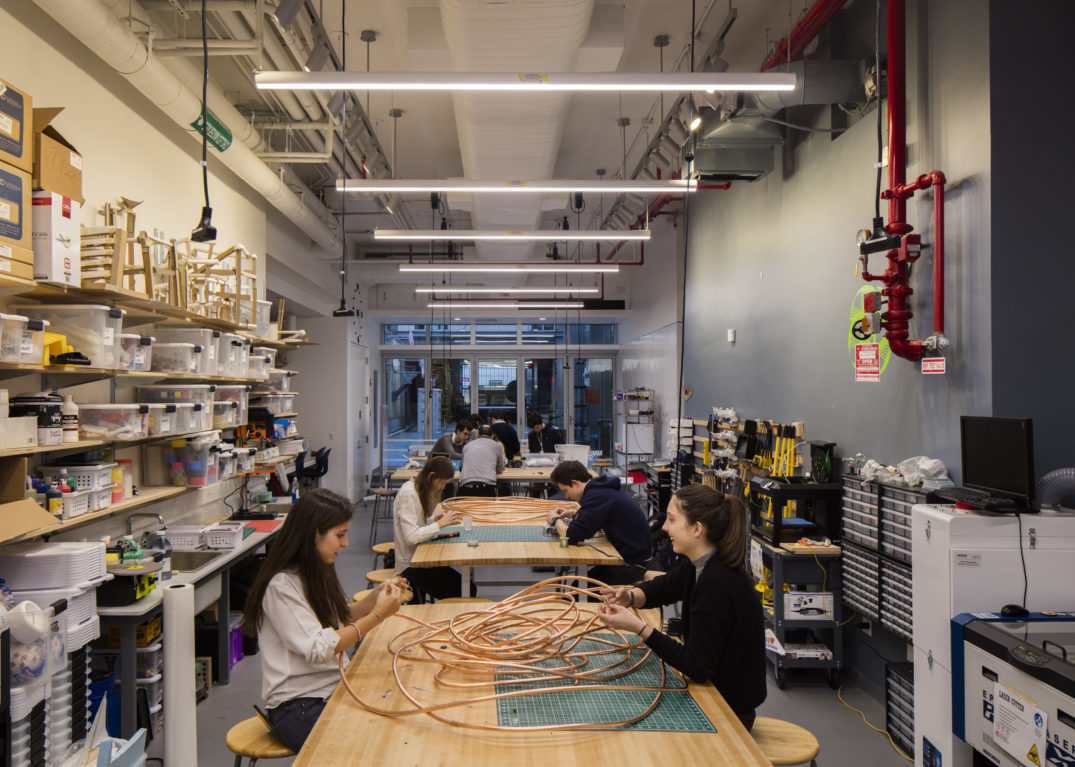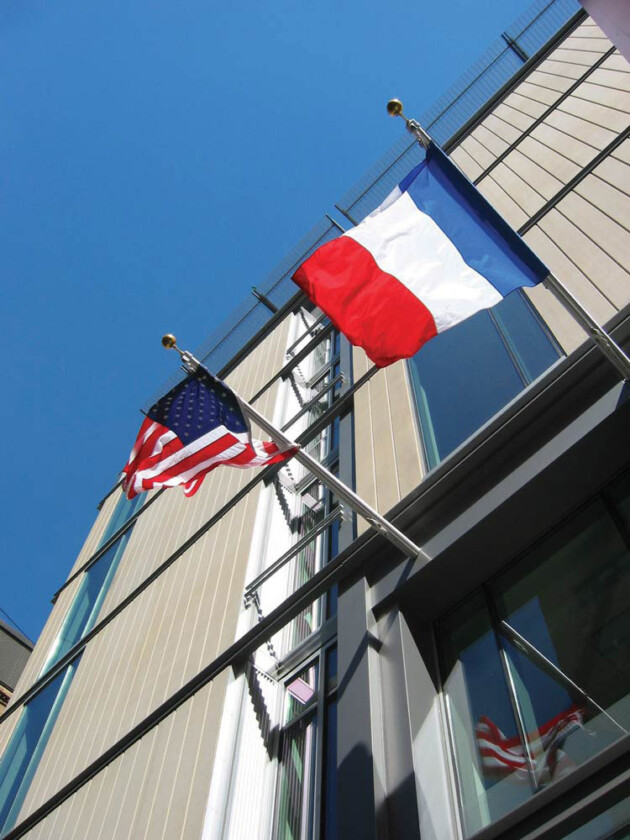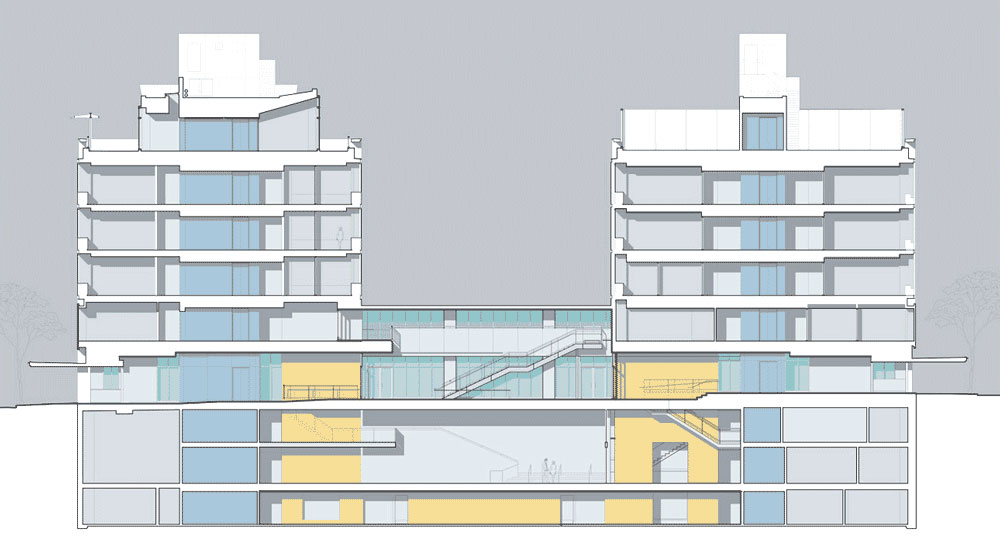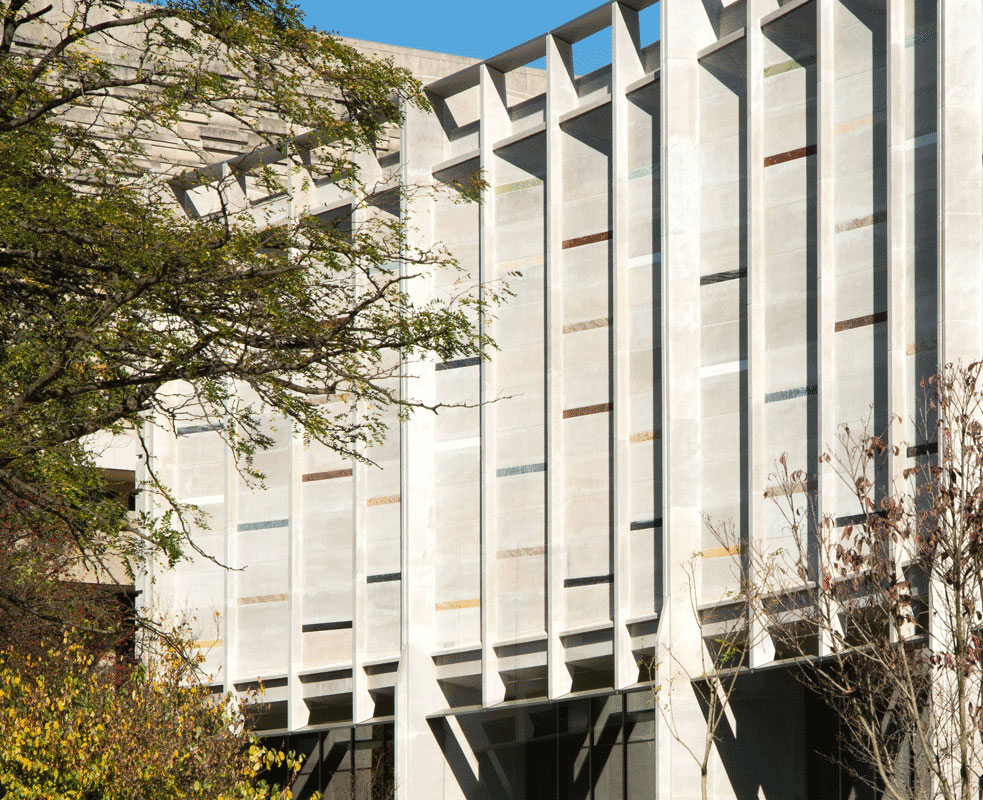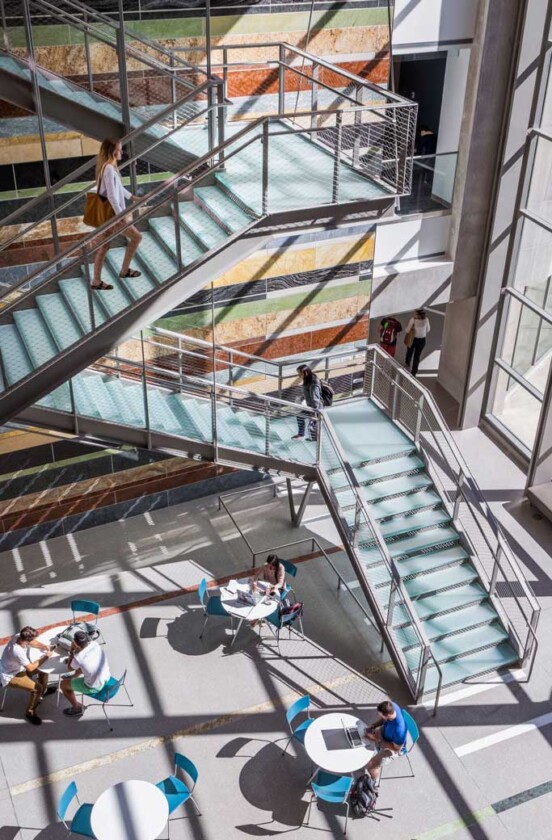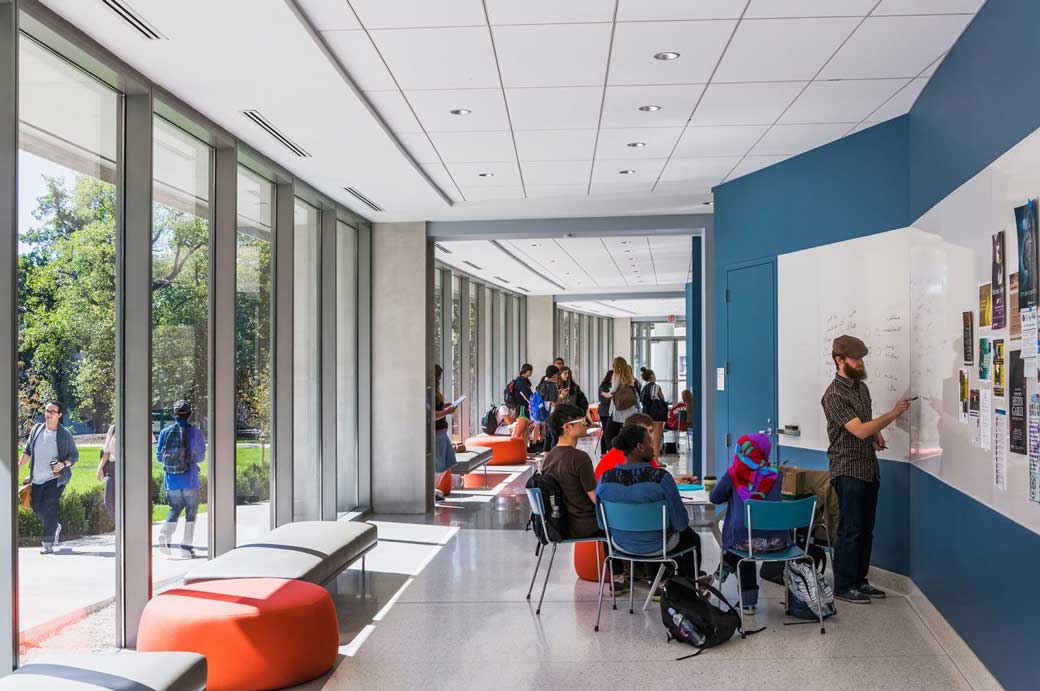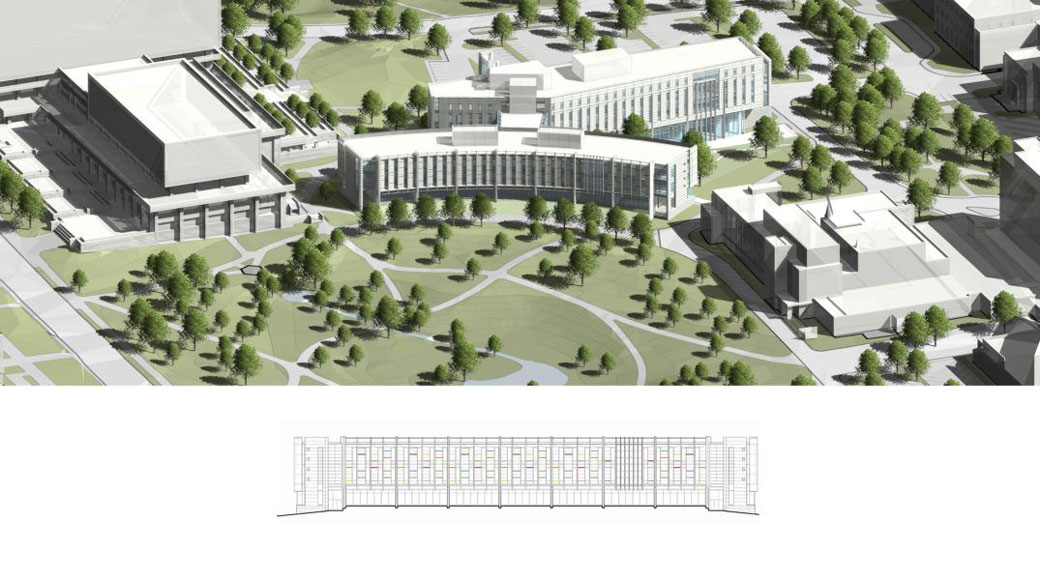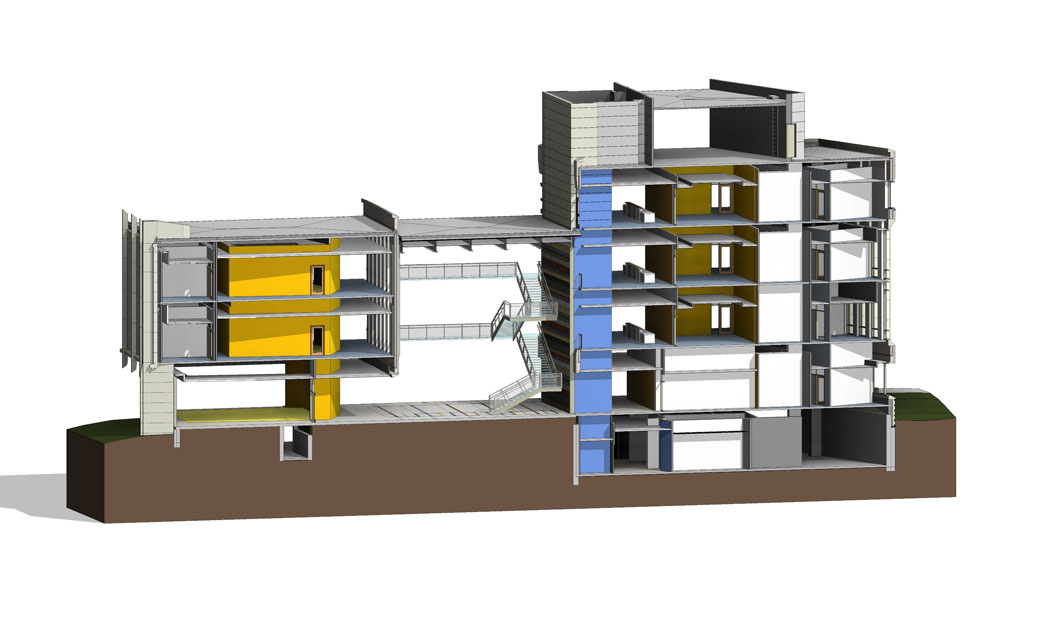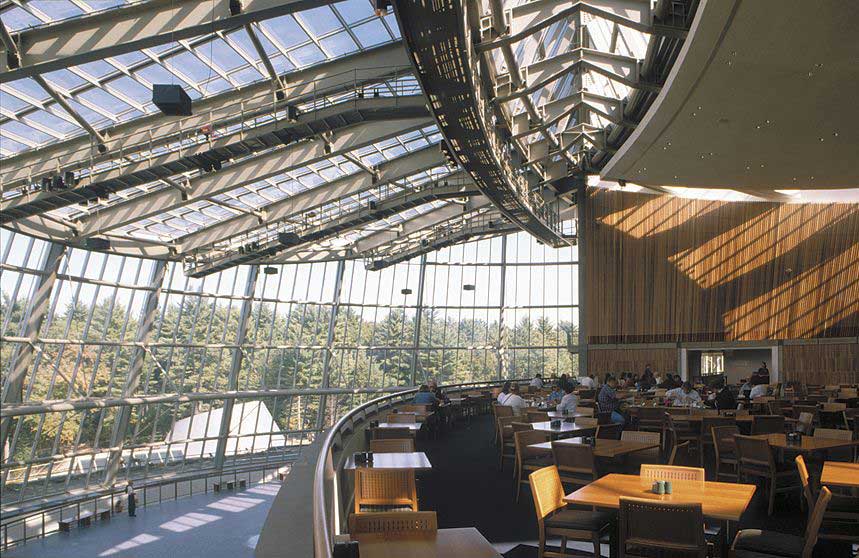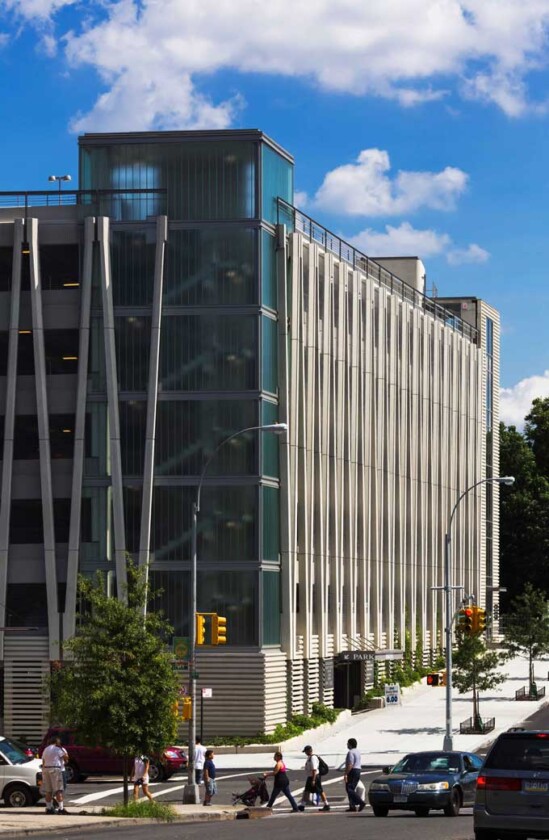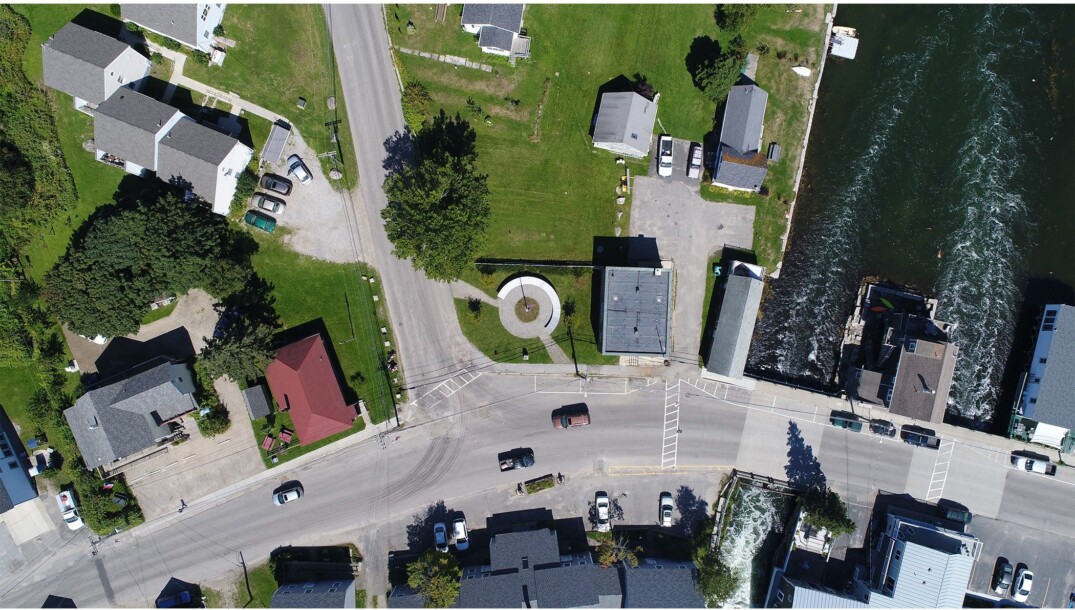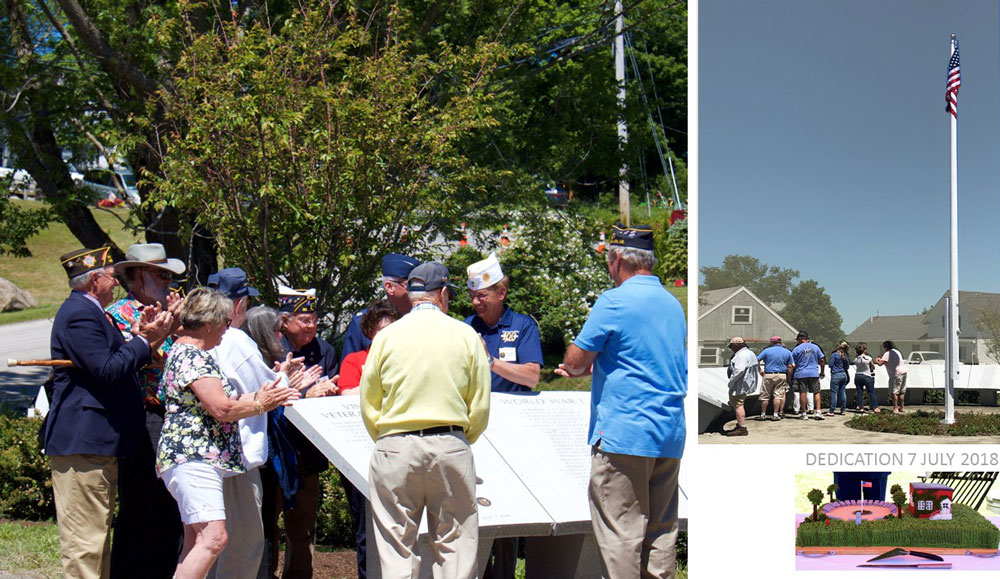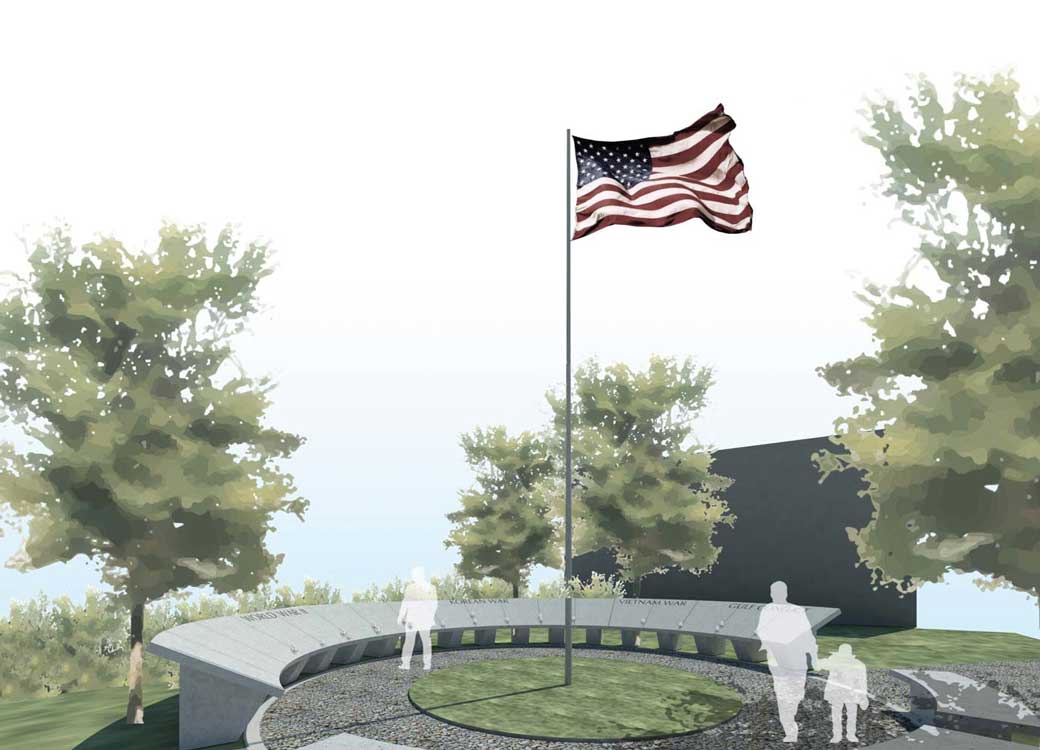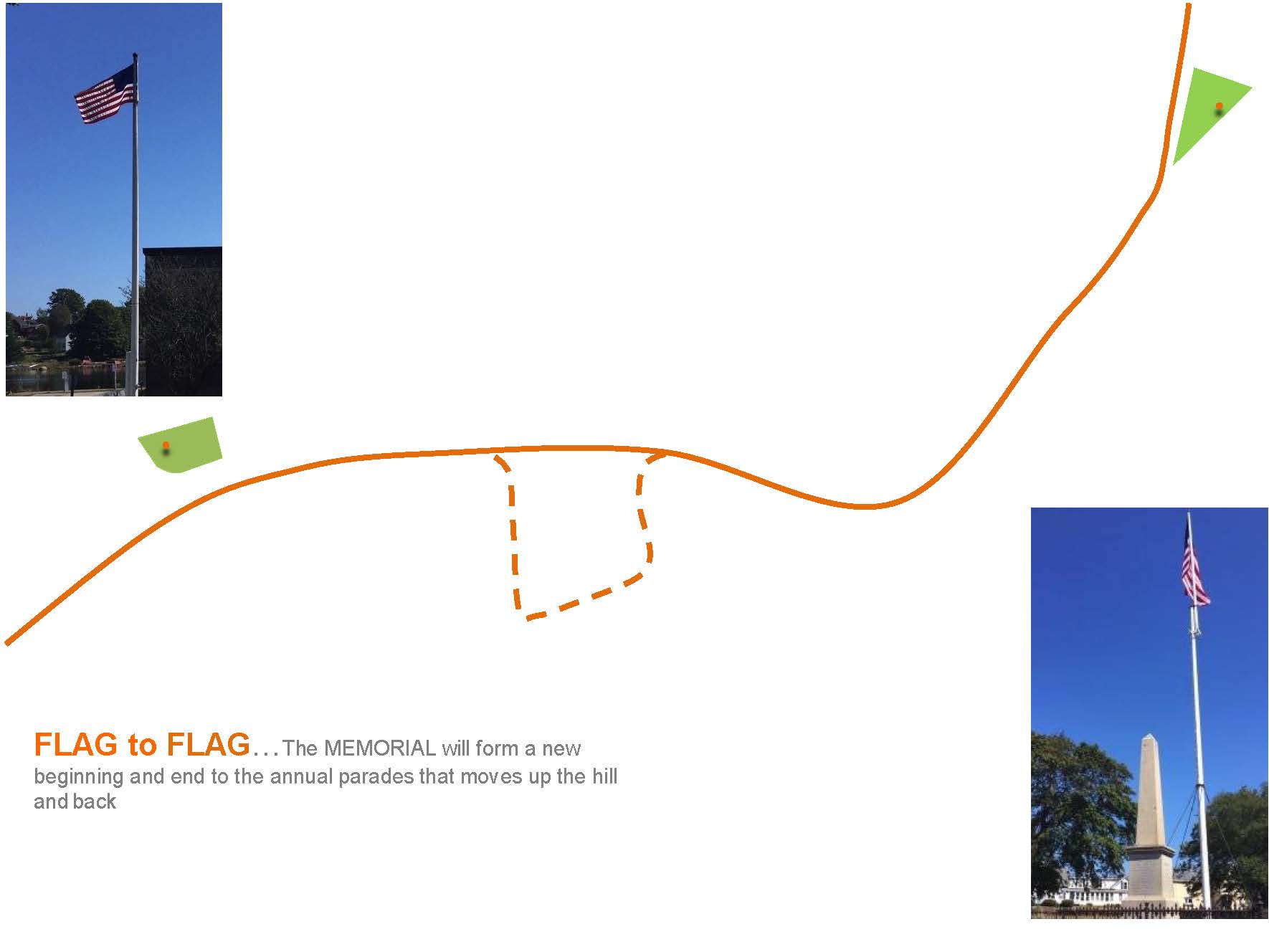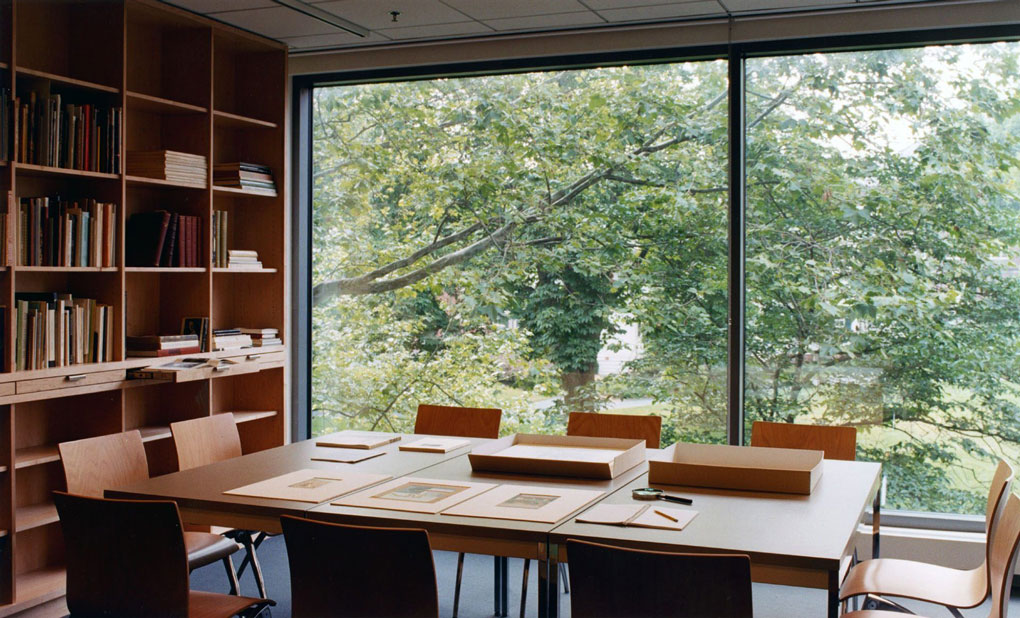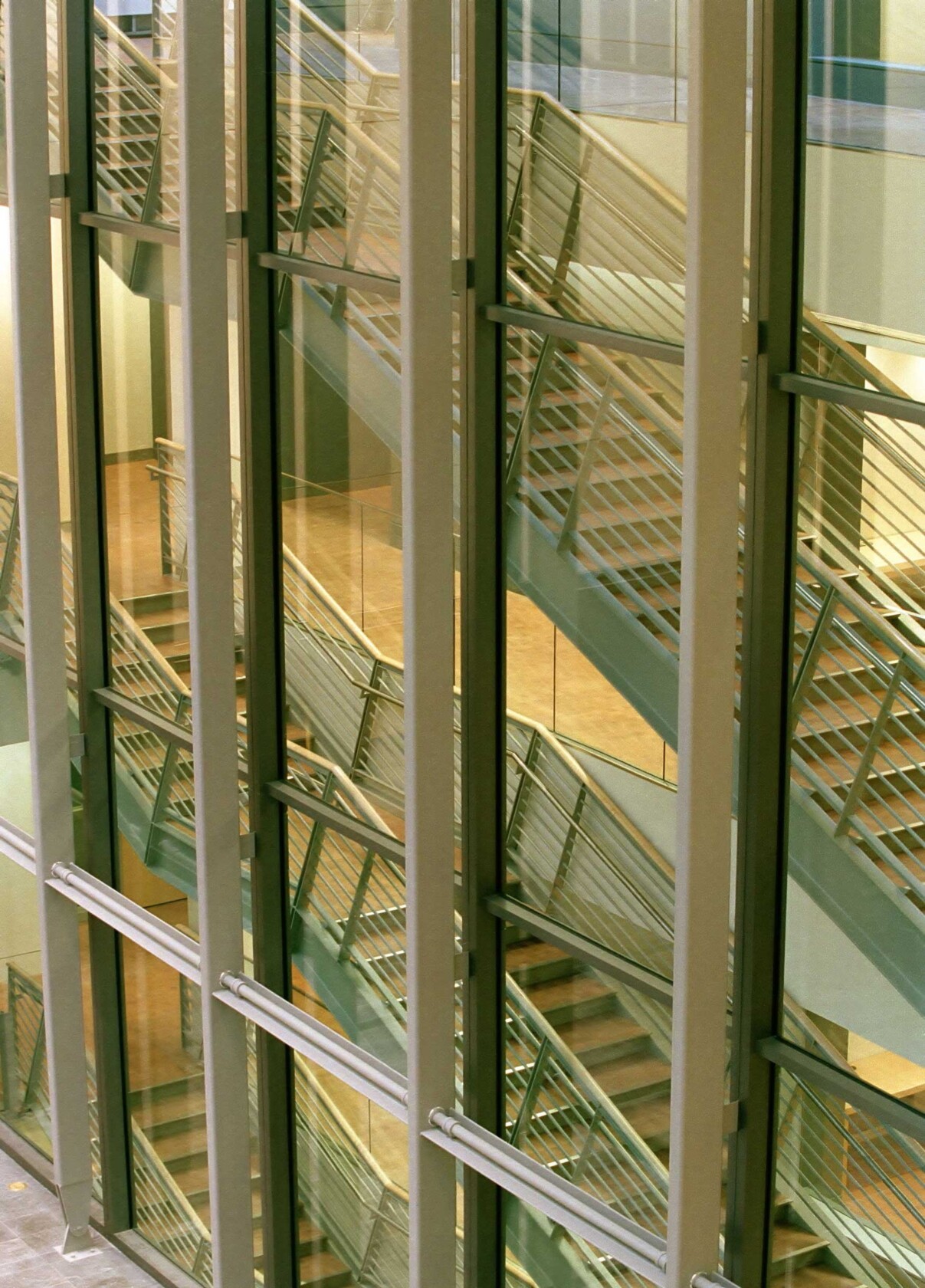THE HARLEM MEER OUTDOOR CENTER IN CENTRAL PARK | New York, NY
2024 | Susan T Rodriguez | Architecture • Design in collaboration with Mitchell Giurgola and the Central Park Conservancy
Located at the intersection of History, Landscape, Recreation, and the City, the design for the New Harlem Meer Center builds upon the historic framework envisioned by Olmsted and Vaux to re-connect the Harlem Meer and surrounding community to the rest of the Park. The design calls for the demolition of the existing facility, allowing for the re-establishment of the historic watercourse along the western edge of the site, opening up views to Huddlestone Arch. Built into the topography of the site, the landscape extends over a new glass and stone pavilion which defines the eastern edge of a monumental outdoor room containing a new seasonal pool, rink and green. Unifying the project is the renewal of the surrounding landscape including a new waterfront boardwalk. Architecture and landscape come together to create a recreational experience integrated into the Park’s magnificent landscape, accessible to the public throughout the year. The project is the largest in Central Park Conservancy’s history.
Pursuing LEED Gold
Awards | NYC Public Design Commission Excellence in Design Award
Central Park Conservancy: Exciting Things to Come at the Harlem Meer Center Video
Central Park Conservancy: Harlem Meer Project Video
Press Release & Project Description
Central Park Conservancy: Lasker Rink and Pool Restoration
Model Photography | Aislinn Weidele
CENTRAL PARK: THE HARLEM MEER CENTER
CENTRAL PARK: THE HARLEM MEER CENTER
Re-Imagining Central Park's Lasker Pool and Rink
Info
COLLEGE OF THE ATLANTIC, DAVIS CENTER FOR HUMAN ECOLOGY | Bar Harbor, ME | 22,500 GSF
2021 | Susan T Rodriguez | Architecture • Design with OPAL
Sited between sweeping views of Frenchman’s Bay and Acadia National Park on Mount Desert Island, the new Center for Human Ecology weaves together the interdisciplinary study of Human Ecology with environmental sustainability. Inspired by the unique character and culture of the oceanfront campus, the design of the new building reinforces an immersive learning experience on the Maine coast.
The Davis Center for Human Ecology transforms the north end of campus and forms a new academic core of the College. The Center frames an outdoor landscape and gathering space, while maintaining views through and from the building to the Atlantic Ocean—the College’s backdrop and namesake. Embracing the interdisciplinary nature of the curriculum, the design integrates studios for painting, printmaking, drawing and digital media, labs for botany, chemistry, geology, zoology and physics as well as a greenhouse, herbarium and specimen storage and classrooms for the humanities. Unifying the program, shared flexible spaces and study alcoves extend learning beyond the classroom, fostering collaboration and community. Constructed to the stringent German Passive House standards for energy efficiency and indoor air quality, the building consumes 80 percent less energy than a comparable code-compliant building. Renewable Energy is generated from a solar array that extends across the entire roof of the building. Passive solar gain from south-facing glass mitigates heating demand during Maine’s long, cold winters, while visually connecting interior spaces with the outdoors. The building’s use of locally sourced materials – including a nearly all-wood structure and exterior envelope – reduces its lifecycle carbon footprint and effectively neutralizes the environmental impact of its construction. The building performs at the highest level, enhancing the long-term sustainability of the College’s campus with inspiring new spaces and memorable experiences that will stand the test of time.
Awards | AIA National, Architecture Award, 2024
AIA Maine, Honor Award for Excellence in Architecture, 2022
AIA New England, Design Citation Award, 2022
The Chicago Athenaeum, American Architecture Award Honorable Mention, 2022
Mies Crown Hall Americas Prize Nomination, 2022
The Davis Center Construction Time-Lapse Video
The Davis Center for Human Ecology Drone Video
College of the Atlantic Solar Edge Tracker
CoA’s Newest Academic Building, Opened for Classes
Transformative Campus Project Set for COA
College of the Atlantic Magazine Spring 2019 (page 28-37)
Photo Credits | Trent Bell Photography, Jen Holt Photography, Susan Rodriguez, Jameson Lowrey, OPAL, Darron Collins, John Gordon, E.L. Shea
COLLEGE OF THE ATLANTIC
COLLEGE OF THE ATLANTIC
A New Center for Human Ecology on an Oceanfront Campus
Info
PRIVATE RESIDENCE | Putnam County, NY |
2023 | Susan T Rodriguez | Architecture • Design
Perched on a ridge overlooking the Hudson River, the design frames expansive views of the Hudson Highlands recalling the breathtaking tradition of landscape painting of the Hudson River School. The project also draws inspiration from the name of the steep drive leading to the site – EYRIE – A nest of a bird of prey, typically built high in a tree or on a cliff. Floating above the rugged topography to minimize the impact on the site, a simple rectilinear volume of zinc, cedar and glass cantilevers on three sides above a base of glass and locally quarried stone. The design positions the main shared living space on the upper level, with floor-to-ceiling windows and a continuous balcony. The den and study area occupy the cantilever over a steep western ravine with views extending through the building. Bedrooms are located below, accessed via a glass walkway along a landscape of native plant material. A double-height entry volume connects the two floors and reveals an uninterrupted vista through the building of the Bear Mountain Bridge. Cut into the slope of the site, the lower level houses a game room, workroom and mechanical spaces. Sustainability and energy performance were of central importance during the design process, with a goal of net-zero energy consumption. Sustainable features include deep overhangs, triple glazing, a highly insulated envelope, a 19-kW photovoltaic panel array on the sloped roof of the living space, cross ventilation, radiant heating and a geothermal system. Experiencing the dramatic views from this unique vantage point is accessible on all levels, supporting multigenerational use throughout the year.
Awards | SARA NY Design Award, 2024
Consultant Team | LERA, Structural Engineer; Polise Consulting Engineers, Mechanical, Electrical and Plumbing, Scott Matthews, Lighting Design
General Contractor | Heitmann Builders Inc.
Photo Credits | Jameson Lowrey, Susan Rodriguez
PAUL J. SCHUPF ART CENTER | Waterville, ME | 29,000 GSF
2022 | Susan T Rodriguez | Architecture • Design in collaboration with OPAL / Architecture Research Design
The Paul J. Schupf Art Center is a new beacon for the arts in downtown Waterville, Maine. The project, a transformation of an historic site on Main Street, is part of an initiative led by Colby College and Waterville Creates! to reinvest in the city’s downtown and forge stronger connections with the nearby campus. Located at a unique civic intersection, the Center activates a community crossroads at Main Street and Castonguay Square. The building’s design reveals the diversity and vitality of the spaces within, celebrating its important role in the community. Weaving together old and new, the project brings together local arts organizations in film, drama, music, dance, and the fine arts. In addition to new galleries, a classroom, pottery studio, rehearsal space, three screening rooms, box office and cafe, the Center creates a new threshold and lobby for the 800-seat historic Waterville Opera House situated at the upper level of the adjacent City Hall building. The design links the existing Opera House to shared, flexible public space within the new building centered around a new south-facing, double-height atrium overlooking the city green. Conceptually extending the street and Square into the public space of the building, the atrium features a new two-story volume that houses the Colby College Museum of Art Gallery and a Rehearsal Space on the first and second floors, respectively. The use of industrial materials throughout—concrete, steel, corrugated metal, cabling and brick—draws inspiration from Waterville’s heritage as a mill town. Building upon the foundations of the original building, the project follows Passive House standards with a focus on creating a high-performance envelope.
LEED Silver Equivalent
Penobscot Bay Pilot News Article
INDIANA UNIVERSITY METZ BICENTENNIAL GRAND CARILLON | Bloomington, IN | 128 feet tall
2020 | Susan T Rodriguez | Architecture • Design in collaboration with Browning Day
Marking the intersection of Music, Landscape, History and Student Life, the design for the new Grand Carillon seeks to establish a symbol of the University’s Bicentennial, a new focal point on campus and place of gathering. The structure is designed to accommodate 65 bells weighing approximately 88,000 pounds. Its new location at the heart of campus, set within the Arboretum, recasts the landscape as an outdoor concert hall with the Grand Carillon as its centerpiece. The site lies at a crossroads of campus movement at the confluence of three existing campus pathways. The overall configuration of the carillon is defined by six limestone piers that form the primary structure of the tower. A series of smaller vertical fins complete the radial framework of the structure above. Horizontal steel rings visually and structurally unify the tower and provide lateral bracing. The overall ensemble supports the instrument – bass, treble bells and playing cabinet — suspended aloft. The new outdoor room created below the tower’s structure is a “hotspot” accessible by students going to and from classes.
Awards | SARA National Design Award, 2021
The Chicago Athenaeum, American Architecture Award, 2022
IU Carillon Performance, March 2021
IU President McRobbie’s Remarks at the Groundbreaking
Download IU Carillon Booklet PDF
Photo Credit | Hadley Fruits, James Brosher / Indiana University, Susan Rodriguez, Browning Day, Michael Reschke, Eric Rudd / Indiana University, Ty Vinson / Indiana Daily Student
INDIANA UNIVERSITY BICENTENNIAL CARILLON
INDIANA UNIVERSITY BICENTENNIAL CARILLON
A monumental instrument at the heart of campus
Info
SYLVIA H. RAMBO UNITED STATES COURTHOUSE | Harrisburg, PA | 243,000 GSF
2023 | Susan T Rodriguez (Design Partner, Ennead Architects)
The design of the Sylvia H. Rambo Courthouse establishes a new identity for the Federal Judiciary’s middle district in the capitol city of Harrisburg Pennsylvania. Located on the geographic ridgeline between the Susquehanna River and Paxton Creek, the new Courthouse is inspired by Harrisburg’s civic history and regional landscape. The building’s design seeks to establish the new United States Federal Courthouse as a northern gateway to the city and contemporary civic landmark. The courthouse massing, a legible intersection of the building’s primary program elements, juxtaposes the rhythm and horizontality of the podium and public spaces with the distinct shape of the tower housing the 8 courtrooms (5 district, 2 magistrate and 1 bankruptcy) along with judicial chambers. The façade’s geometry responds to solar conditions and program, while engaging with the surrounding regional landscape to capture views of the Capitol Complex and natural landscape formations, including the Blue Mountain water gap and the Susquehanna River. The courthouse will be enveloped by a new landscape along with an accessible green roof terrace above the podium level. The ecology of this new landscape will reintroduce a local habitat to the Midtown district. The overall design of the building embodies the vital intersection between the Federal judiciary and the community it serves. The building and its surrounding landscape will become a civic icon and public space that serves as a catalyst for further revitalization of the area while promoting stronger visual and physical links to the Capitol Complex and the rest of Harrisburg.
Pursuing LEED Gold
Photo Credits | Susan Rodriguez
Women Do Justice in Building New Federal Courthouse in Pennsylvania
New Courthouse Honors Judge Sylvia Rambo, Tireless Trailblazer
Harrisburg Courthouse Named After Longtime Local Judge
Another First for ‘Iconic Judge’ Sylvia Rambo
Biden Signs Bill Naming Sylvia H. Rambo United States Courthouse in Harrisburg
SYLVIA H. RAMBO UNITED STATES COURTHOUSE
SYLVIA H. RAMBO UNITED STATES COURTHOUSE
A New Federal Courthouse in Harrisburg, Pennsylvania
Info
GREAT MIAMI ROWING CENTER | Hamilton, OH | 14,000 GSF
2024 | Susan T Rodriguez | Architecture • Design
Located on a prominent site in downtown Hamilton, Ohio, the new boathouse for the Great Miami Rowing Center will mark a unique intersection of the river and the city. The Boathouse will be the first dedicated facility for GMRC, a vibrant community organization founded in 2007. Proposed as a catalyst for community recreation and engagement, the project represents a vision for an activated and energized riverfront. The site, which will be shared with a future residential development, will form a beacon and threshold to a developing network of new recreational facilities along the river. The design for the Rowing Center synthesizes the complex requirements of a boathouse while providing light, uplifting spaces to exercise and gather as a community. The new boathouse, intended to operate year-round as a publicly accessible facility, will integrate the building into the site and the community while preserving the unique ecology and riverfront infrastructure. Guided by sustainable principles and LEED Silver requirements the design will support health and wellness, optimize energy performance, and adapt to the evolving needs of the Great Miami Rowing Center throughout all four seasons.
CHEWONKI CAMP FOR GIRLS, CABINS| Wiscasset, ME | 540 GSF
2021 | Susan T Rodriguez | Architecture • Design
Five new seasonal cabins initiate the first phase of a residential camp for girls on Chewonki Neck, a 400-acre peninsula on the coast of Maine that has been home to the Chewonki Foundation and a boys’ camp for more than 100 years. The design for the new cabins is inspired by the immersive outdoor summer experience for which the camp is known and reinforces each camper’s relationship to the natural environment. The cabins, a series of simple shed roof structures, are located along the eastern shore of the peninsula on a north south trail running through the wooded landscape. Each cabin accommodates 8-12 campers and 2 counselors, with bunk beds organized into a c-shape around the perimeter forming an open gathering area at the center. Strategically located windows provide light and ventilation with an individual view of the surrounding landscape from each bunk. Storage is integrated between and below the bunks for equipment and personal belongings. The primary structure is based on an 8-foot planning module and is a timber frame construction made from locally harvested hemlock with a spruce plank enclosure and metal roof. The first phase of construction for the new girl’s camp began in mid- August 2019.
What’s in a Name? Announcing the Monikers for our Eastside Campus Buildings
Chewonki 2020 Winter Chronicle
Chewonki Announces Campus Expansion
Chewonki Campus Expansion Update
Photo Credit | OPAL / Architecture Research Design
THE CHEWONKI FOUNDATION - SUMMER CAMP CABINS
THE CHEWONKI FOUNDATION - SUMMER CAMP CABINS
A New Camp Chewonki for Girls
Info
CHIPAKATA CHILDREN’S ACADEMY | 14+ FOUNDATION, Zambia, Africa
2015-2017 | Susan T. Rodriguez with Frank Lupo, Randy Antonia Lott, Nat Oppenheimer, Fabian Bedolla, Hiroko Nakatani (Ennead Lab)
The Chipakata Children’s Academy is a new primary school in rural Zambia, located approximately 100 kilometers east of Lusaka, the country’s largest city. The project establishes a sense of place and community for seven rural villages. The design for Chipakata Children’s Academy transforms the regional school typology to create a new paradigm that introduces open space between classrooms for collaborative activity and “raises the roof” to create second-floor open-air classrooms. Responsive to the local climate, a continuous roof overhang shelters spaces on both levels from harsh solar gain during the summer months and provides cover during the rainy season. Clerestory windows are integrated into all the classrooms to maximize daylight. The first phase of the project, which opened in January 2015, includes a classroom building, community pavilion, administrative office and teachers’ housing. Nearby, agricultural fields dedicated to generating food and income support the operation of the school and ensure long-term economic sustainability for the project. Local village residents were key participants throughout the development and construction process. A community gathering space—a triangular shaped structure—provides shelter from the sun and rain and a flexible space for eating, gathering, and community celebrations. A gateway pavilion completed in late 2016 is the latest addition to the campus with another classroom building in construction.
Awards | AIA NY, Honor Award Winner, 2016; AIA New York State, Award of Merit, 2015; Architizer Award, 2015; SARA NY, Design Award, 2016
14+ Foundation 2017 Reflections & Initiatives Video
Photo Credit | Gord Ray, Joseph Mizzi, Fabian Bedolla, Chosa Mweemba
CHIPAKATA CHILDREN'S ACADEMY
CHIPAKATA CHILDREN'S ACADEMY
Defining a Sense of Place and Community in Rural Zambia
Info
WESTMORELAND MUSEUM OF AMERICAN ART | Greensburg, PA | 69,300 GSF
2015 | Susan T. Rodriguez (Design Partner, Ennead Architects)
Located on a hilltop overlooking the city of Greensburg, the Westmoreland Museum of American Art is an architecturally dynamic building marrying old and new with a cantilever addition that stands as a striking counterpoint to the original neo-Georgian structure. The design strengthens and renews institutional identity and the museum experience while extending its legacy into the future. The transformation of the building reinforces the importance of the arts and the Museum’s vital role in the community and the region. The project also encompasses a new landscape and sculpture garden extending the Museum beyond its walls to forge stronger connections to the city and the surrounding neighborhood. The expanded building frames the landscape while providing a transparent backdrop linking interior and exterior and revealing the activity within. Perpendicular to the cantilevered addition, a new south façade frames the original brick building. This new layer is defined by a plane of pre-cast concrete to match the original limestone of the building and a two-story colonnade of slender paired columns along its entire length. Three new vertical glass openings in the original brick envelope have been created to mark the entry. At the western end of the building, an angled pre-cast plane frames a commissioned sculpture by Tim Prentice, forming a focal point as one approaches the building from downtown along Main Street. A simple palette of materials and textures – precast concrete, zinc, brick and glass – unifies the expansion with the existing building. Sustainability is integral to the project, with state-of-the-art mechanical systems incorporated throughout, along with enhanced daylighting and views, locally-sourced materials and a substantial reduction of exterior hardscape with the creation of the sculpture garden. Use of native and adaptive plantings eliminates the need for irrigation.
LEED Silver
Awards | The Chicago Athenaeum, The American Architecture Award 2016; SARA NY, Design Award, 2016
Photo Credit | Aislinn Weidele, Roy Engelbrecht
WESTMORELAND MUSEUM OF AMERICAN ART
WESTMORELAND MUSEUM OF AMERICAN ART
A New Identity for the Arts on Main Street
Info
MASS ART, DESIGN AND MEDIA CENTER | Boston, MA | 72,000 GSF
2016 | Susan T. Rodriguez (Design Partner, Ennead Architects)
Mass Art’s new Design and Media Center establishes a new identity and threshold for the College along Boston’s “Avenue of the Arts”. The Center is a window into the vibrant art and design community of the College located at the critical intersection of campus and downtown Boston. The design weaves old and new together through the transformation of a historic brick gymnasium into a renewed, glass enclosed, monumental volume that encapsulates Mass Art’s spirit of design and the college’s goals for the future. The Center is a state-of-the-art flexible network of studios, galleries, and shared technical spaces designed to support Mass Art’s inter-disciplinary curricular goals and to foster an environment of collaboration.Reinforcing the school’s long history of independence and innovation, the Center creates a distinct and visible new front door to campus on Huntington Avenue. A new public plaza extending from the Center blurs the distinction between interior and exterior space while the exhibition hall acts as the nucleus of the building, unifying and connecting the new Center to the surrounding campus and city.
LEED Silver
Awards | Chicago Athenaeum Award for American Architecture, 2017; SARA NY Design Award, 2017; Boston Society of Architects Design Award, 2016
Photo Credit | Richard Barnes, Matthew Melrose | LERA, Peter Vanderwarker, Don Weinreich | Ennead Architects
MASSACHUSETTS COLLEGE OF ART AND DESIGN, DESIGN AND MEDIA CENTER
MASSACHUSETTS COLLEGE OF ART AND DESIGN, DESIGN AND MEDIA CENTER
Revealing the arts on Boston's 'Avenue of the Arts'
Info
STATEN ISLAND COURTHOUSE | Staten Island, NY |184,000 GSF
2015 | Susan T. Rodriguez (Design Partner, Ennead Architects)
On a hilltop site overlooking New York Harbor, the Staten Island Courthouse projects a civic identity and a distinctly twenty-first-century vision of our judicial system. Four copper-clad “towers of justice” are a beacon and a commanding presence on the St. George skyline. Housing the New York State Supreme Civil and Criminal Courts, lower Criminal Court and related agencies, the facility fulfills the modern programmatic requirements of the Court while respecting the site’s historical significance and the material character and scale of the surrounding residential neighborhood. Archeological investigation into the history of the property as a 19th-century quarantine hospital uncovered a burial ground at the northern end of the site. This has been commemorated with the creation of a Memorial Green – a new civic landscape framed by the Courthouse, Borough Hall, the New York Public Library and the Staten Island Theater. The new courthouse provides two distinct faces to the City, responding to the dual contexts of harbor and community. The primary public areas of the building, including the lobby and jury assembly spaces, face east toward the harbor. The building offers striking views of the Memorial Green, New York Harbor and the Verrazano Narrows. The building’s western façade is a denser composition of precast, copper and glass in response to the afternoon light. The opacity provides privacy for jury deliberation rooms and judges’ robing rooms, adjoining the courtrooms within. The ordering of the four towers responds to the rigorous organization of the courts within. The towers are set back from the transparent glass curtain wall, providing a connecting corridor for public circulation, allowing natural light into the building’s public spaces and offering views of the harbor beyond.
LEED Silver
Awards | Design Commission of the City of New York, Special Recognition Award, 2009; North American Copper in Architecture Award, 2017
Photo Credit | Jeff Goldberg / Esto, Stefen Turner, Aislinn Weidele
INDIANA UNIVERSITY ESKENAZI MUSEUM OF ART RENOVATION | 112,000 GSF | Bloomington, IN | 2019 | Susan T Rodriguez (Design Partner, Ennead Architects) in collaboration with Browning Day
Indiana University’s Eskenazi Museum of Art, a 1982 I. M. Pei-designed building featuring the architect’s signature triangles and light filled atrium, reopened its doors in the Fall of 2019 following an extensive renovation process. As a fresh canvas for the museum’s more than 45,000 objects, ranging from ancient gold jewelry to paintings by modern masters, the renovation creates a new center for education, conservation and curatorial studies, including three new art study rooms, updated administrative offices, a new café and a sky bridge connecting the east and west wings of the building. The extensive collections represent “nearly every art-producing culture throughout history.” (Eskenazi Museum of Art) The removal of window tinting and installation of a sidewalk in front of the building reveal the museum within creates more transparency to the Indiana University community and extends the museum to the campus landscape. The newly renovated galleries offer more intuitive navigation, high-speed Wi-Fi, interpretive strategies encouraging more attentive viewings and connections to the collections, and enhanced lighting and focus areas to highlight collection themes. It now hosts 11,000 college and graduate students while providing learning and programming for local K-12 students. The renovated museum is dedicated to engaging students, faculty, artists, scholars, alumni and the wider public through the cultivation of new ideas and scholarship, underscoring the original vision of its founders, Herman B. Wells and Henry Radford Hope, and solidifies the museum’s position as one of the preeminent teaching museums in the country for generations to come.
Photo Credit Brad Feinknopf, Susan Rodriguez
ESKENAZI MUSEUM OF ART AT INDIANA UNIVERSITY
ESKENAZI MUSEUM OF ART AT INDIANA UNIVERSITY
Renewing I.M. Pei's 1982 Design
Info
GREAT HALL AT THE BROOKLYN MUSEUM | Brooklyn, NY | 37,000 GSF
2015 | Susan T. Rodriguez (Design Partner, Ennead Architects)
The transformation of the Great Hall at the Brooklyn Museum is one of a series of projects completed over 10 years within the Brooklyn Museum. The design enlivens the historic space to create a modern gallery at the heart of the Museum, transforming an outdated space into a state-of-the-art museum facility. Part of the original 1897 design by McKim, Mead, and White, the monumental 37,000 square foot central hall’s ever-changing identity has now become a permanent gallery that introduces the curatorial mission of the Museum at the threshold to the collections. Visitors are welcomed into the sky-lit hall with a reinforced connection to the art. Permanent and temporary exhibition sequences are carved out of the original grid of columns to form distinct yet connected galleries. Overlooks from the second floor invite visitors upstairs via a new grand staircase and bridge made of glass and steel, visually opening up the second floor from below and establishing clues to movement through the space. Concealed technical and climate-control systems create a state-of-the-art museum environment.
GREAT HALL AT THE BROOKLYN MUSEUM
GREAT HALL AT THE BROOKLYN MUSEUM
A transformed threshold to the arts
Info
ELIZABETH A. SACKLER CENTER FOR FEMINIST ART| Brooklyn, NY | 8,500 GSF
2007 | Susan T. Rodriguez (Design Partner, Ennead Architects)
The Elizabeth A. Sackler Center is celebrating its 10th anniversary as the permanent home for Feminist Art at the Brooklyn Museum. Judy Chicago’s “The Dinner Party” is the centerpiece of the overall installation. Set within a triangular gallery that forms the heart of the Center, the design reinforces the scale and geometry of the piece, in contrast to the rectangular volume of the Museum. The design is conceived of as a series of distinct yet interconnected experiences through which one moves in a carefully choreographed sequence. This sequence draws visitors through concentric layers — the perimeter walls of the original nineteenth-century building, the enveloping zone of changing exhibition galleries and the inner sanctum of “The Dinner Party” gallery – to participate with the artwork notable for elevating “female achievement in Western history to a heroic scale traditionally reserved for men.” Lined with large tablets of glass, the gallery infinitely reflects the artwork and heightens one’s perception of the piece. This strategy intentionally challenges the ‘white box’ gallery paradigm with an architecture that actively engages the art with the distinct purpose of deepening the visitor’s appreciation of and connection to it. The Center also includes changing exhibit galleries, a study area and presentation space to promote dialogue and exchange.
Awards | SARA National Design Award, Interiors 2009; Beverly Willis Foundation Award,2015, AIA NY, Award of Merit,Interiors, 2009, AIA New York State, Citation for Design Excellence, 2009
Elizabeth A. Sackler Center for Feminist Art: Gallery Design
“Commemorating Women”: Ailey School Students’ Performance
“Feminist art gets place of pride in Brooklyn” The New York Times Article
Photo Credit | Richard Barnes, Aislinn Weidele
ELIZABETH A. SACKLER CENTER FOR FEMINIST ART, BROOKLYN MUSEUM
ELIZABETH A. SACKLER CENTER FOR FEMINIST ART, BROOKLYN MUSEUM
Feminist art, theory, and activism at the Brooklyn Museum
Info
When I would see Frank at the Paramount in Manhattan, the streets were so crowded with people hoping to get in to his shows that it looked like New Year's Eve in Times Square, every day.
FRANK SINATRA SCHOOL OF THE ARTS | Astoria , NY | 185,000 GSF
2009 | Susan T. Rodriguez (Design Partner, Ennead Architects)
The new Frank Sinatra School of the Arts creates a powerful architectural identity for this 1,000-student public high school for the visual and performing arts. The design celebrates the school’s arts curriculum and connects visually, programmatically and spatially with the surrounding community. The transparency of the building’s primary façade reveals the studio and rehearsal spaces within and draws the city into the building at the first two levels. A multistory skylit atrium cuts through the building to illuminate interior spaces and highlight the oval form of the concert hall at the center of the building. The five-story structure culminates in a rooftop landscaped courtyard for gatherings and outdoor performances. The building, which includes three theaters, studios and rehearsal spaces, galleries, a media center, gymnasium, library, cafeteria and general classrooms, occupies a full block on 35th Avenue between 35th and 36th Streets in Astoria, Queens. The site’s primary urban face is directly across the street from historic Kaufman Astoria Studios and the Museum of the Moving Image. The new school enlivens the street and reinforces the neighborhood’s connection to its cultural and civic buildings.
Awards | The Chicago Athenaeum: The American Architecture Award 2010; AIA NYC, Merit Award 2012; AIA New York State, Excellence in Design Award, 2010; SARA NY Design Award, 2010; SARA National Design Award, 2011; Beverly Willis Foundation Award, 2015
Photo Credit | Jeff Goldberg / Esto
FRANK SINATRA SCHOOL OF THE ARTS
FRANK SINATRA SCHOOL OF THE ARTS
Celebrating public arts education
Info
BARD GRADUATE CENTER | New York, NY 34,000 GSF
1998-2010 | Susan T. Rodriguez (Design Partner, Ennead Architects)
The renovation and expansion of two residential buildings in Manhattan’s Upper West Side Historic District creates a state-of-the-art academic facility for the Bard Graduate Center. The project connects two early-twentieth-century townhouses on West 86th street to form a modern academic complex, expanding the public face of the institution. The overall scope of the project included the comprehensive renovation and expansion of both structures and the restoration of the historic brick and limestone façades to their original condition. In keeping with the curricular objectives of the Center, the design transforms a domestically-scaled environment into an academic setting while retaining the intimacy of the original buildings. The two-phase effort, begun in 1998, was initiated with the renovation of the western building. The strategic location of the vertical circulation core in the first phase enabled the second phase expansion into the adjacent building to be used exclusively for program. Behind the 1905 façades, the buildings were stripped to their structural frame and expanded vertically and horizontally to create an environment expressive of the intellectual and programmatic goals of the institution. Primary spaces include a new lobby and reception area, two lecture halls, library and digital imaging center, classrooms and seminar spaces, student and faculty lounges and administrative and faculty offices.
Awards | AIA/NYC, Citation: Adaptive Re-use/ Historical Preservation, 2001
Photo Credit | Jeff Goldberg | Esto, Aislinn Weidele
THE BARD GRADUATE CENTER
THE BARD GRADUATE CENTER
Home to the Decorative Arts, Design History and Material Culture
Info
GATEWAY CENTER, SUNY / WESTCHESTER COMMUNITY COLLEGE | Valhalla, NY | 70,000 GSF
2010 | Susan T. Rodriguez (Design Partner, Ennead Architects)
The Gateway Center at Westchester Community College is emblematic of the College’s commitment to providing a more accessible education for local residents and an American college experience for the many recent immigrants to the area. Sited to frame the natural beauty of the campus landscape, the Gateway Center is a threshold to the College and an initial expression of campus identity. The building’s Gateway Pavilion is the compositional focal point and the main public entry for visitors to the building and the campus overall. Integrated into the sloping topography of the site, entries open out to the landscape and the campus on two levels. The Center’s program includes shared gathering and assembly spaces, lecture hall, general-use classrooms, technology laboratories, fashion studio and a resource center to support the international students’ transition to American culture. The building and site are unified to form a sustainable daylit environment. Locally quarried stone references the historic buildings on campus, with glass and zinc a more transparent and lightweight counterpoint to the stone. In the northern wing, offices and classrooms are cantilevered over a glass-enclosed base. The monumental volume of the central atrium is a column-free space formed by a modular system of structural steel frames (“lobster pots”) clad with an aluminum and glass curtainwall. The brise-soleil structure on the south-facing façade allows for uninterrupted views of the campus while optimizing natural daylight and limiting glare within the building.
LEED Gold
Awards | The Chicago Atheneum: The American Architecture Award 2012; SARA / National Design Award, 2011; AIA Westchester / Hudson Valley, High Honor Award, 2011; AIA NYC, Merit Award, 2011; AISC, National Design Award 2011; SARA NY, Award of Excellence, 2011
Photo Credit | Jeff Goldberg | Esto, Aislinn Weidele, Susan Rodriguez
GATEWAY CENTER, SUNY / WESTCHESTER COMMUNITY COLLEGE
GATEWAY CENTER, SUNY / WESTCHESTER COMMUNITY COLLEGE
A Gateway to Education and Opportunity
Info
FIDDLEHEAD ISLAND| Penobscot Bay, ME
1993-2016 | Susan T Rodriguez | Architecture • Design
For the past 25 years, this seasonal island retreat 15 miles off the coast of Maine has been home to an evolving network of modular buildings. The island, quarried in the late 19th century exposing a jagged coastline of granite, is located on an active waterfront thoroughfare. The overall design strategy is grounded in a long term sustainable response to the unique aspects of the site and the seasonal use of the land — engagement with the working waterfront, views of the summer sunsets and boat traffic, and the challenge of building on a remote island. Inspired by two small cabins built in the 1950’s, the first phase of construction comprised a main and guest cabin connected by a raised wooden platform. Two additional structures—a barn with a sleeping loft and a new workshop—have been added as use of the island evolved. Building upon the simple vocabulary of the original cabins, the new post and beam structures have shed roofs with cedar shingled cladding incorporating utilitarian detailing with large sliding shutters and industrial hardware. All building materials were delivered to the site by barge at high tide. Each of the structures are striking both in the continuity seen from one building to the next as well as the singularity of each in response to the program and their location on island. The off-the-grid island incorporates a rainwater collection and gray water system with exposed gutters and downspouts and relies on limited use of propane to power appliances and lighting. A small generator pumps water and septic; a water tower, set at the island’s highpoint, pressurizes the system.
Awards | Architectural Record House 1997
Interior Design DesignTV At Home Interview
Photo Credit | Jeff Goldberg / Esto, Asher Lanier, Jamie Lowrey, Susan Rodriguez, Vinalhaven Historical Society Archive
HEIMBOLD VISUAL ARTS CENTER AT SARAH LAWRENCE COLLEGE | Bronxville, NY | 60,000 GSF
2004| Susan T. Rodriguez (Design Partner, Ennead Architects)
The Heimbold Visual Arts Center establishes a dynamic inter-disciplinary center for the visual arts at Sarah Lawrence College. The building provides a flexible framework of spaces for an intensive and creative community by unifying spaces for the arts into one building to foster dialogue between students and teachers of different disciplines. Dedicated studios for individual disciplines, as well as shared spaces for inter-disciplinary collaboration, technology, teaching and critiques are accommodated within the building. Sited to promote movement through the building and views into the arts, the design incorporates pre-existing campus pathways connecting the historic campus to newer residential and athletic buildings to the west. A stepped, grass-covered rooftop terrace extends the building into the campus landscape. This reduces the overall scale of the building, while forming a new south facing outdoor gathering space. A series of garage doors open up to studios, critique space and a café to visually and programmatically blur the distinction between interior and exterior.
LEED Certified
Awards | AIA NYC, Design Honor Award, Educational Facility, 2008; AIA NYC, Design Merit Award, Sustainability, 2008; AIA National COTE, Top Ten Green Buildings, 2005; AIA New York State, Award for Excellence in Design, 2005; AIA Westchester / Mid-Hudson, First Honor Award, and Sustainable Design Award, 2005
Photo Credit | Richard Barnes, Susan Rodriguez
HEIMBOLD VISUAL ARTS CENTER AT SARAH LAWRENCE COLLEGE
HEIMBOLD VISUAL ARTS CENTER AT SARAH LAWRENCE COLLEGE
A Flexible Framework for the Arts
Info
SCHERMERHORN HOUSE | Brooklyn, NY | 98,000 GSF
2009 | Susan T. Rodriguez (Design Partner, Ennead Architects)
Schermerhorn House defines a new paradigm for supportive housing in New York City. Developed by Common Ground Community with co-sponsor The Actor’s Fund, the building provides “supportive housing” for single adults transitioning out of homelessness, persons living with HIV/AIDS, and low-income community residents. Comprised of 189 micro-units, the building creates a community environment that furthers Common Ground’s goal of building safe, affordable, attractive and sustainable housing. The site is positioned directly above subway tunnels, necessitating an innovative cantilever system that can be seen in the four steel tresses in the base of the building. To lighten the load on the tresses, the upper floors and façade were made using lighter materials than the traditional brick typically used in affordable housing complexes. A combination of glass and metal on the façade allows for a luminous, dignified, and visually prominent building overlooking downtown Brooklyn. Formally and spatially, the building experiments with modularity. Five translucent channel-glass tower elements reflect the spatial ordering of the interior. The building’s units consist of 180 identical studio apartments and 9 suites organized around a central hallway.
Awards | Award of Honor, Society of American Registered Architects/National Council, 2012; AIA National Housing Award, 2011; AIA New York State Design Award of Merit; AIA Tri-State Design Awards, Honor Award, Beverly Willis Foundation Award, 2015; SARA National, Award of Honor, 2012; Boston Society of Architects, John M. Clancy Ward for Socially Responsible Housing, 2011; SARA New York, Award of Excellence, 2011; Supportive Housing Network of New York, Outstanding Residence of the Year, 2011; Building Brooklyn Award, Brooklyn Chamber of Commerce; AIA New York, Housing Design Award Citation, 2005
Photo Credit | David Sundberg | Esto, Albert Vecera | Esto, Susan Rodriguez
THE SCHERMERHORN
THE SCHERMERHORN
Micro-units cantilevered over the subway—A new model for supportive housing
Info
THE NEW YORK BOTANICAL GARDEN, PFIZER RESEARCH LABORATORY | Bronx, NY | 28,000 GSF
2006 | Susan T. Rodriguez (Design Partner, Ennead Architects)
Situated within the scientific precinct of the 250-acre New York Botanical Garden, the Pfizer Research Laboratory is the fourth in a series of projects for the International Plants Science Program. The new laboratory is a hybrid space accommodating state-of-the-art scientific research facilities and a graduate studies program. The design of the building is inspired by a desire to bridge the disparate realities of the life of a botanical researcher: fieldwork in remote locations around the world and extensive research in the laboratory. A freestanding building at the northern edge of the Garden, the laboratory marks a transition in the landscape from the developed area of campus to sloped woodland and the Twin Lakes. The entry, a double-height volume, creates a space that extends interior to exterior. A cantilevered terrace overlook, accessed directly from the lobby, provides an opportunity to engage with the surrounding landscape. Organizationally, the new laboratory fosters interaction among scientists, graduate students and technical staff. The first floor houses the conference room, graduate student spaces, storage areas, laboratory support and mechanical equipment spaces. The second floor, the building’s primary level, houses laboratories, offices and student study spaces. A sky-lit corridor provides the primary circulation through the building. Flexible laboratory modules with views overlooking the landscape are visually open to the corridor. The new building establishes an inspirational research environment for scientists and students alike, encouraging collaboration and dialogue.
Awards | Beverly Willis Foundation Award 2015
Photo Credit | Jeff Goldberg | Esto, Aislinn Weidele
NEW YORK BOTANICAL GARDEN, PFIZER PLANT RESEARCH LABORATORY
NEW YORK BOTANICAL GARDEN, PFIZER PLANT RESEARCH LABORATORY
Scientific research in the garden
Info
VERMONT COLLEGE OF FINE ARTS, CROWLEY FACULTY CENTER | Montpelier VT | 3,780 GSF
2016 | Susan T. Rodriguez (Design Partner, Ennead Architects)
The Vermont College of Fine Arts provides a unique and innovative educational structure, offering a low-residency Masters Program in a wide range of Arts related disciplines, including creative writing, film, children’s book writing, visual arts and musical composition. Transforming an historic college campus to reveal a vibrant community for the arts and to accommodate the cyclical residency of students and faculty in an intensive and immersive academic environment inspired the design team’s process for the master planning effort. The Crowley Center is the first new building developed under the master plan, flanking the historic College Hall and College Green and strategically located between two houses previously converted to faculty residences. The Center provides additional bedrooms for the low-residency model, with a shared common space to foster creative interchange and a sense of community. In keeping with the scale and character of the surrounding residential neighborhood on Montpelier’s College Hill precinct, the new two-story structure is clad in white clapboard, while striking a modern counterpoint to the historic context. The transparency of the common space on the first level heightens opportunities for collaboration and interaction with the broader college community. A modular expression of the residential units are expressed in the articulation of the structure above.
Photo Credit | Gary Hall, Susan Rodriguez, Megan Riley
VERMONT COLLEGE OF FINE ARTS, CROWLEY FACULTY CENTER
VERMONT COLLEGE OF FINE ARTS, CROWLEY FACULTY CENTER
Transforming the campus for the arts
Info
PRESCOTT FARM ENVIRONMENTAL EDUCATION CENTER | Laconia, NH | 2,600 GSF
2005| Susan T. Rodriguez (Design Partner, Ennead Architects, formerly Polshek Partnership)
Sited on the edge of the wooded landscape adjacent to an historic farm house and barn complex, the crisp geometric form of the Environmental Center at Prescott Farm provides for much needed year-round space for environmental education and community gathering. The Center was sited with the intention of broadening engagement with the uncultivated woodland landscape and creating a threshold to the network of trails on the property. Two single pitched roof structures linked by an enclosed breezeway supplement the active farm buildings with year-round conditioned space for teaching, learning and staff offices. Integrated into the sloping topography of the site the design of the Center provides ample interior space while maintaining a modest footprint. The primary structure opens up to the afternoon sun while taking advantage of views of the mountains in the distance. The Center is equipped with a science laboratory, a flexible meeting and gathering space with the smaller wing serving as an open office for the environmental education team. An array of photovotiac panels sited just below the Center power the building.
Photo Credit | Aislinn Weidele, Susan Rodriguez
PRESCOTT FARM ENVIRONMENTAL CENTER
PRESCOTT FARM ENVIRONMENTAL CENTER
Environmental education engaging nature
Info
LYCEE FRANCAIS DE NEW YORK ADDITION | New York, NY | 17,000 GSF
2016 | Susan T. Rodriguez (Design Partner, Ennead Architects)
The new wing at the Lycée Français de New York, positioned prominently on York Avenue, creates a more public face to the school on the avenue and a new point of access into the main facility from the City. The addition is strategically connected to the main building providing important new spaces for teaching and learning. In addition to new classrooms, administrative offices and study areas, a double height media lab — a state-of-the-art broadcast studio — forms the intersection between the two buildings and equips the school for its role as a center for cultural exchange. The design supports a renewed focus on the importance of sustainability and community incorporating energy efficient systems, a rooftop wind turbine and the use of recycled channel glass providing daylight throughout with views back to the city from the top floor.
Awards | SARA | NY Design Award 2018
Photo Credit | Richard Barnes, Don Weinreich, Susan Rodriguez
LYCEE FRANCAIS DE NEW YORK II
LYCEE FRANCAIS DE NEW YORK II
Establishing a new identity on the avenue
Info
LYCEE FRANCAIS DE NEW YORK| New York, NY | 158,000 GSF
2003-2017 | Susan T. Rodriguez (Design Partner, Ennead Architects, formerly Polshek Partnership)
The Lycée Francais de New York realizes a vision for a new international, multicultural school that fulfills the needs of a unique curriculum and the school’s more than 1,000 students. Intended to convey the rigor and order of the school’s French pedagogy, the design is inspired by the school’s unique history in New York City, the memory of the six original Beaux Arts buildings that had defined its previous home, and the rhythms, forms and materials of the New York City’s dense Cartesian landscape. Spatial variety, rational planning principles and sectional organization, attention to proportion, façade syncopation, expressed structure and materials are unified in a dynamic framework. Located on a through-block site between 75th and 76th streets on the Upper East side of Manhattan, the school is made up of two buildings connected by a three-story base –one above and two below-grade. A central courtyard acts as the “coeur” of the Lycée, creating the opportunity to define a true French cultural center and a landscaped focal point. Two distinct faces to the city, north and south, reflects upon the inherent duality of French and American culture and the solar orientation of he building. The north façades are characterized by translucent channel glass systems, which capitalize on natural and reflected light. The south sides are pre-cast concrete reminiscent of the limestone facades of the school’s original buildings. Internally, shared school-wide program spaces such as libraries, cafeteria, auditorium and gymnasiums unify the school at the three lower levels. Above ground, the southern structure is designated as the secondary school while the northern structure is the maternelle and primary school. The rooftops of both structures are used for recreation and outside gathering.
Awards | Beverly Willis Foundation Award, 2015; National School Boards Association Citation, 2008; Upper East Side Historic District, Best New building, 2004; Honor Award, AIA NYS, 2004
Photo Credit | Richard Barnes, Jeff Goldberg | Esto, Aislinn Weidele
GLOBAL AND INTERNATIONAL STUDIES BUILDING, INDIANA UNIVERSITY | Bloomington, IN
175,000 GSF | 2015 | Susan T. Rodriguez (Design Partner, Ennead Architects)
The new Global and International Studies Building at Indiana University defines an important cultural and academic crossroads at the center of campus. The building houses the new School of Global and International Studies and many of the programs in the College of Arts and Sciences. Compositionally, two wings respond to the unique geometry of the site dictated by the orthogonal grid of the campus context to the east and the curvilinear geometry of the arboretum and former stadium to the west. A three-story glass-enclosed volume unifies the building to frame a new terraced landscape, an extension of the public gathering space within. The design provides flexible spaces for teaching and learning that extend beyond the classroom to foster collaboration and inter-disciplinary education. On the exterior, locally quarried limestone continues campus tradition while vibrant colored stones from around the world make visual reference to the study of global cultures. This rich variety of materials and textures culminates in the interior with a three-story wall of international stones in the central atrium.
LEED Silver
Photo Credit | Jeff Goldberg | Esto, Aislinn Weidele
GLOBAL AND INTERNATIONAL STUDIES BUILDING, INDIANA UNIVERSITY
GLOBAL AND INTERNATIONAL STUDIES BUILDING, INDIANA UNIVERSITY
A Cultural Crossroads on Campus
Info
MASHANTUCKET PEQUOT MUSEUM AND RESEARCH CENTER| Mashantucket, CT | 320,000 GSF
2000 | Susan T. Rodriguez (Design Partner, Ennead Architects, formerly Polshek Partnership)
The design of the building creates a powerful three-dimensional identity that celebrates the history of the Mashantucket Pequot nation. Inspired by the ecological and archeological value of the site and the tribe’s historic dependence on both inland agricultural and aquatic zones, the building provides a visual, spatial and textural link to the cultural heritage of the Pequot tribe. The circular plan of the original Mystic Fort, site of the 1637 massacre, is a symbol for the Mashantucket Pequot nation and informs the overall geometry of the building. This facility contains a permanent exhibit , a temporary gallery, a 150,000-volume library, children’s library, archeology laboratory, auditorium, collections storage, herbarium and botany laboratory. The Center’s three principal program elements: the circular Gathering Space, the heart of the facility; the Museum, situated below the undulating roof terrace; and the Research Center, the organizational and programmatic spine of the building define the primary elements of the building. The building in punctuated by a 200-foot-tall tower to the east which marks the entry, identifies the facility from a distance and provides views of the entire reservation.
Awards | AIA National Honor Award, Architecture, 2000; AIA Connecticut, Award of Honor, 2000; NYACE Platinum Award for Excellence in Structural Design, New York Association of Consulting Engineers, 2000; AIA New England Design Awards, Award of Merit; AIA/New York State, Award of Merit, 1999; Innovative Design and Excellence in Architecture with Steel Award/American Institute of Steel Construction, 1999; The Chicago Athenaeum, American Architecture Award, 1998; Best of 1998 Award, New York Construction News, 1998
Photo Credit | Jeff Goldberg / Esto
MASHANTUCKET PEQUOT MUSEUM AND RESEARCH CENTER
MASHANTUCKET PEQUOT MUSEUM AND RESEARCH CENTER
Celebrating Native American Culture in a Historical Landscape
Info
NEW YORK BOTANICAL GARDEN, GARAGE AND INTERMODAL FACILITY | Bronx, NY | 300,000 GSF
2012 | Susan T. Rodriguez (Design Partner, Ennead Architects)
This new facility is strategically located next to a busy commuter railroad line and in close proximity to a new entry gate to the New York Botanical Garden. Siting this new garage and intermodal transportation facility outside the Garden walls preserves valuable landscape and extends the Garden into the community, transforming a decaying industrial site. The building’s distinctive exterior façade creates a “vertical garden” on all four sides of the building. A series of monumental forked elements, symbolic of a simple branch structure, envelops the building to form an overall enclosure and vertical trellised landscape, adding texture and greenery to the dense urban environment. Interstices between the forked elements are covered with a wire trellis, planted with a variety of flowering vines. Punctuated by glass circulation towers at each corner, the building glows at night. The materials of the garage – precast concrete and channel glass and a metal trellis infill – visually link the design of the new facility to buildings within the Garden proper. The eight-story, precast concrete garage is designed to accommodate 825 vehicles. The facility has been designed as LEED Silver-equivalent.
Awards | Beverly Willis Foundation Award, 2015; Concrete Industry Board, Award of Merit, 2012
Photo Credit | Jeff Goldberg / Esto, Aislinn Weidele, Susan Rodriguez
NEW YORK BOTANICAL GARDEN GARAGE AND INTERMODAL FACILITY
NEW YORK BOTANICAL GARDEN GARAGE AND INTERMODAL FACILITY
Extending the Garden into the City
Info
VINALHAVEN VETERAN’S MEMORIAL | Vinalhaven, ME
2018 | Susan T. Rodriguez with Jarrett Pelletier (Ennead Lab)
Located on an island in the Penobscot Bay, 15 miles off the coast of Maine, the new Memorial honors veterans from World War I, World War II, the Korean War and the Vietnam War. Flag to Flag–the Memorial forms a new beginning and end to the annual parades that move up the hill and back. Throughout the year it will serve as a place of recognition, memory and reflection. Made of locally quarried stone and built by community leaders and volunteers, the Memorial forms an arc centered about an historic flagpole, relocated on the site to mark the compositional focus and geometrical center of the space. Eighteen tablets of granite radiate from the center, as do the lists of names engraved on each tablet. The new Memorial extends the Island’s legacy of honoring Veterans who have served our Nation and creates a new community gathering space along Main Street.
Photo Credit | Susan Rodriguez, Jamie Lowrey, Vinalhaven Historical Society Archives, American Legion Hall 18 Archives
VINALHAVEN VETERANS MEMORIAL
VINALHAVEN VETERANS MEMORIAL
A place of recognition, memory and reflection for an island community
Info
SMITH COLLEGE, BROWN FINE ARTS CENTER | Northampton, MA | 165,000 GSF
2003| Susan T. Rodriguez (Design Partner Ennead Architects, formerly Polshek Partnership)
The Brown Fine Arts Center celebrates and visually redefines the arts at Smith College and creates an elegant new campus gateway. The design transforms the original ensemble of 1970s buildings for the Museum of Art, the Art Department and the Art Library into one expanded and reconfigured center. In the state-of-the-art facility, an enclosed forty-foot-high skylit atrium replaces what was once a wind-swept exterior courtyard. This new interior volume unites the three primary programmatic components of the buildings and creates a place for interchange among students, faculty, museum staff and visitors. The renovation stripped the original complex down to its steel girders and then rebuilt it entirely, ultimately expanding the facility by 38,000 gross square feet. The new Center includes galleries, studios, library reading rooms, imaging center, stacks, a 120-seat auditorium, art storage facilities, café, museum store and classrooms. The design takes cues in form and material from the architectural context of Northampton. The building’s primary materials – brick, zinc, glass and metal – reinforce connections to the texture and quality of the surrounding historic context. The design depends on a dynamic visual balance between the transparency and reflectivity of glass and the opacity of brick. Articulated planar brick walls in combination with large expanses of glass shaded by an aluminum sunscreen define the overall mass of the building. Selected to match College Hall, the brick is laid in a rich variety of textural patterns and envelopes the entire building. Linear recesses and projections animate the wall surface. A vertical zinc stair tower marks each entry, punctuating the arrival sequence..
Awards | AIA New England, Honor Award, 2003, Brick in Architecture Award, 2003; Northampton Historic Commission Preservation Award for Excellence the Built Environment, 2003
Photo Credit | Jeff Goldberg / Esto, John Lowery, Susan Rodriguez
SMITH COLLEGE, BROWN FINE ARTS CENTER
SMITH COLLEGE, BROWN FINE ARTS CENTER
Transforming a campus arts center
Info

